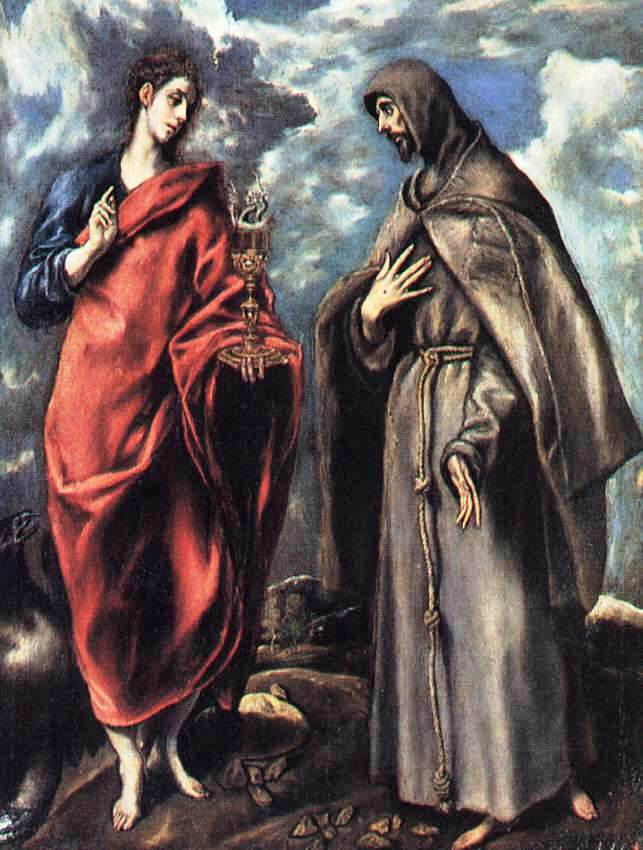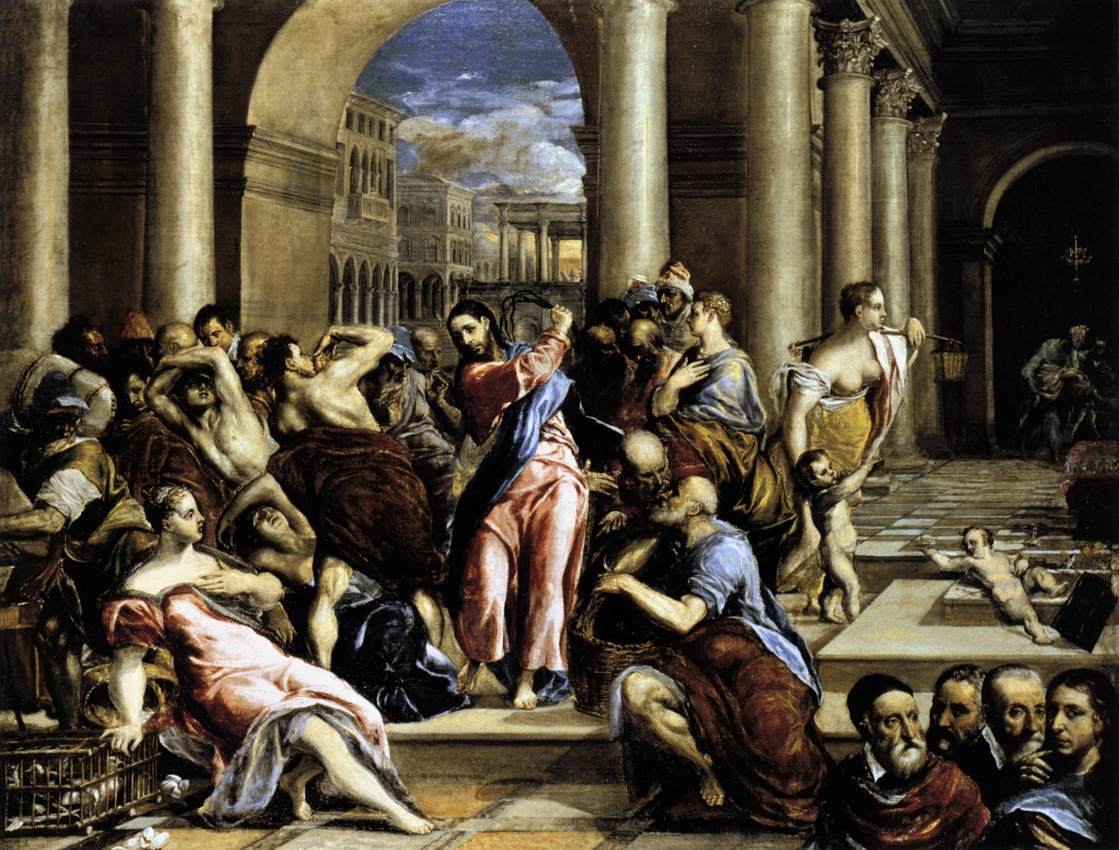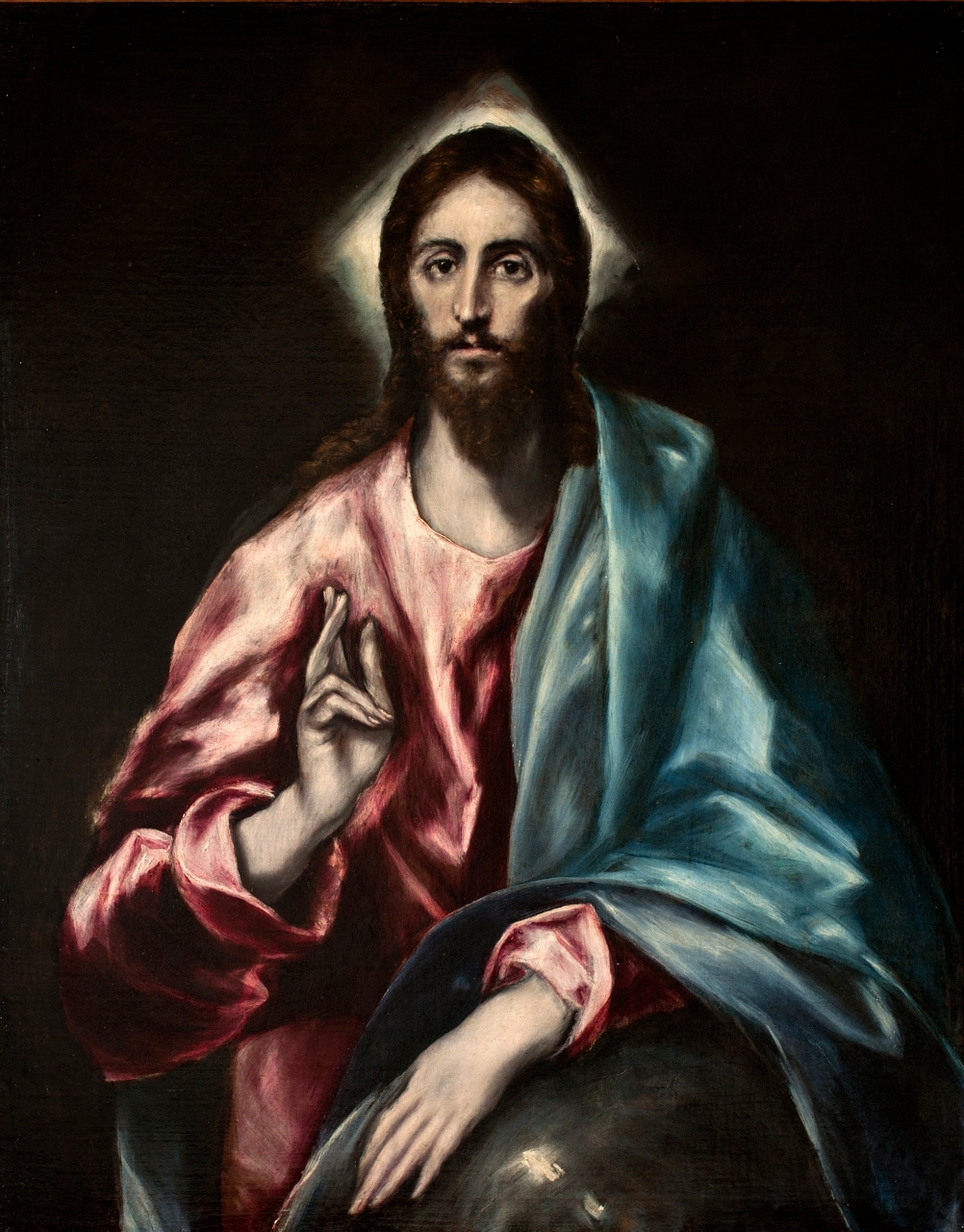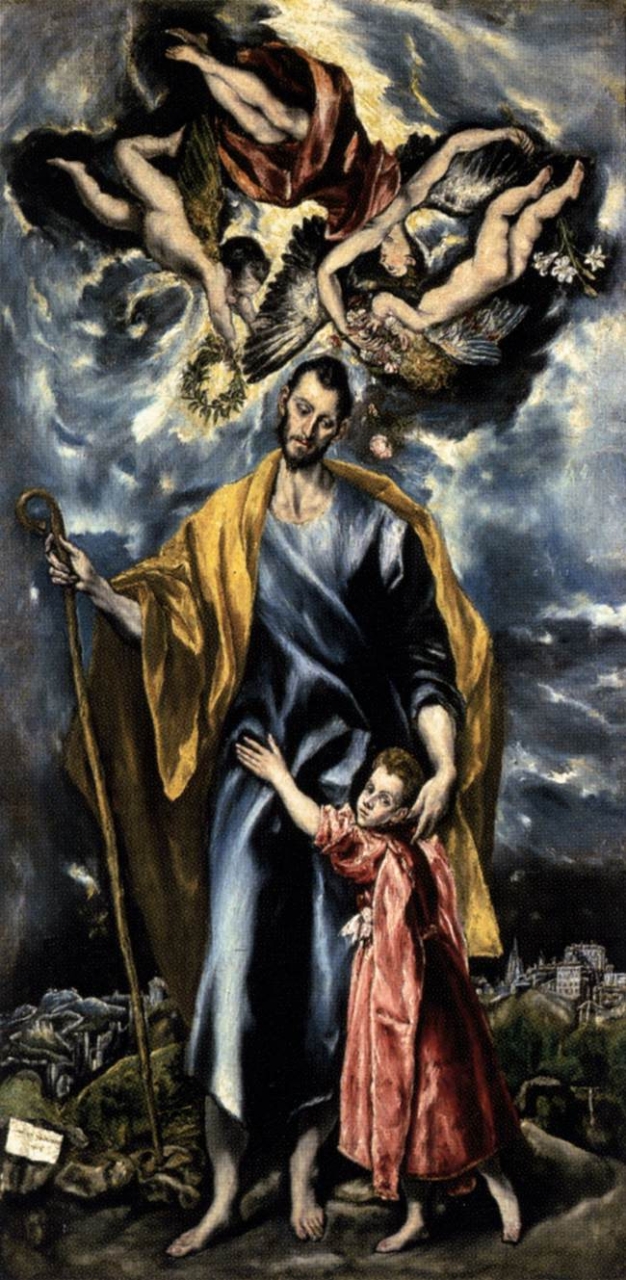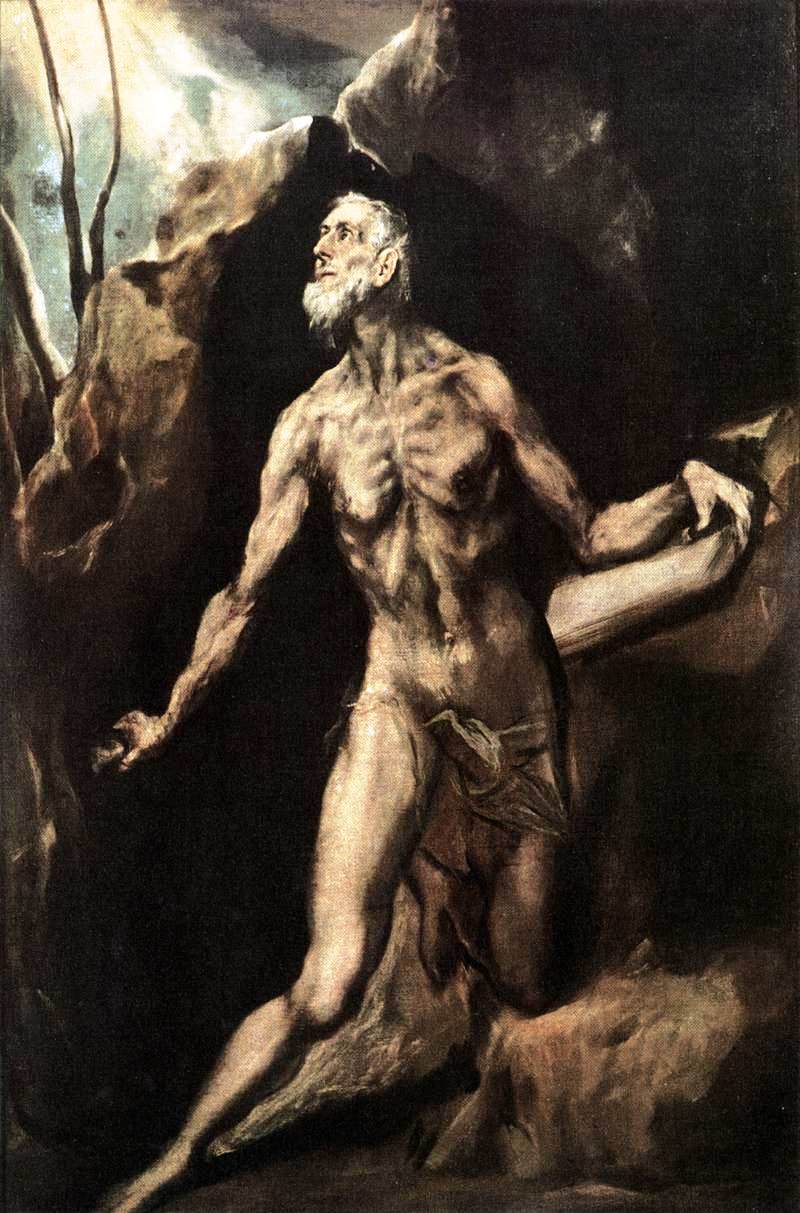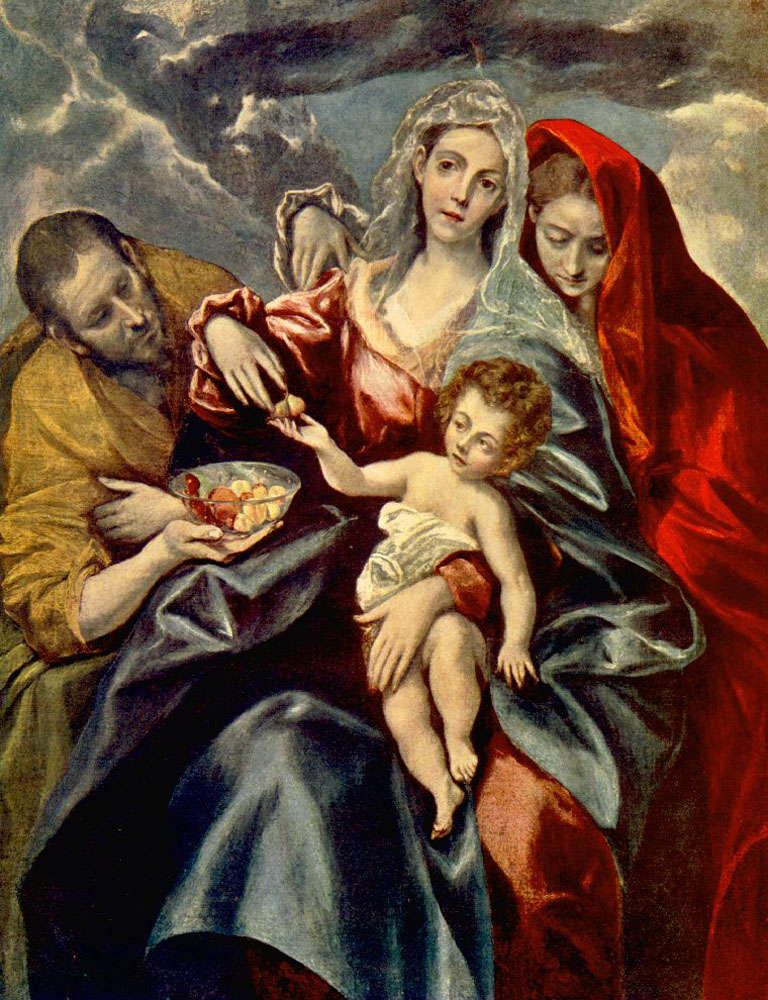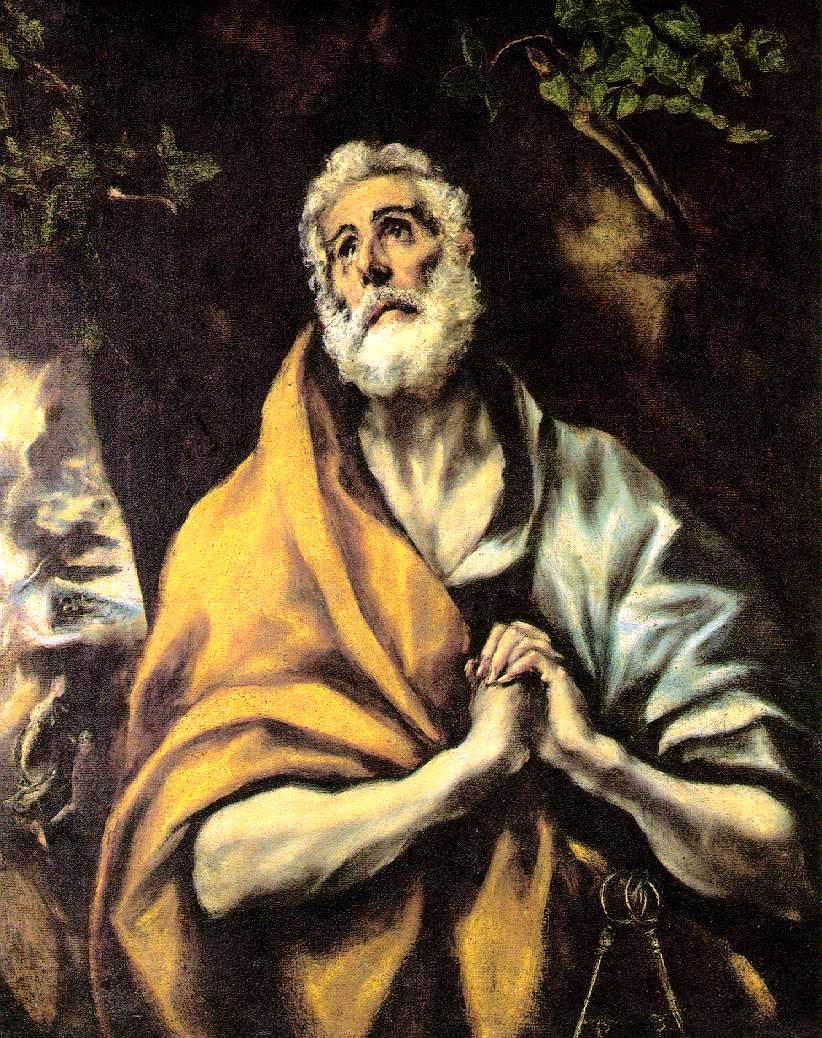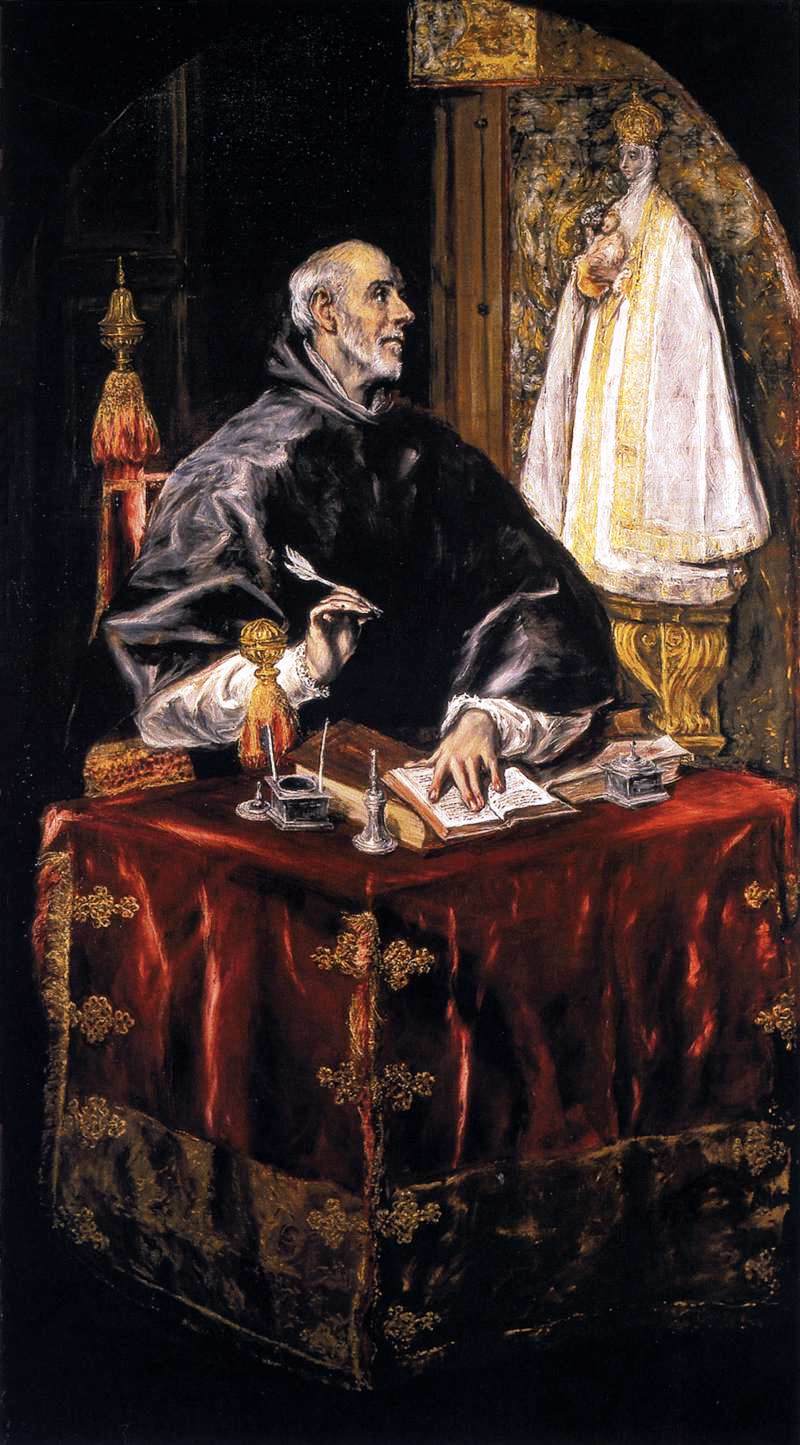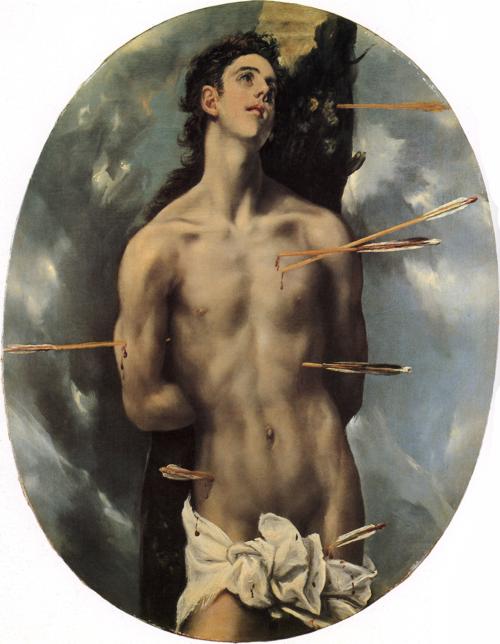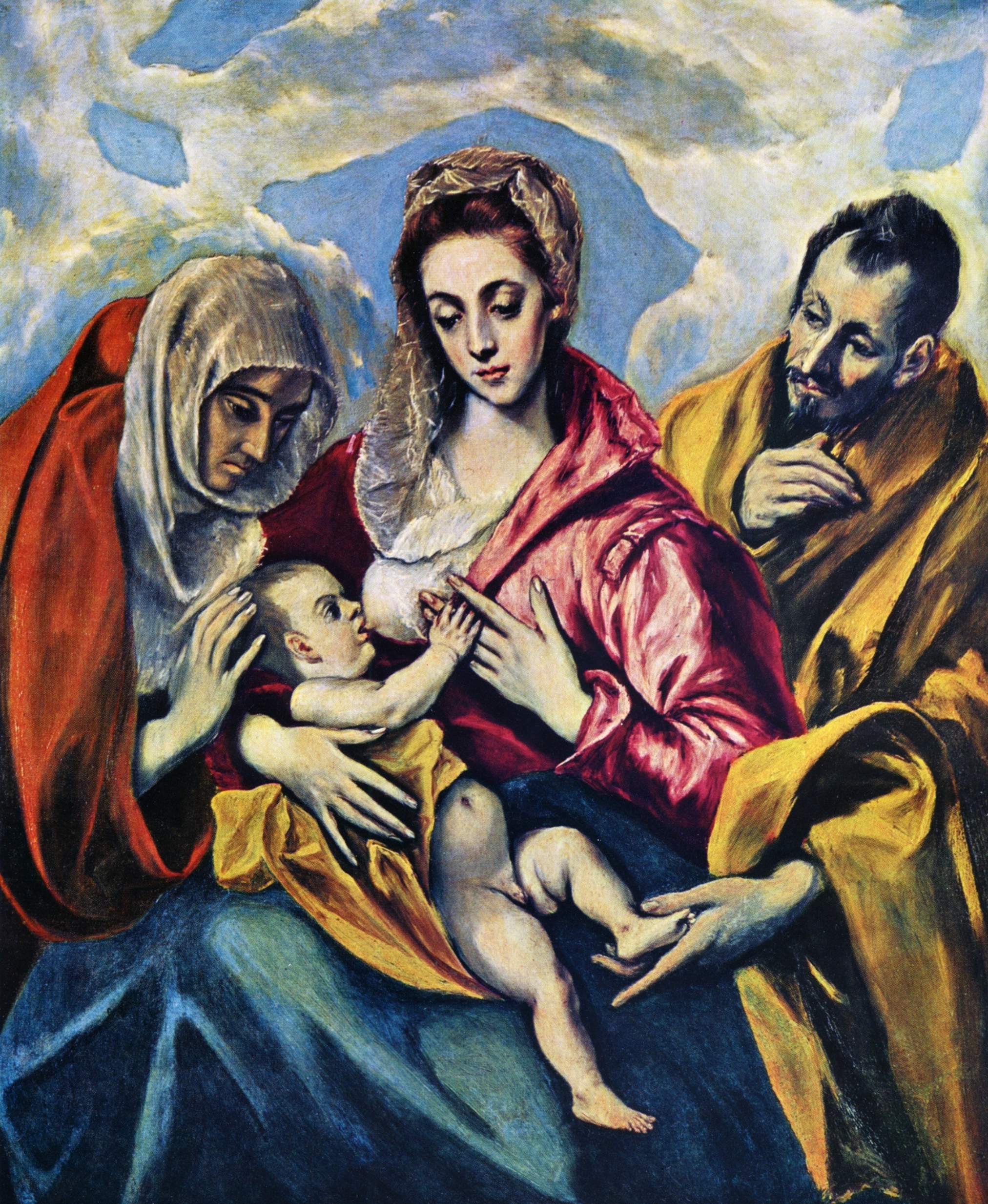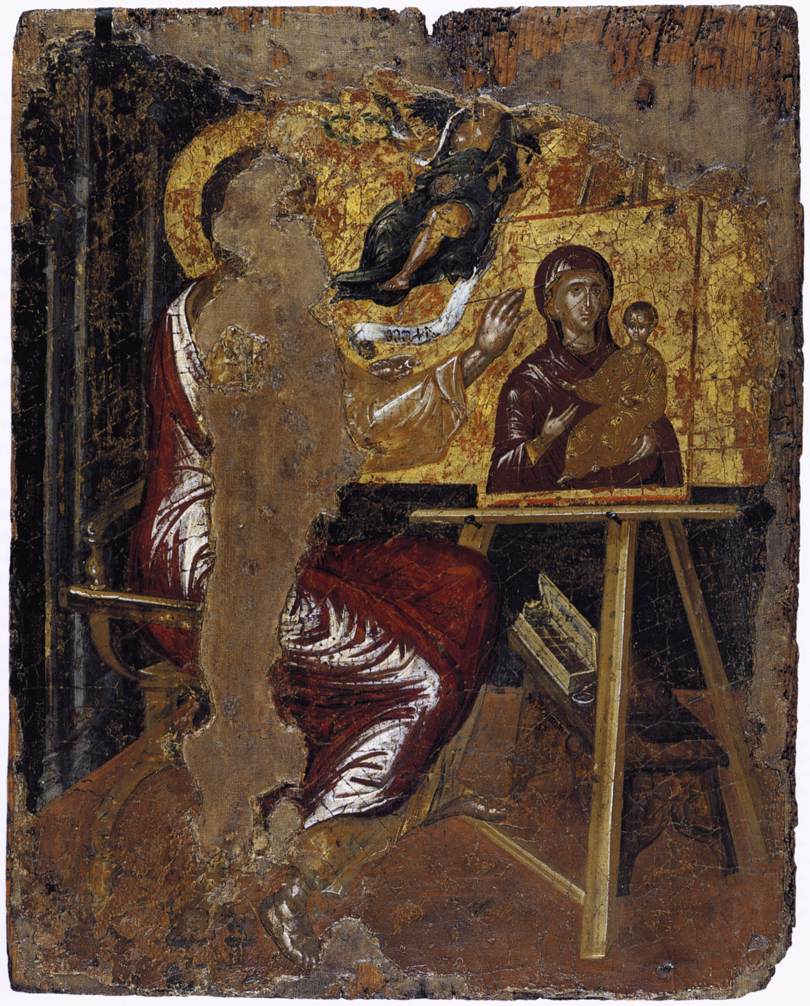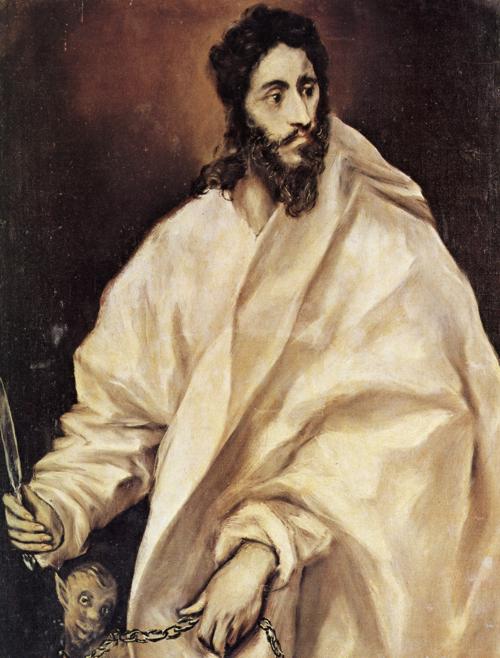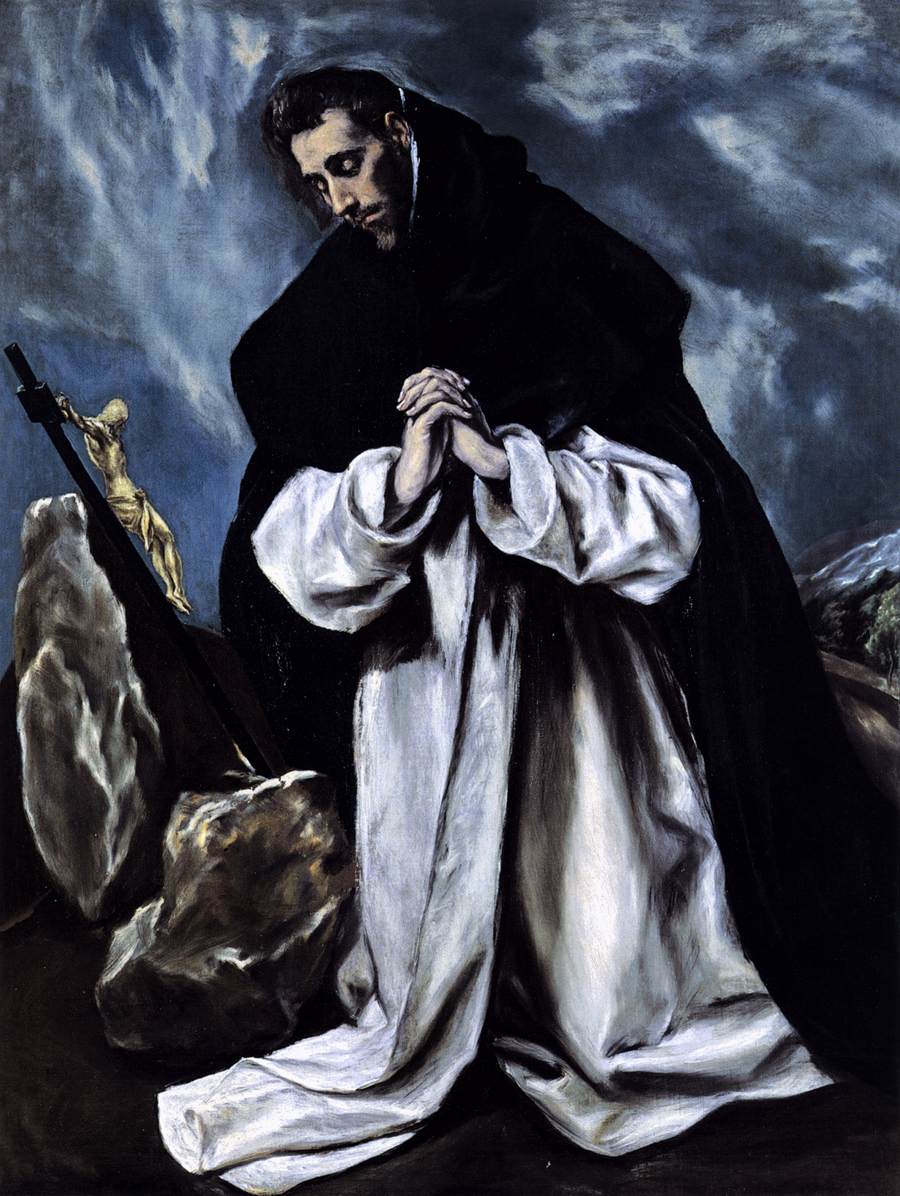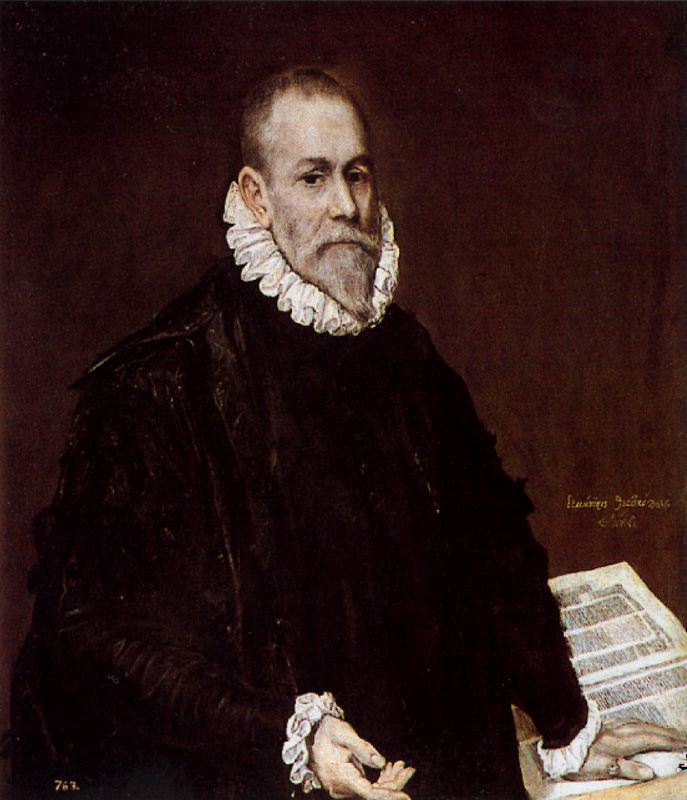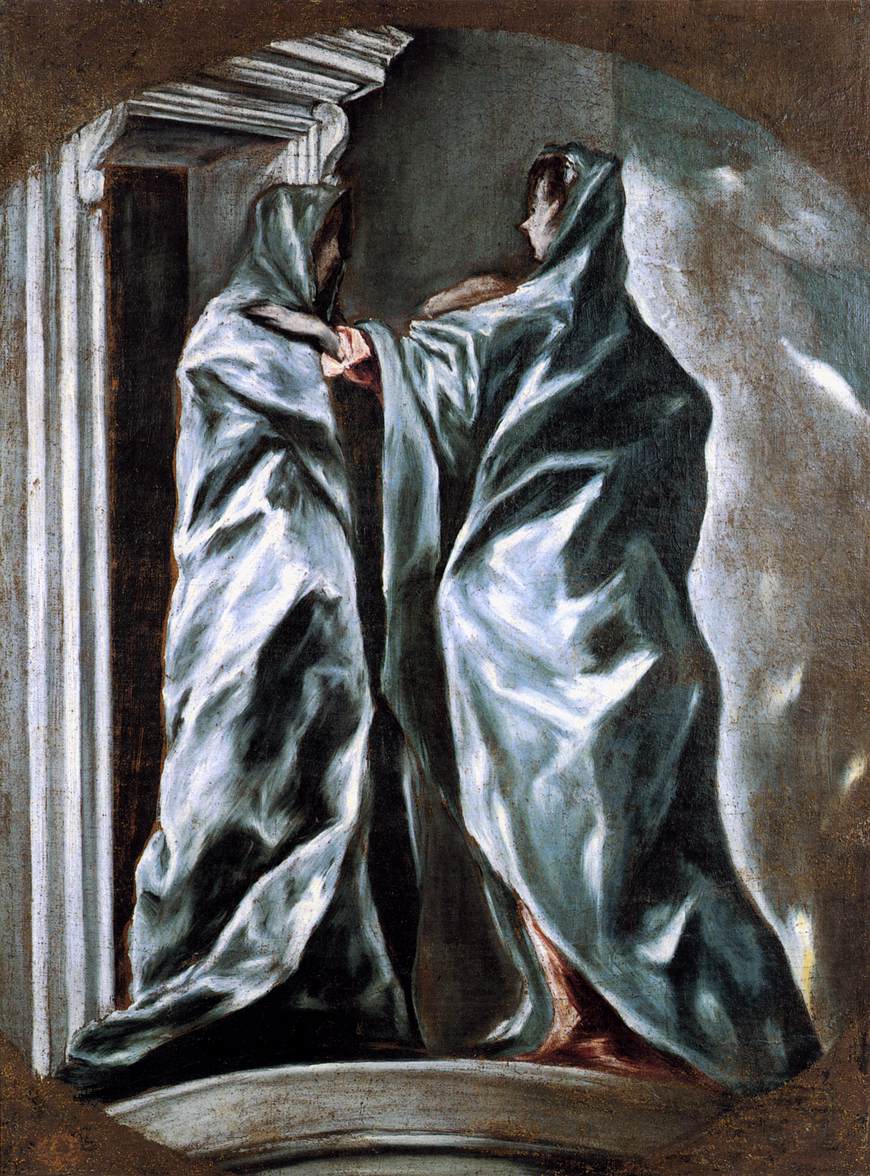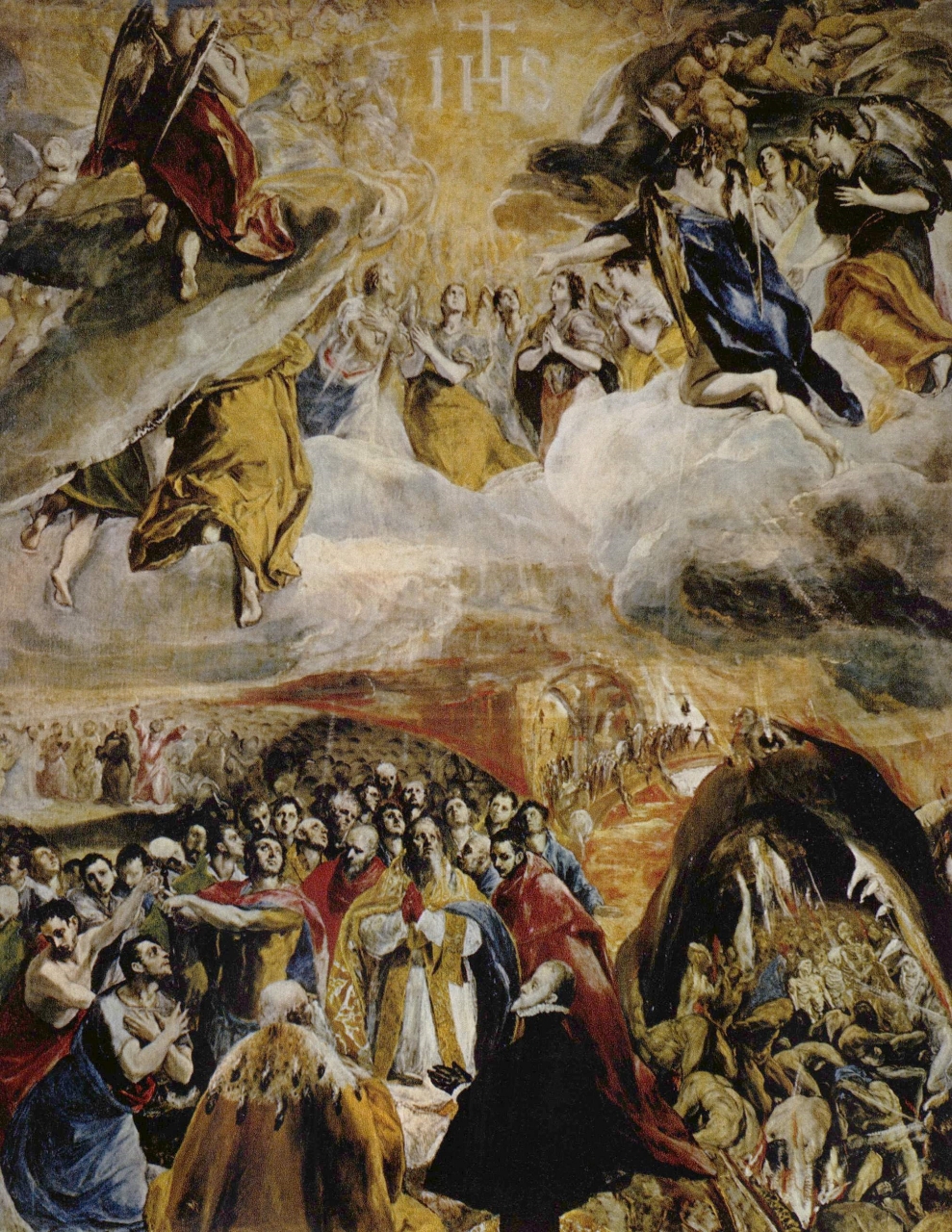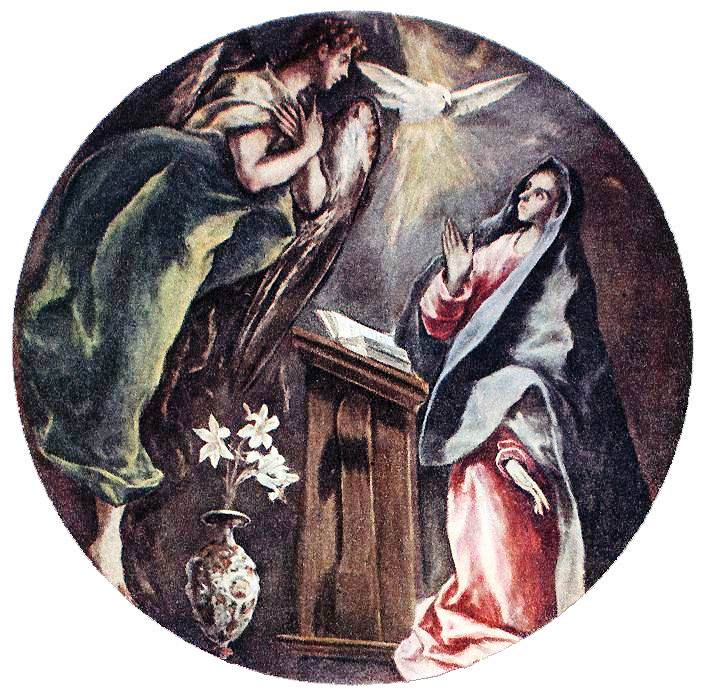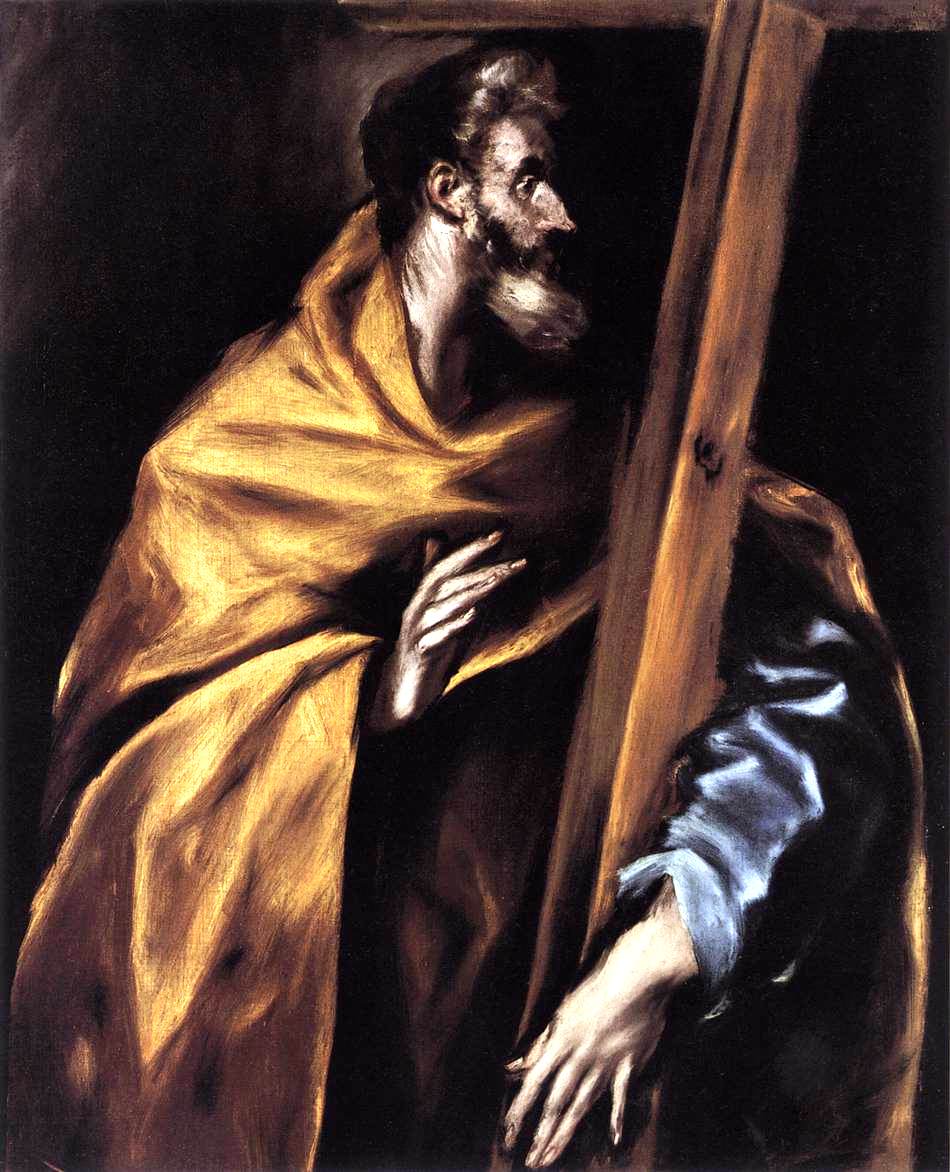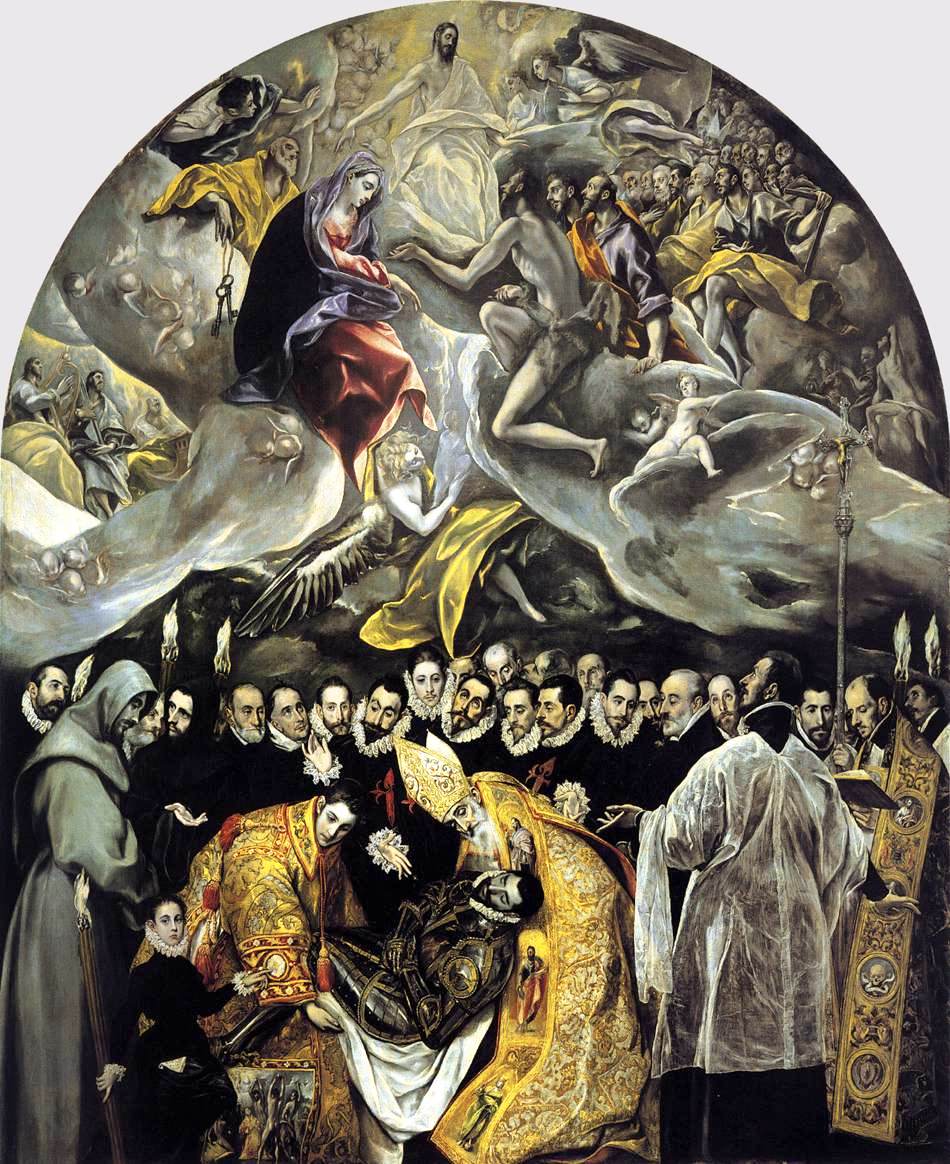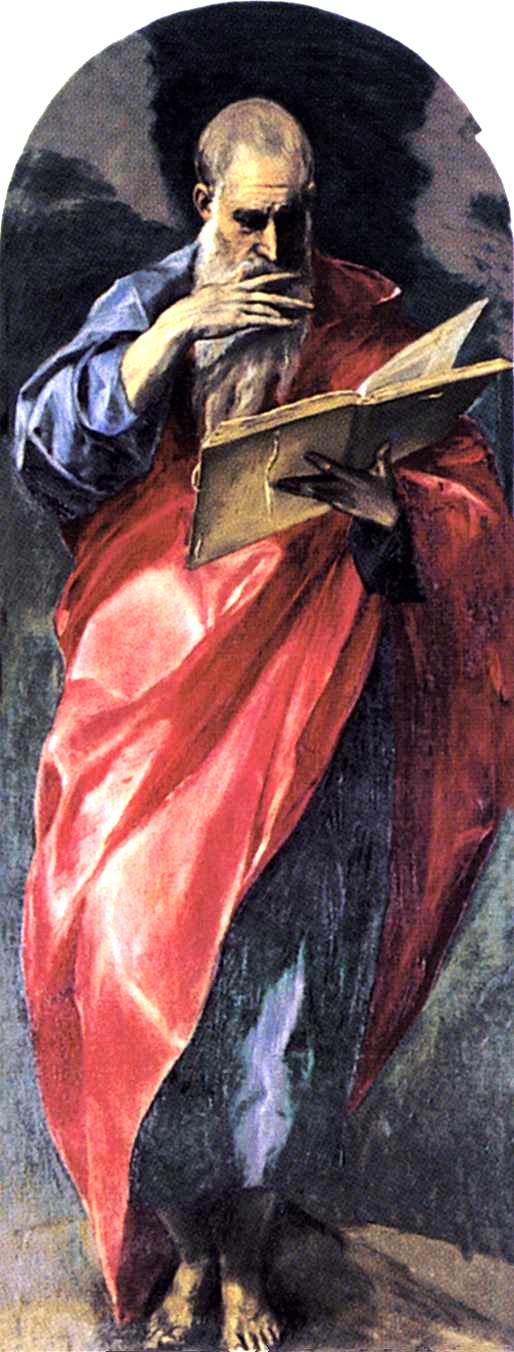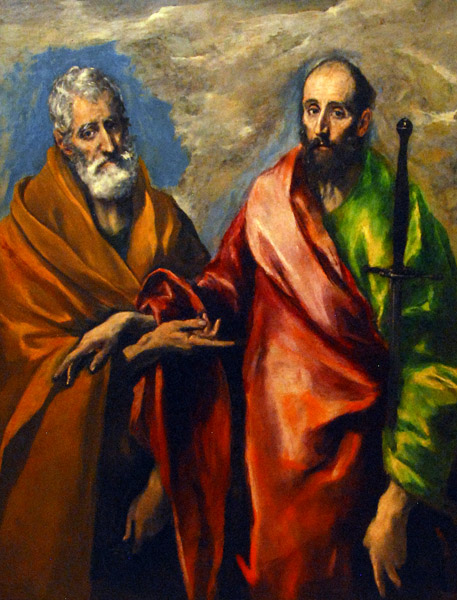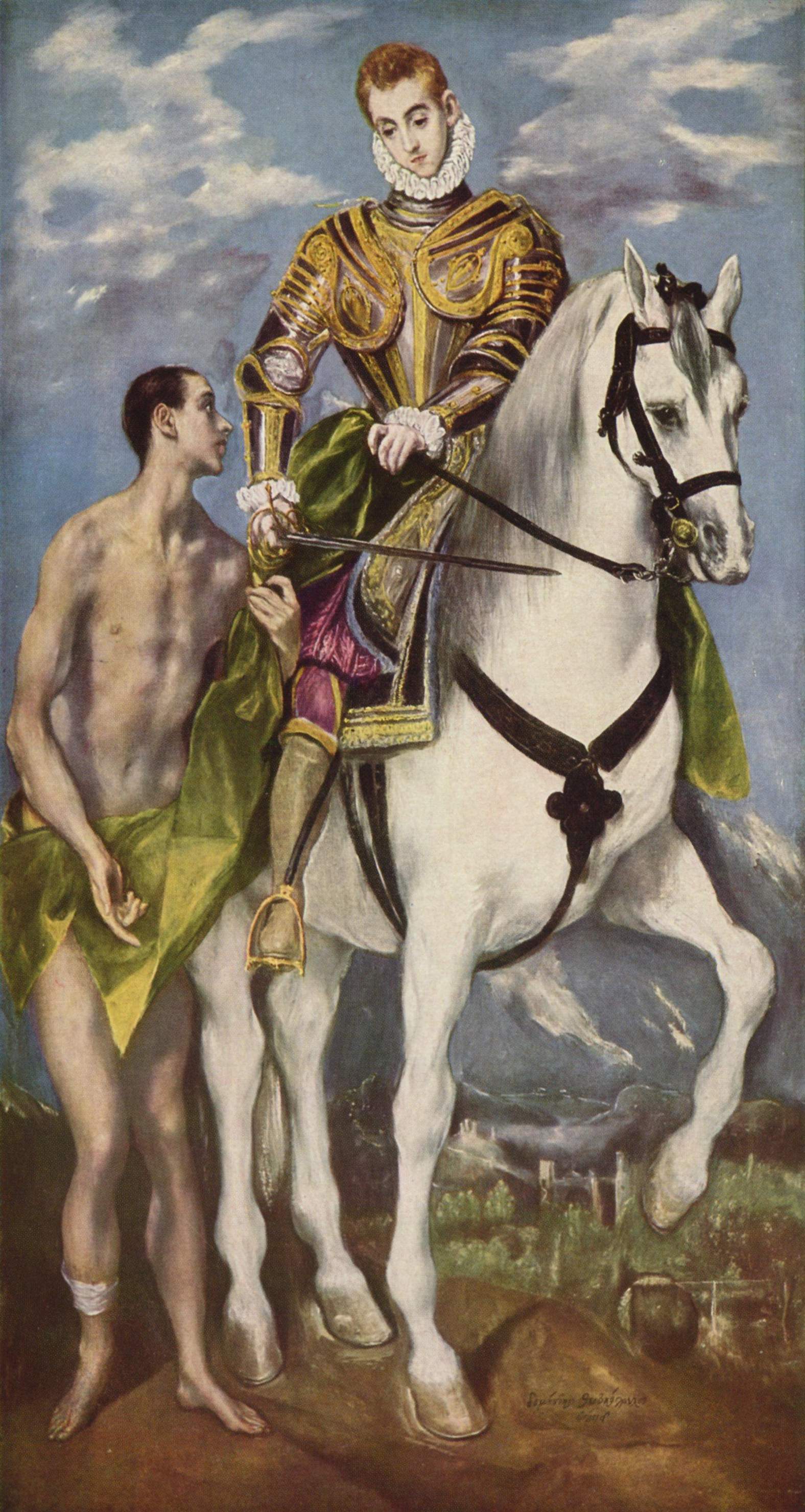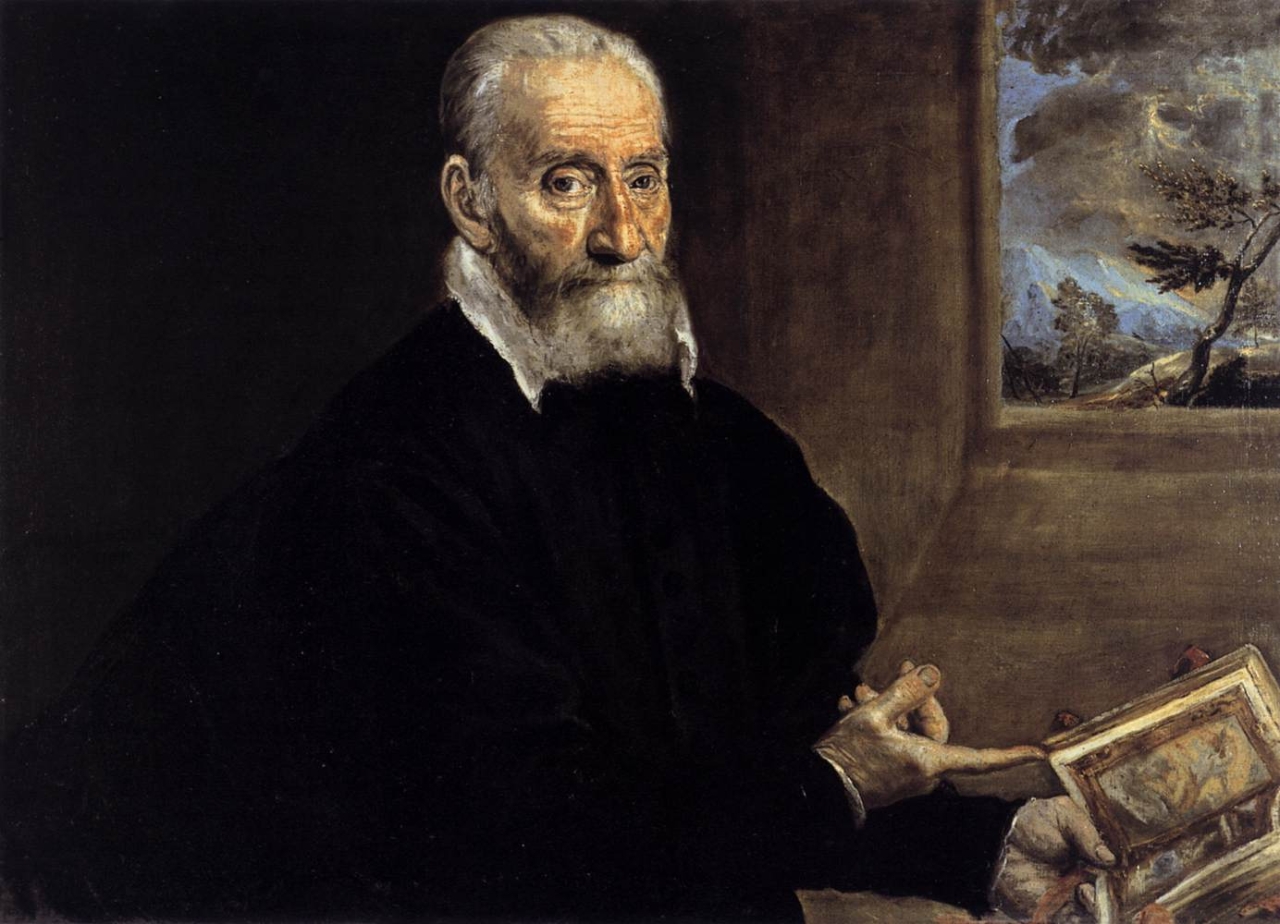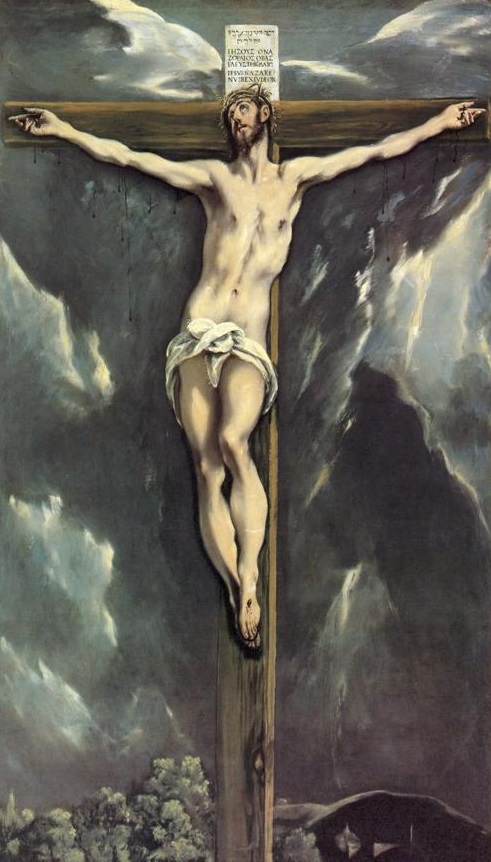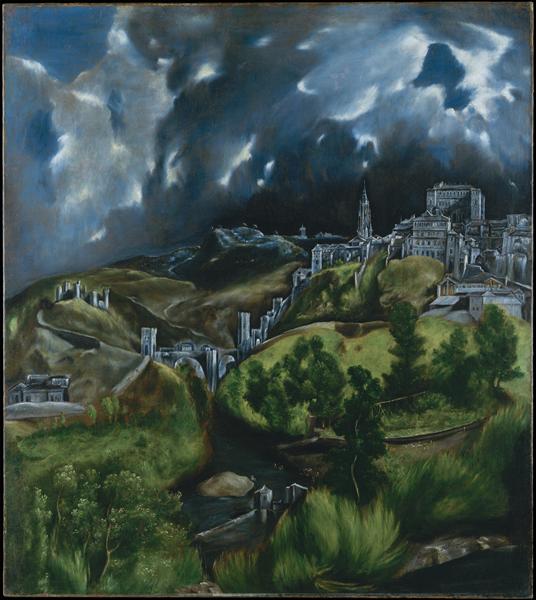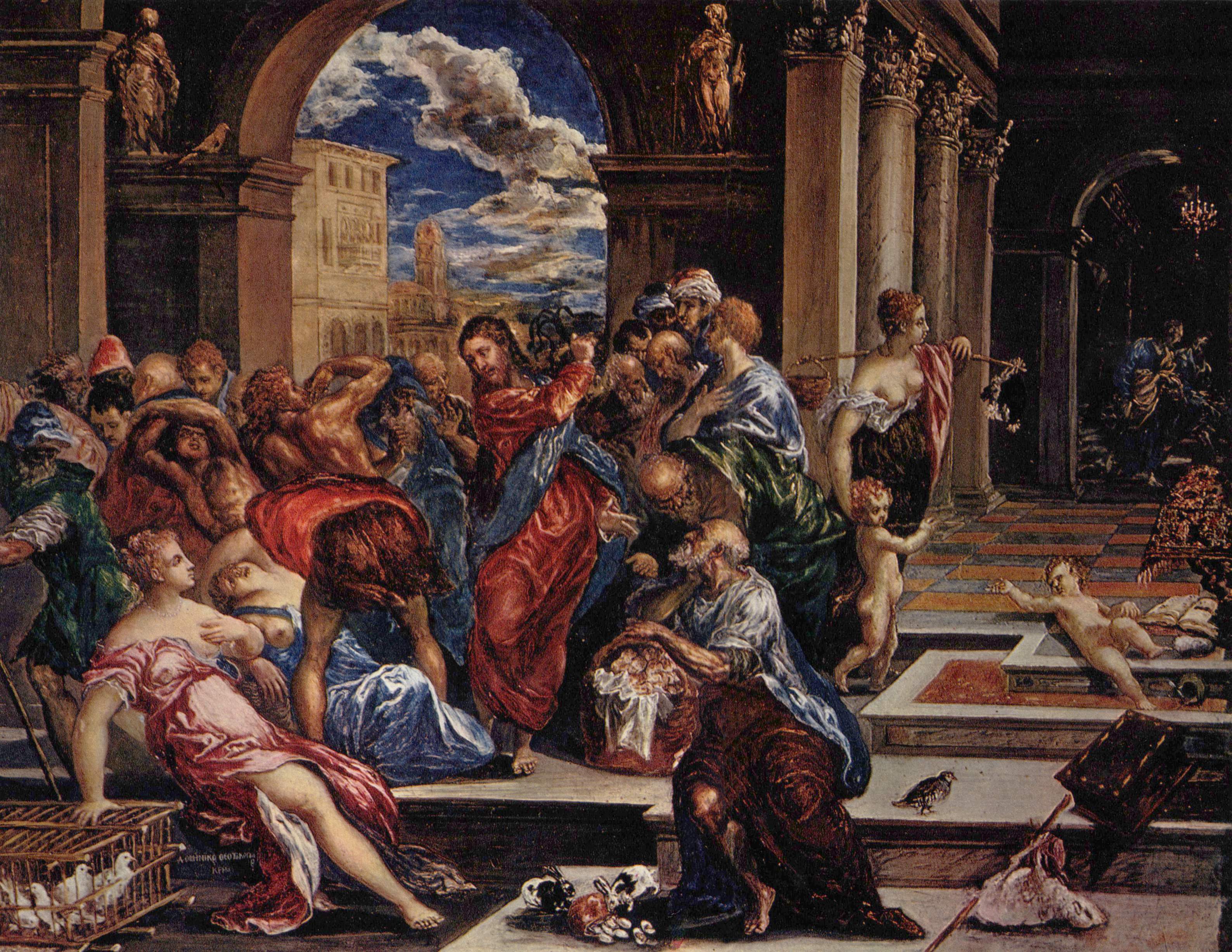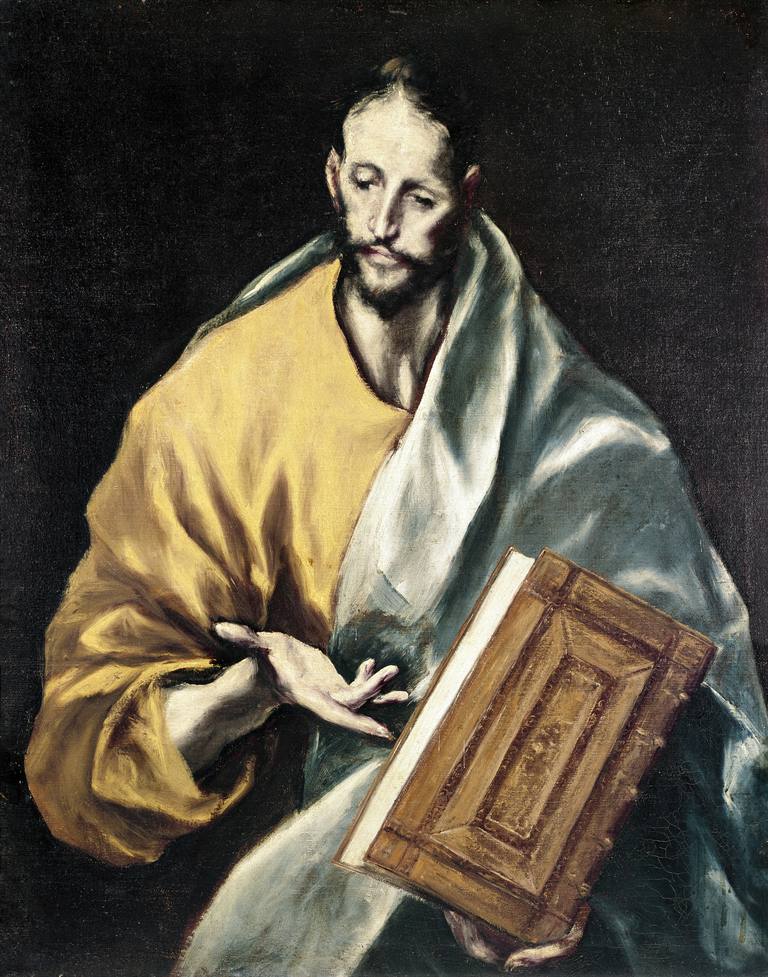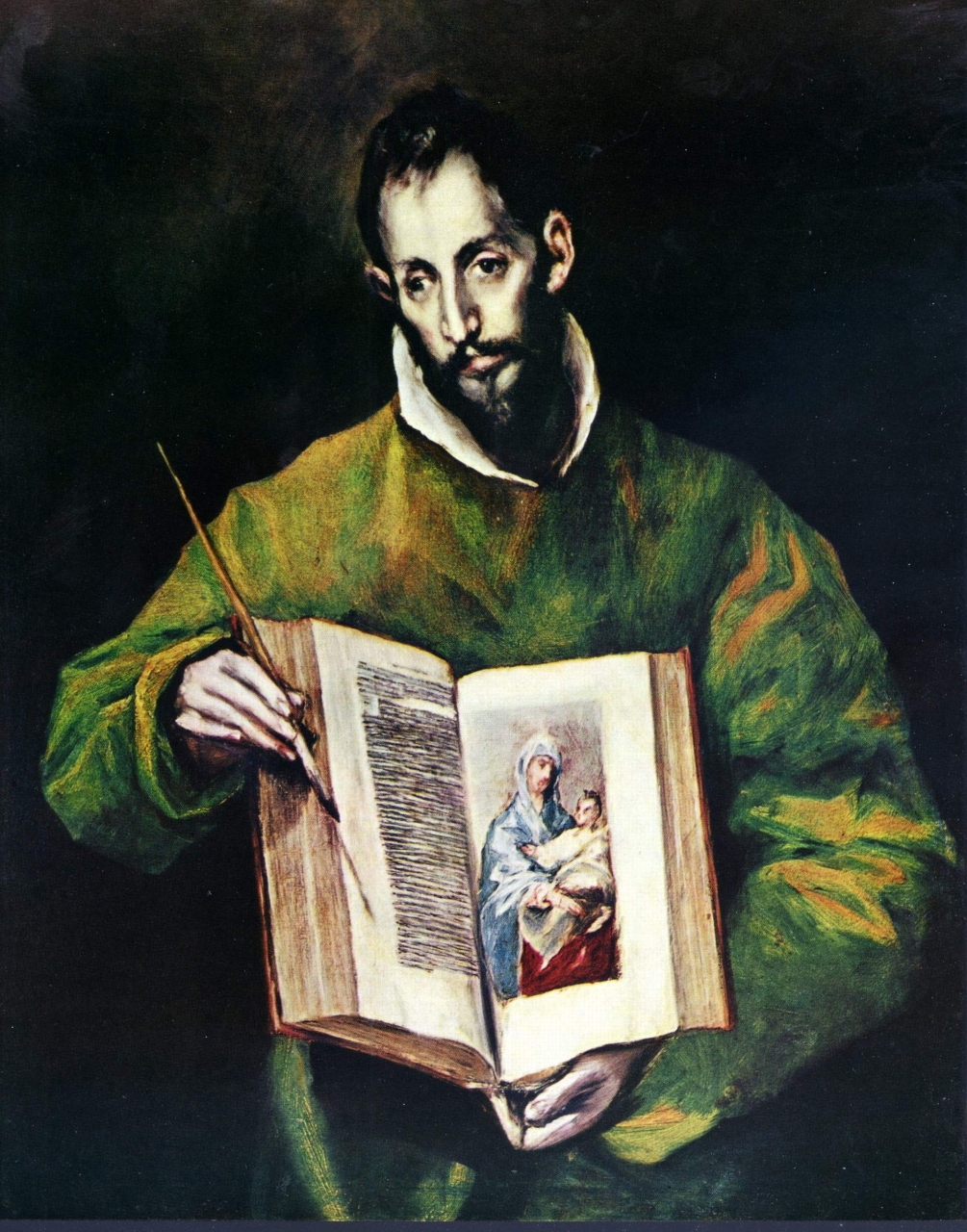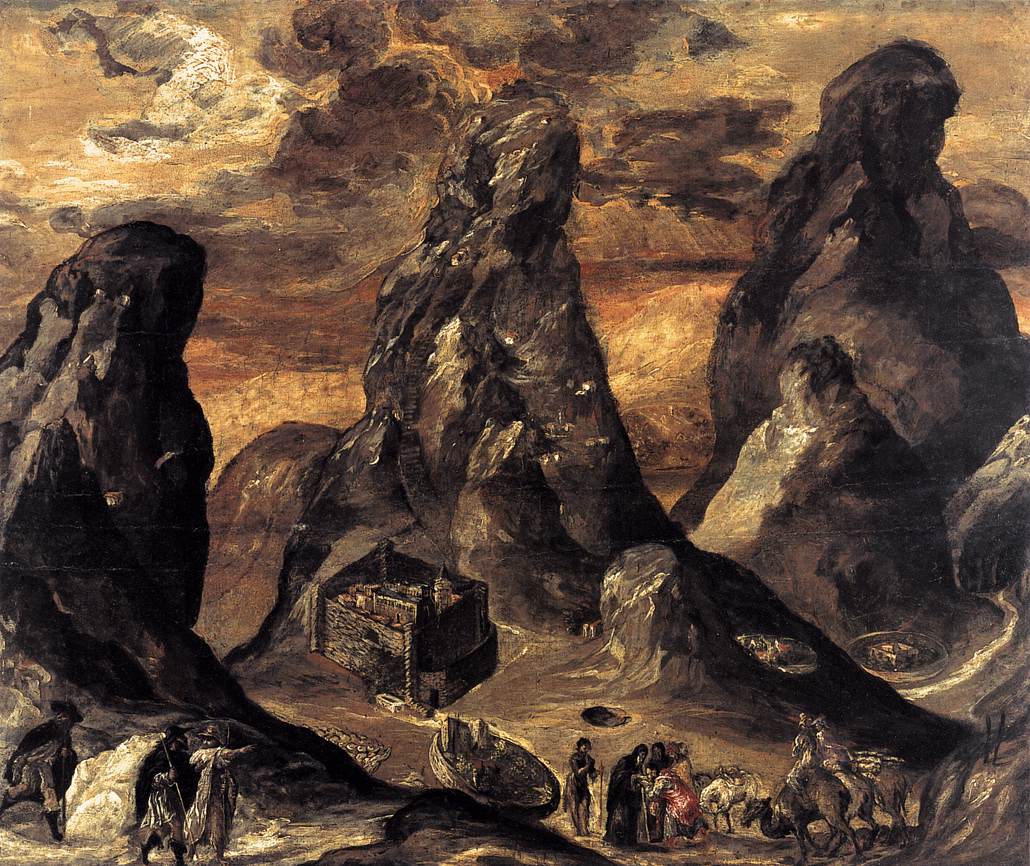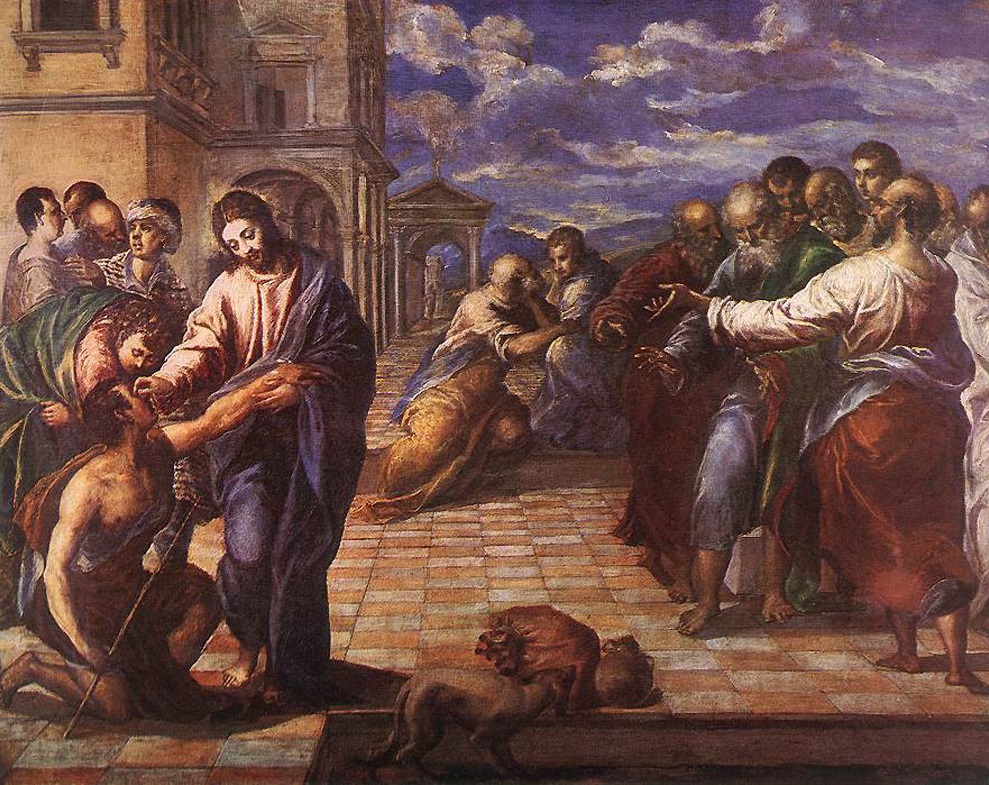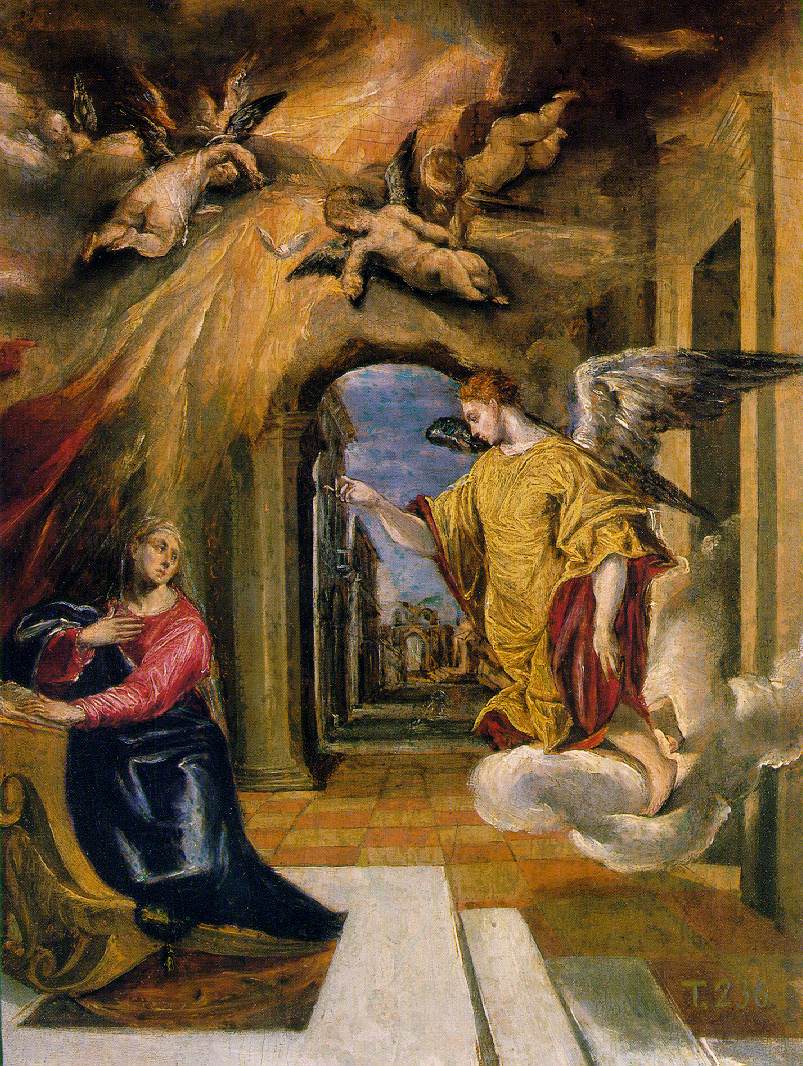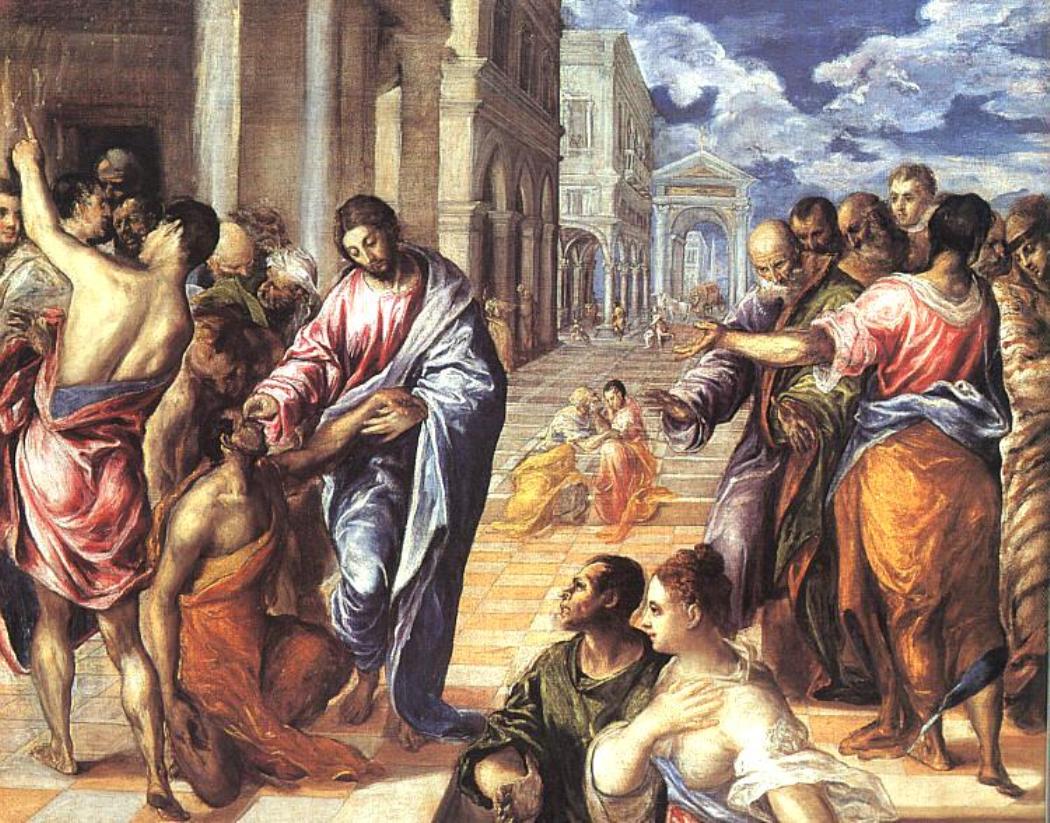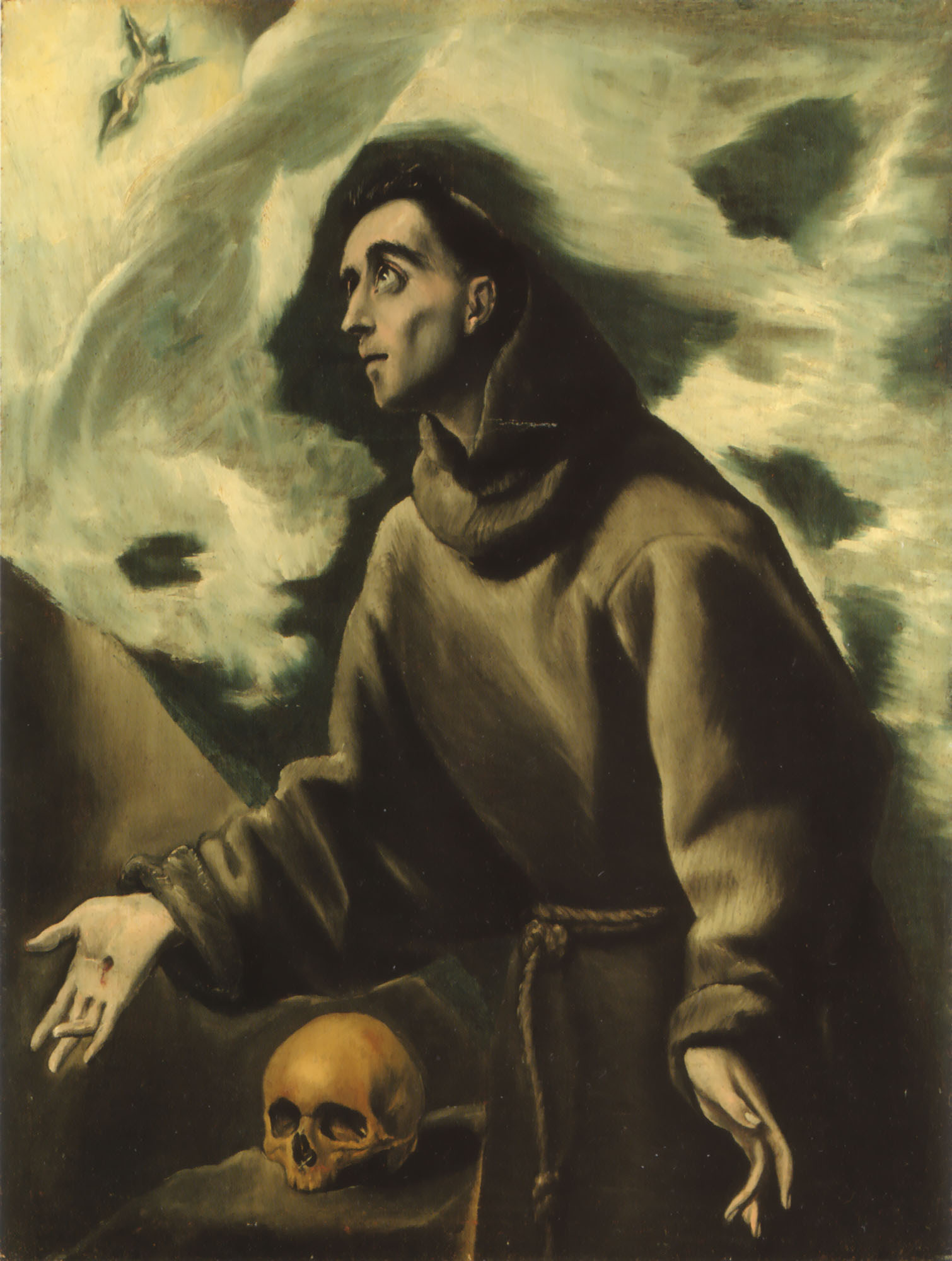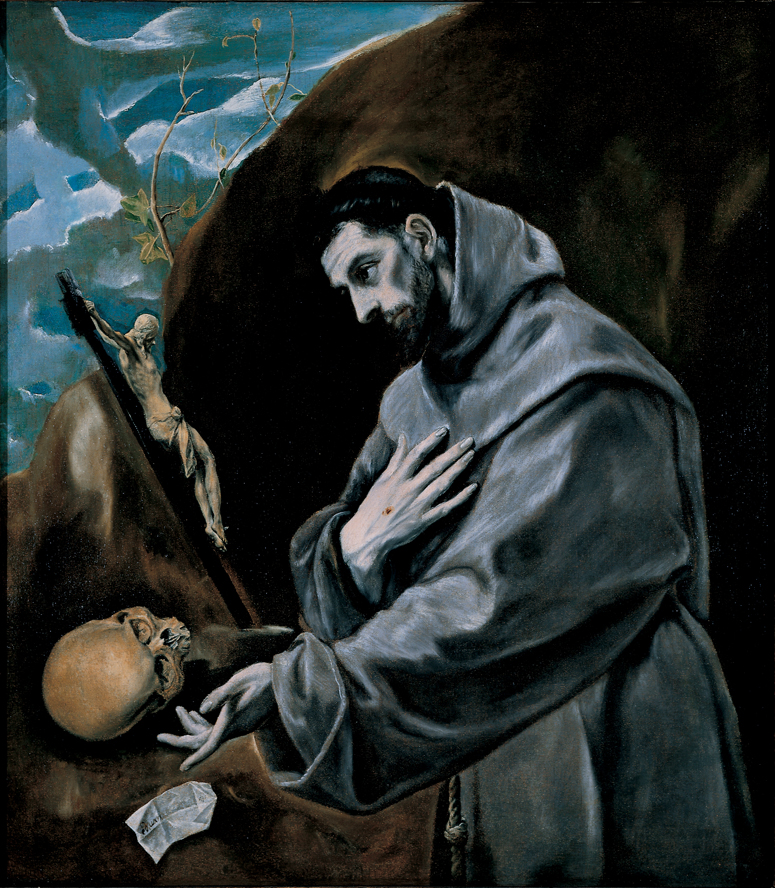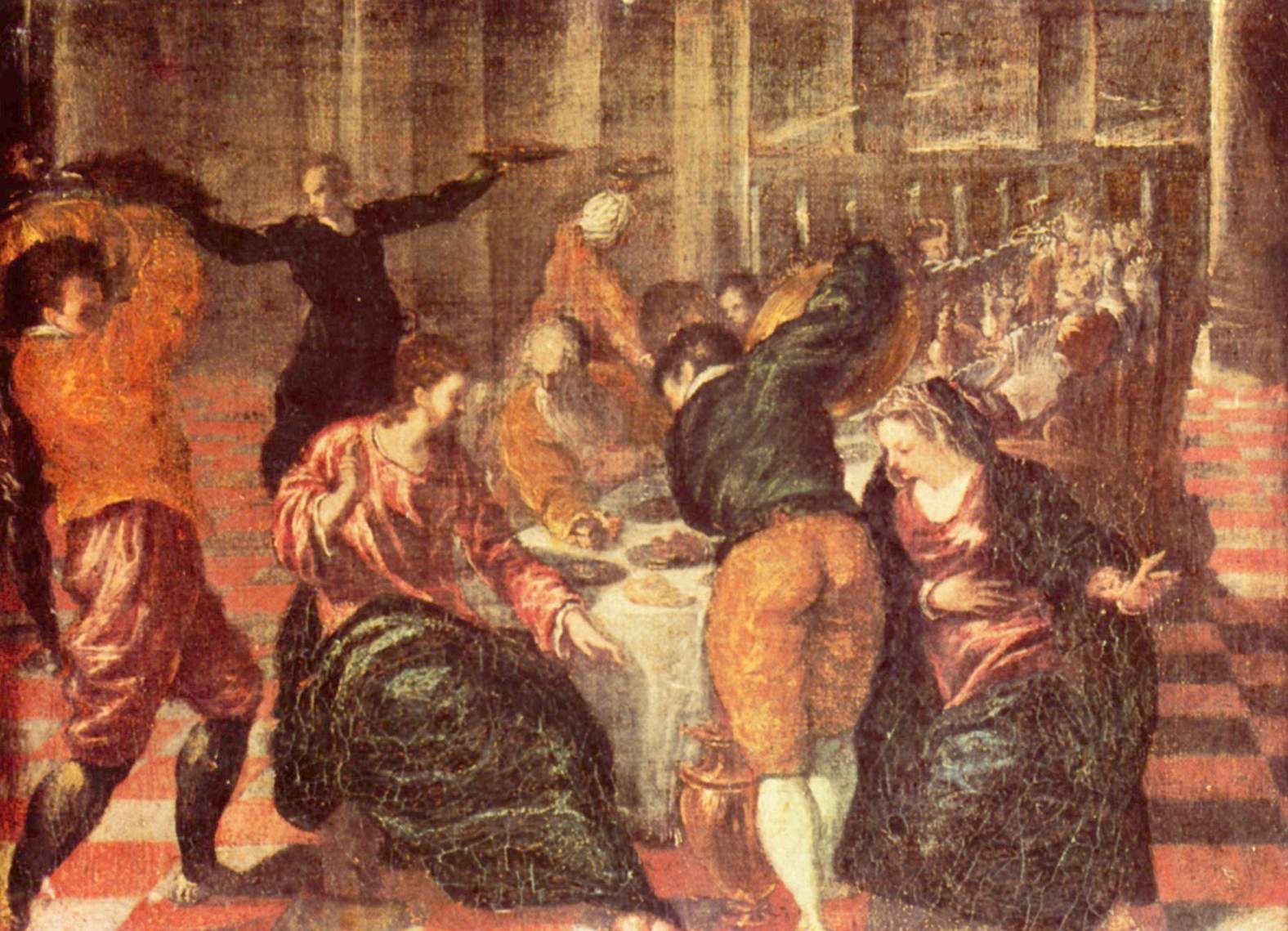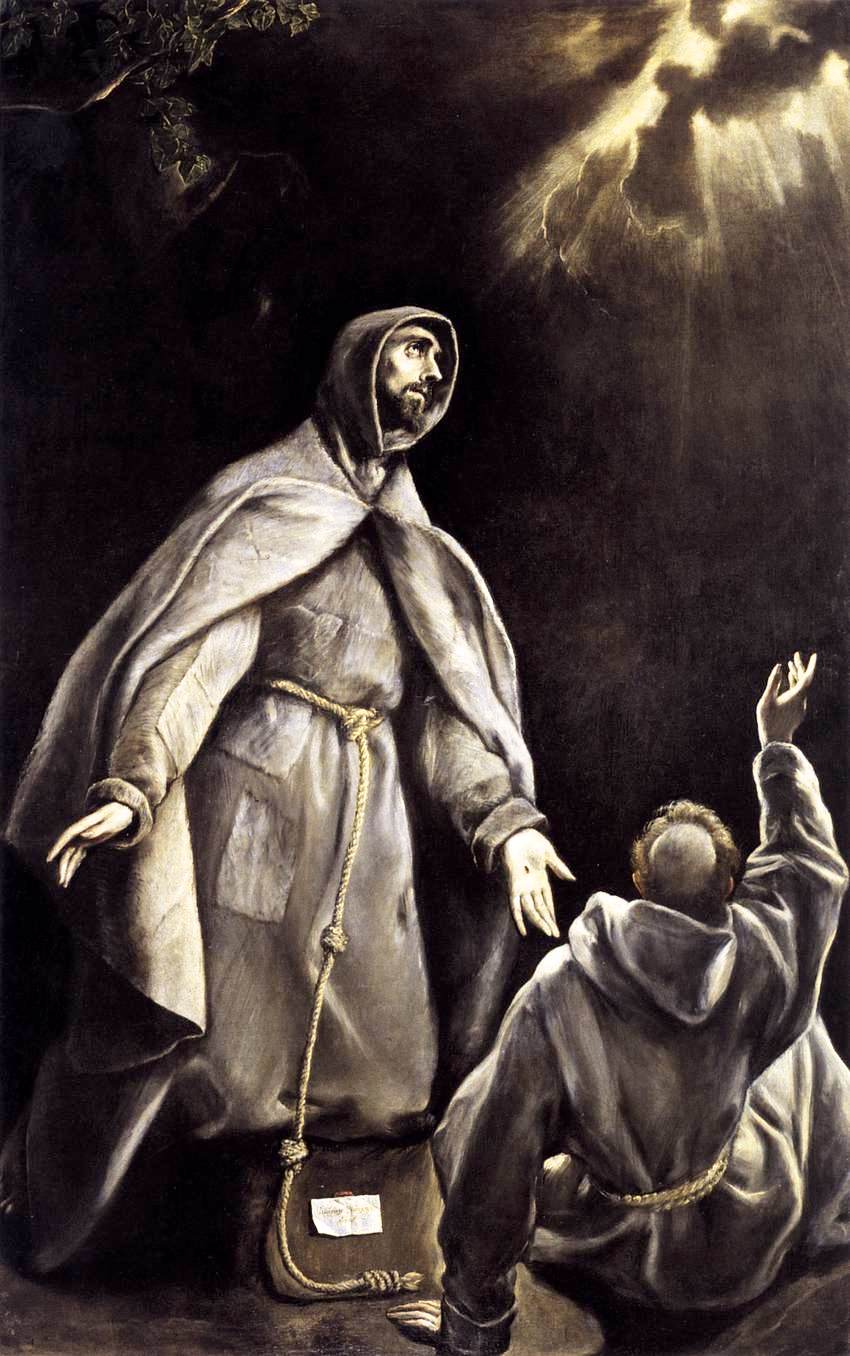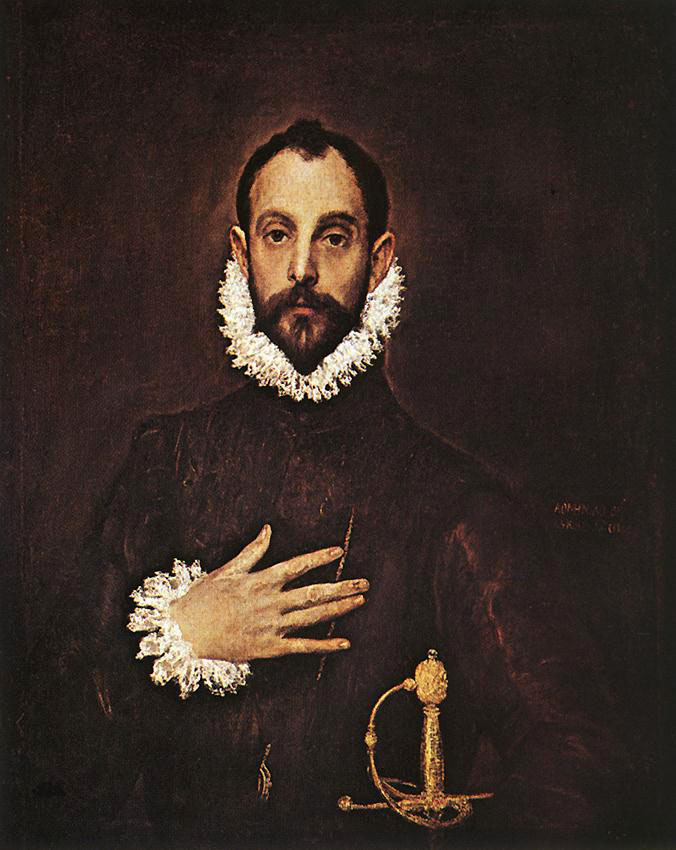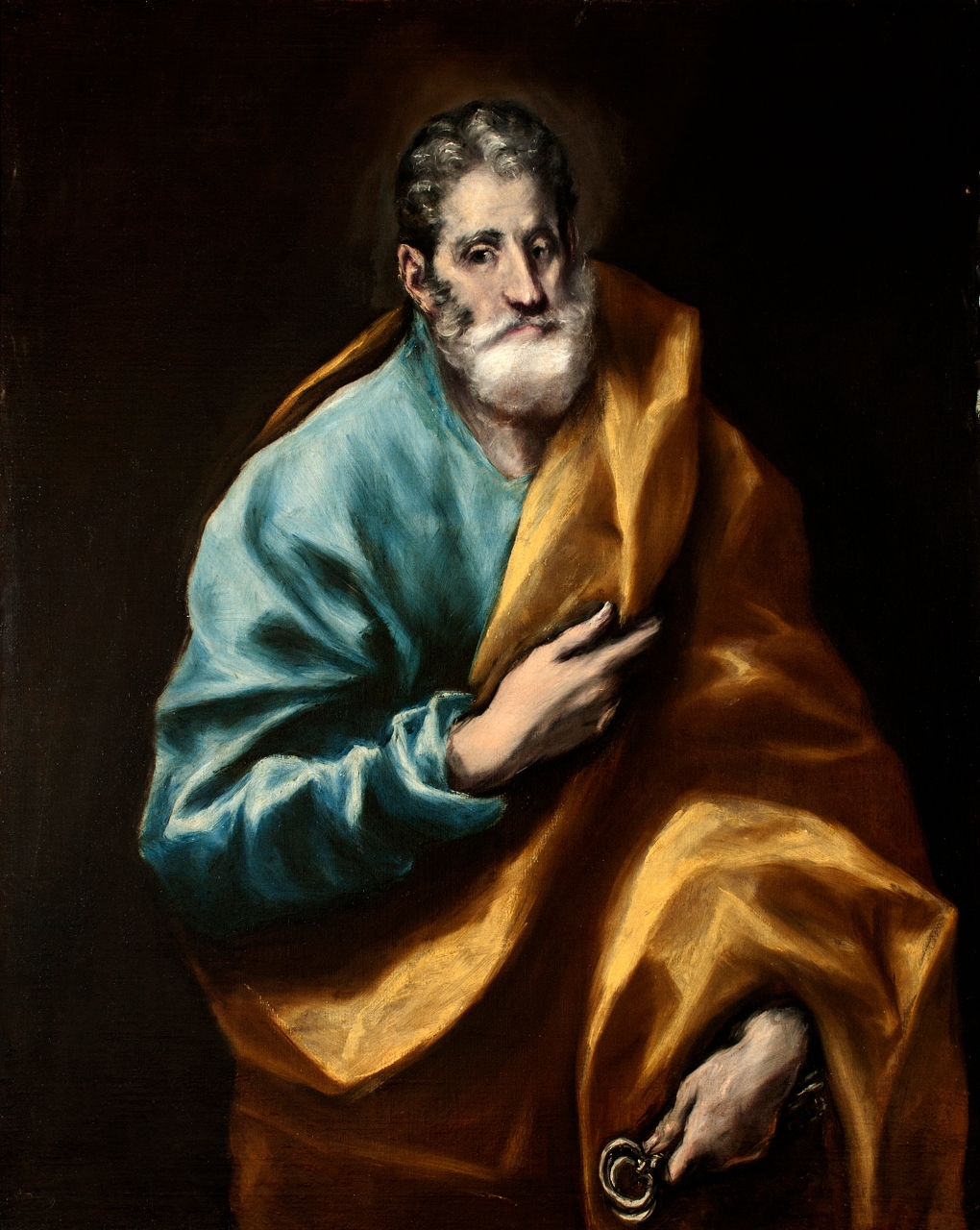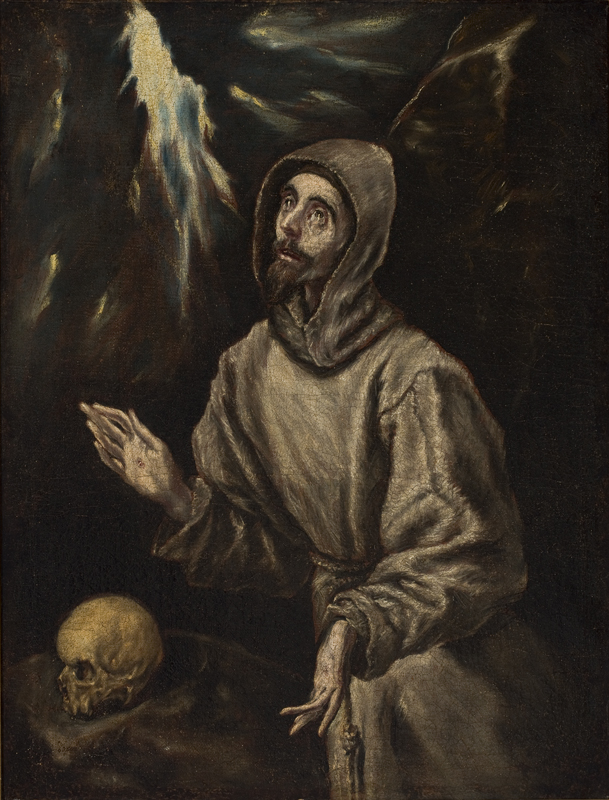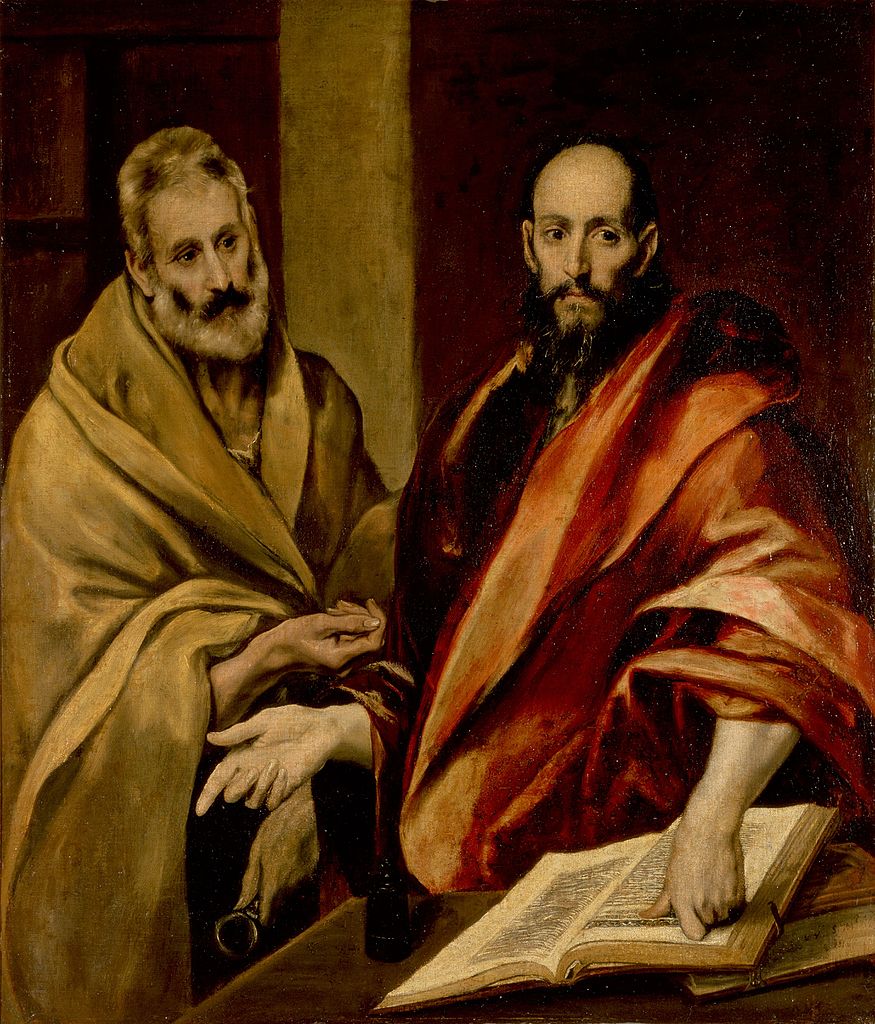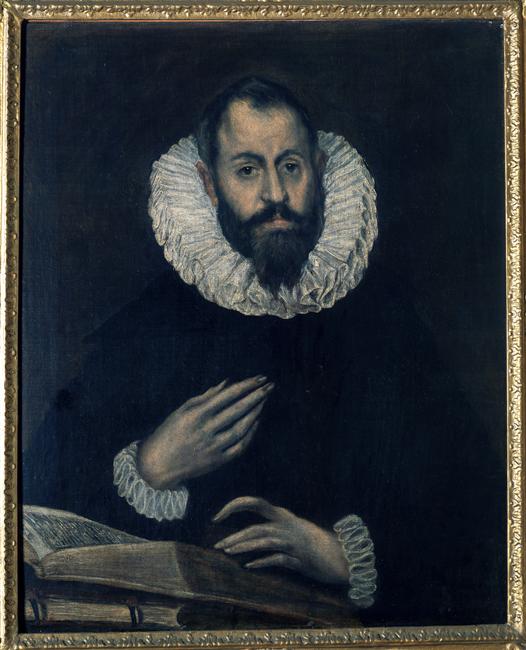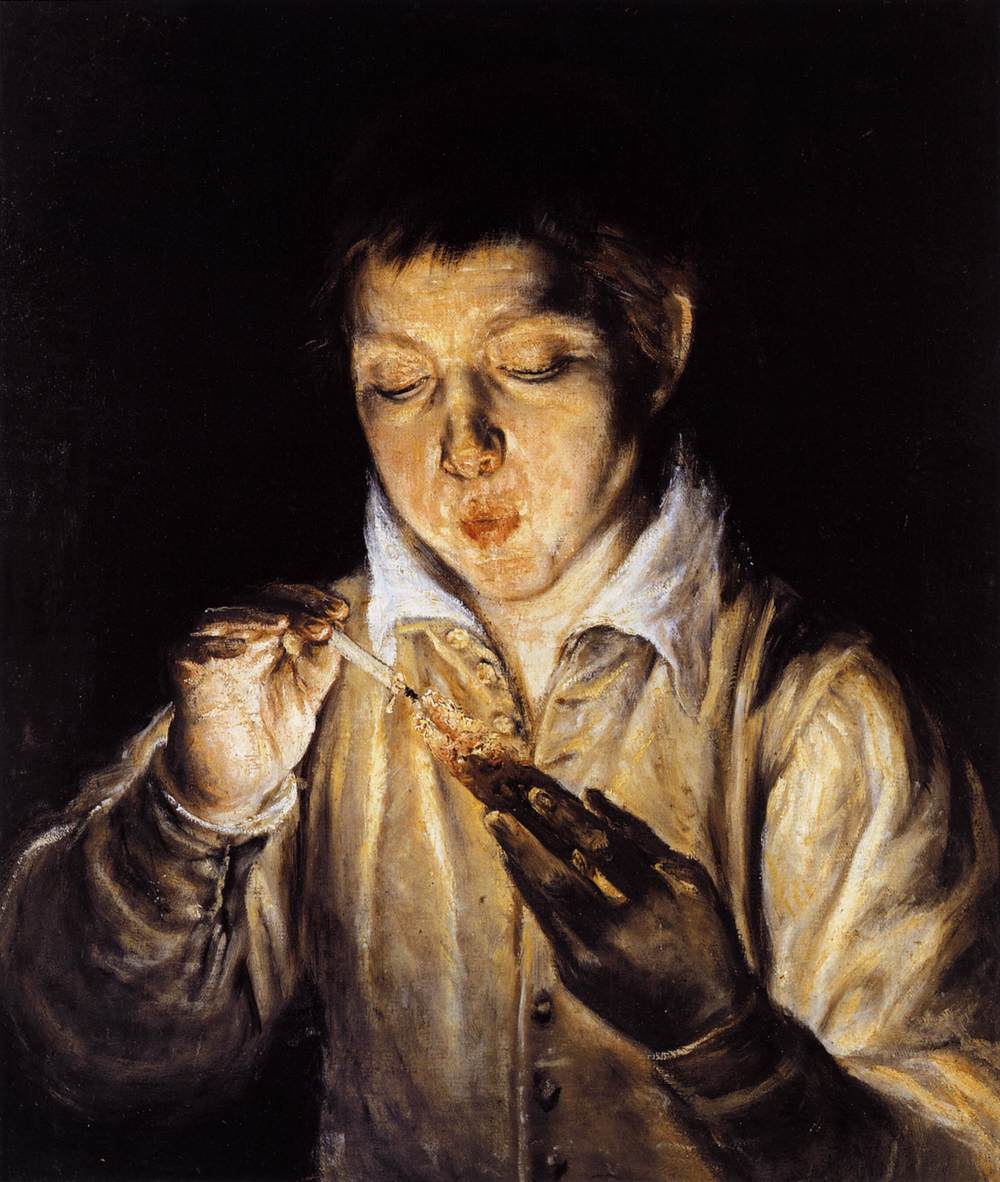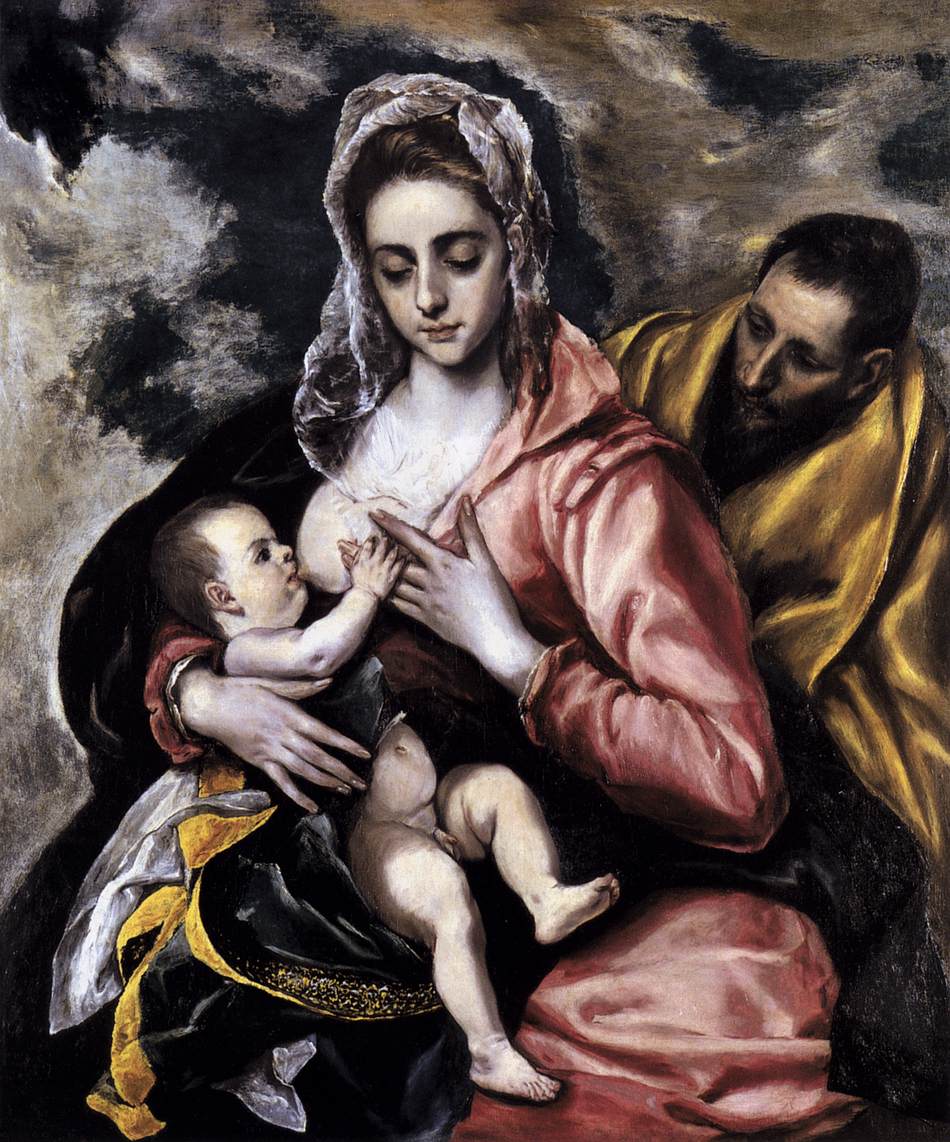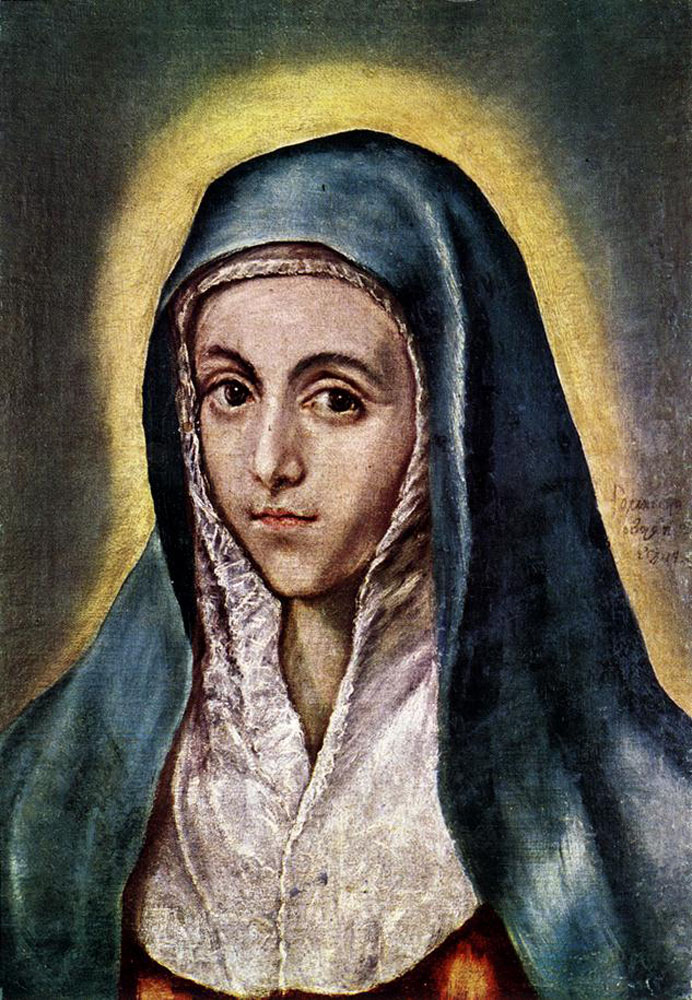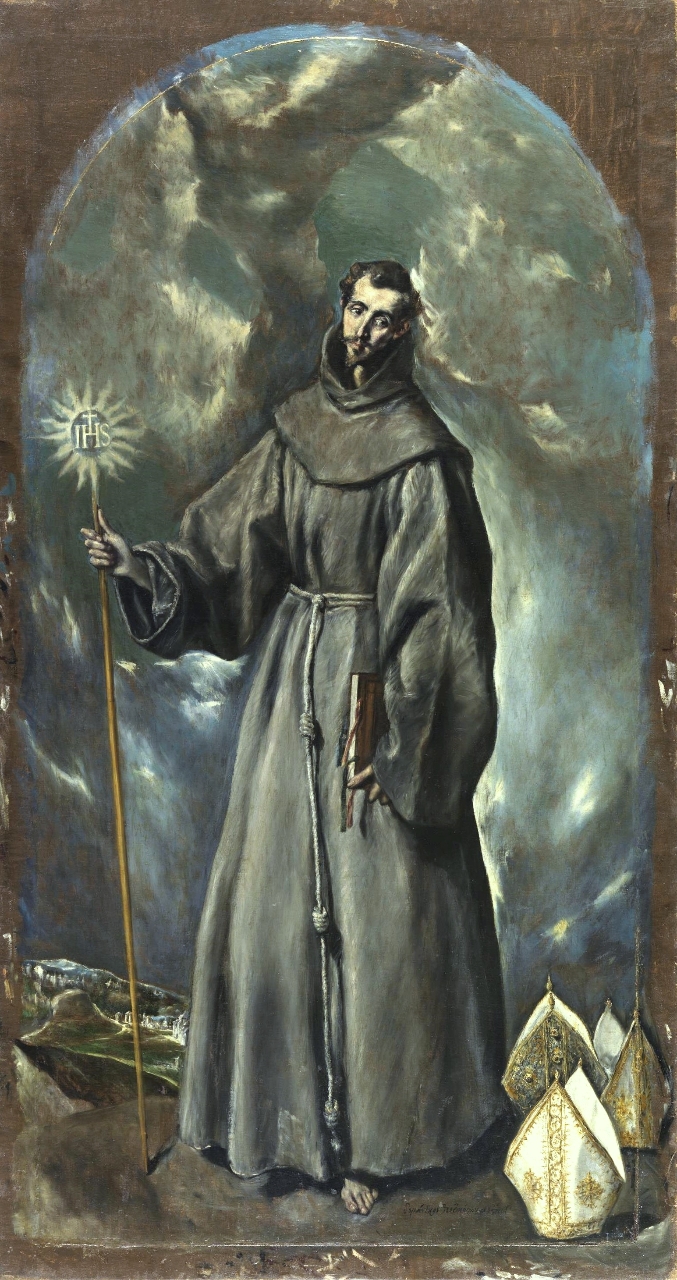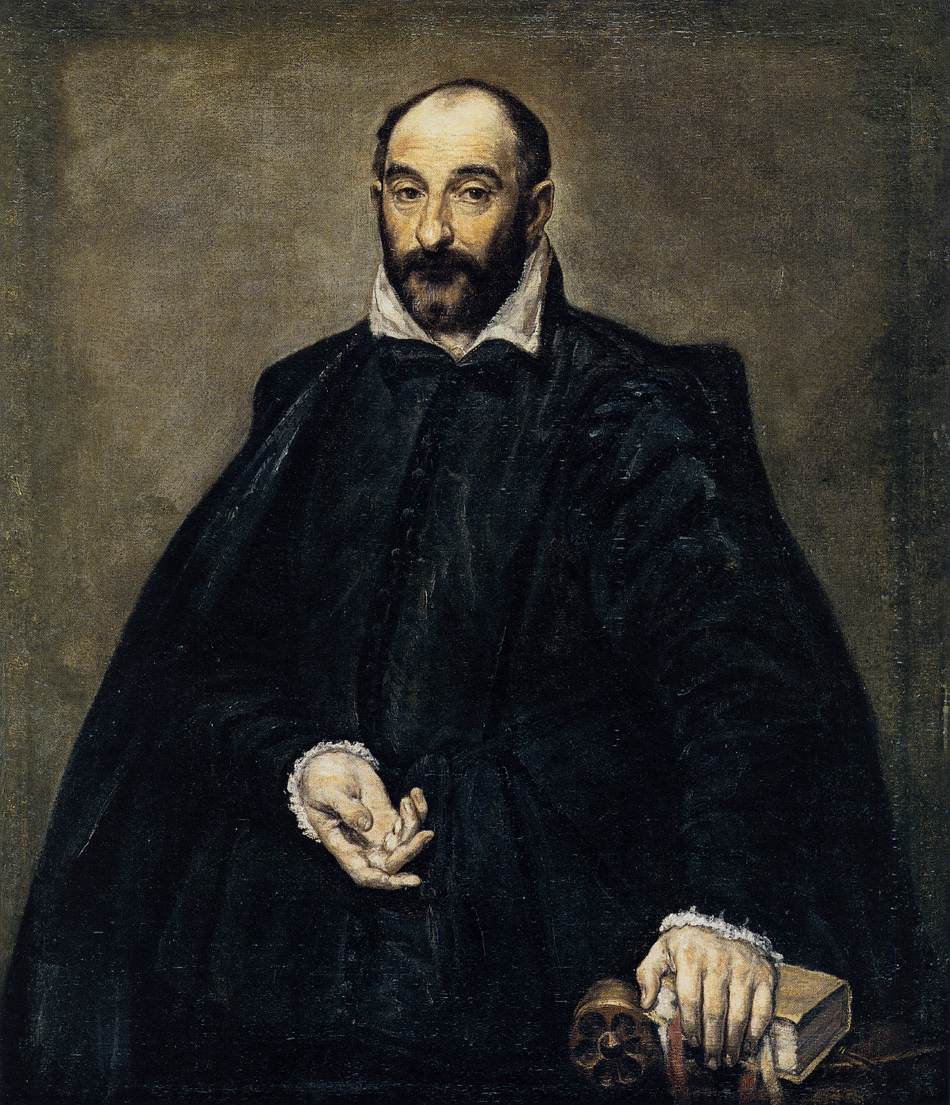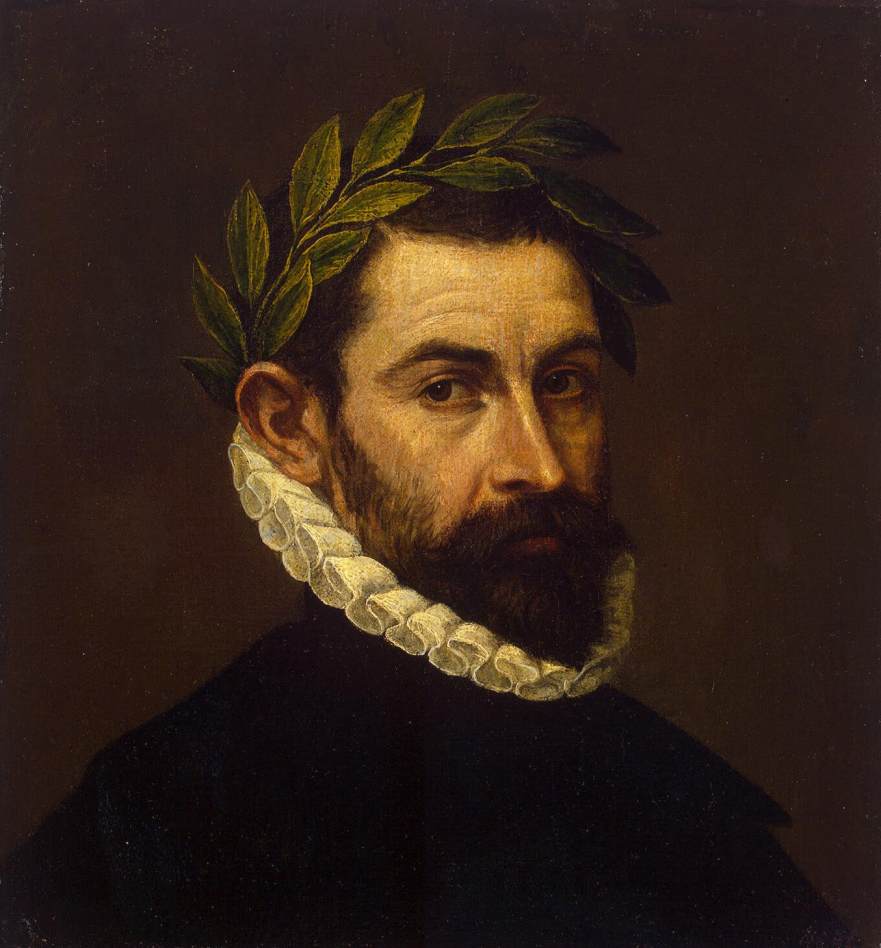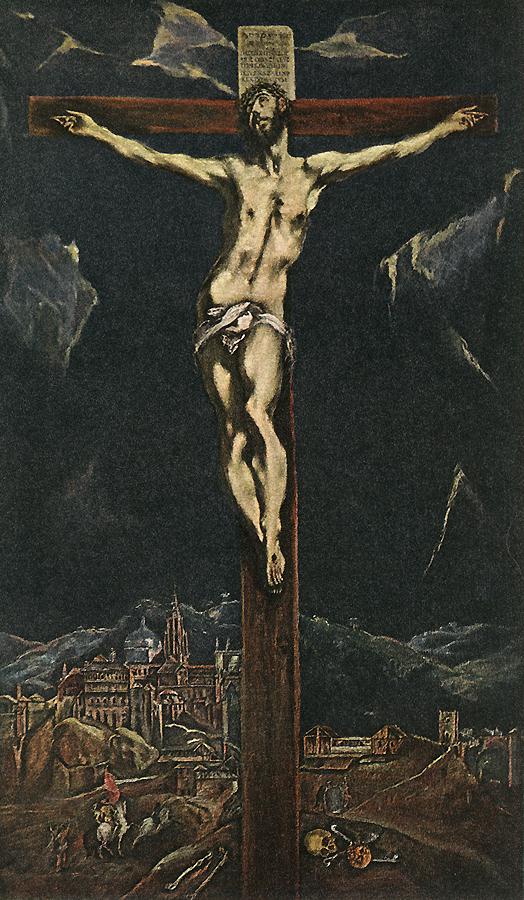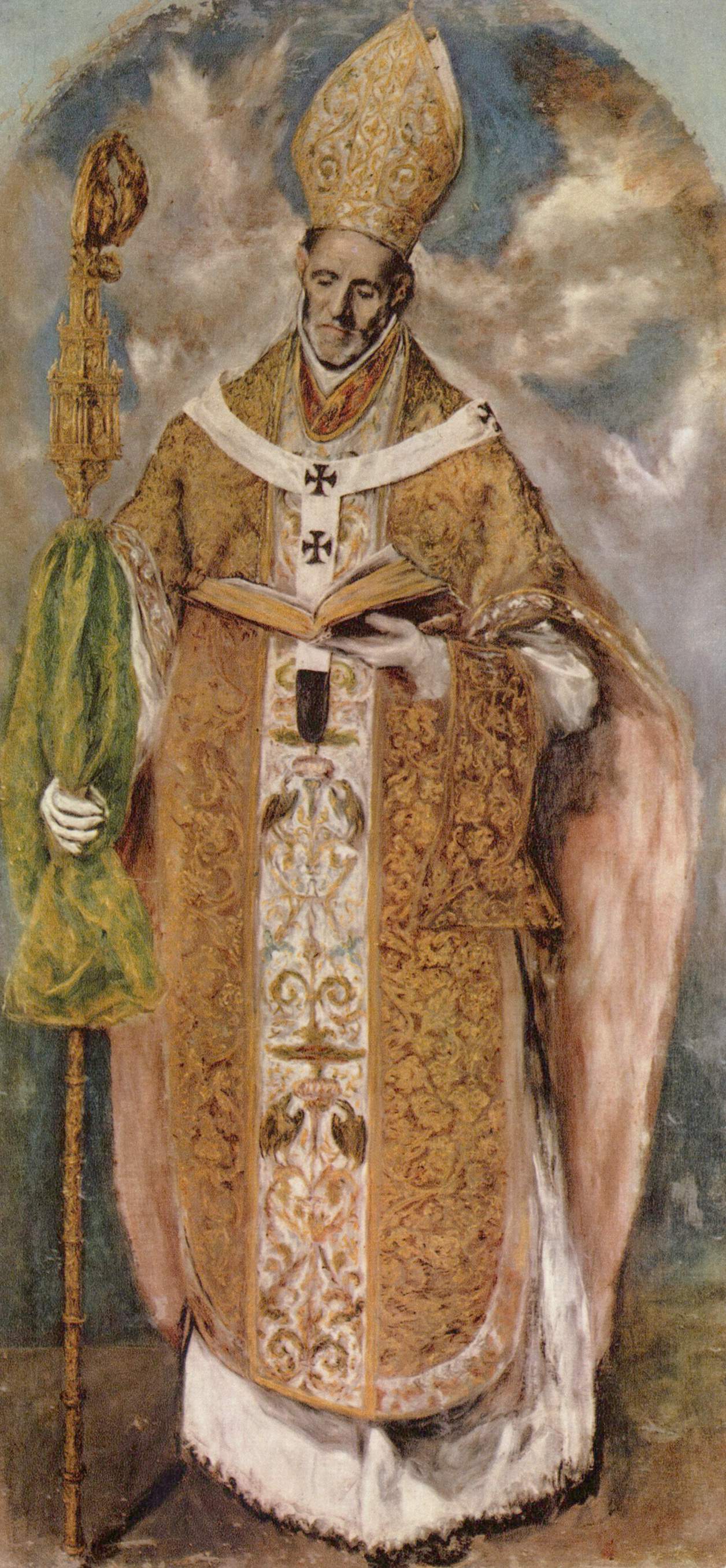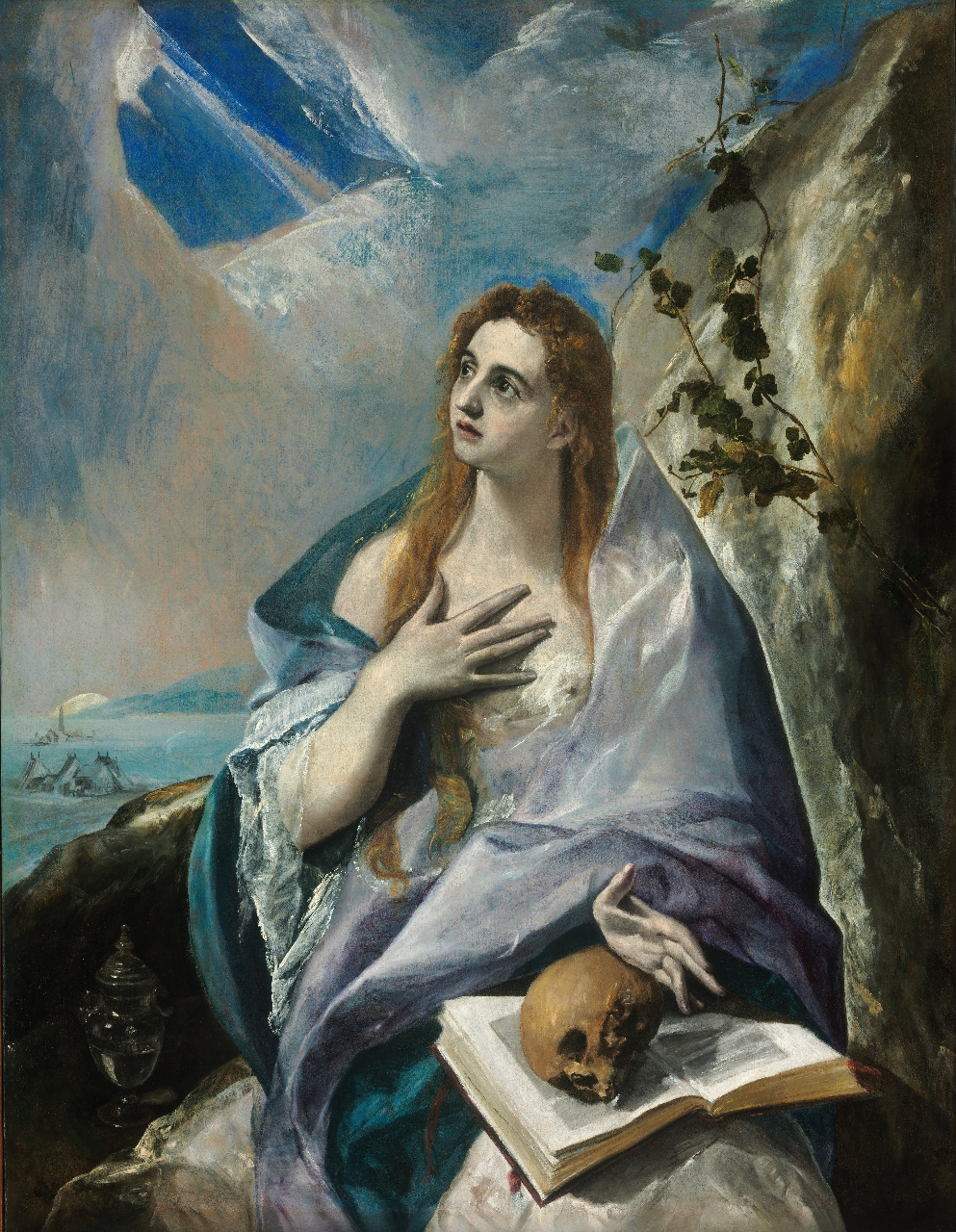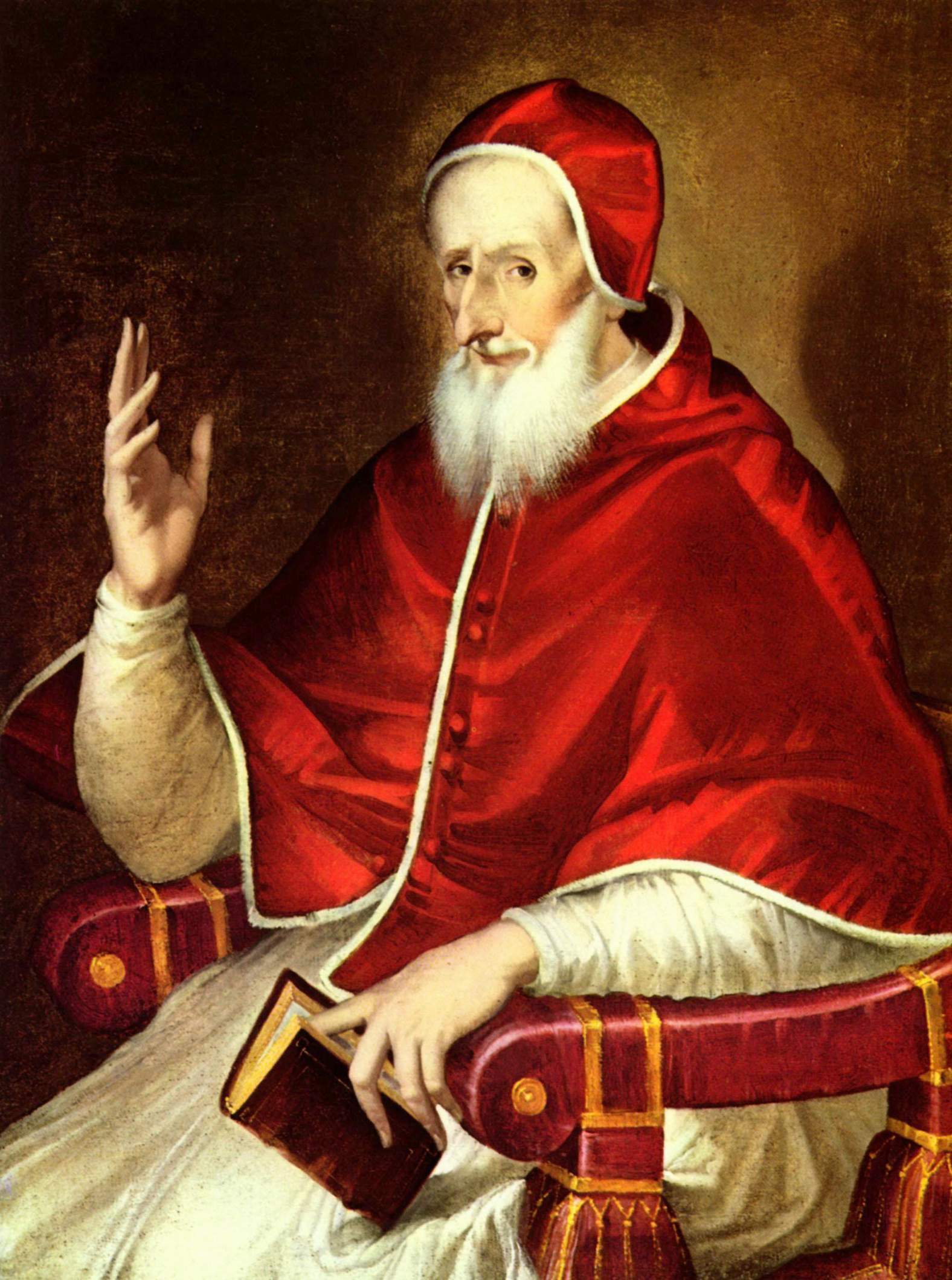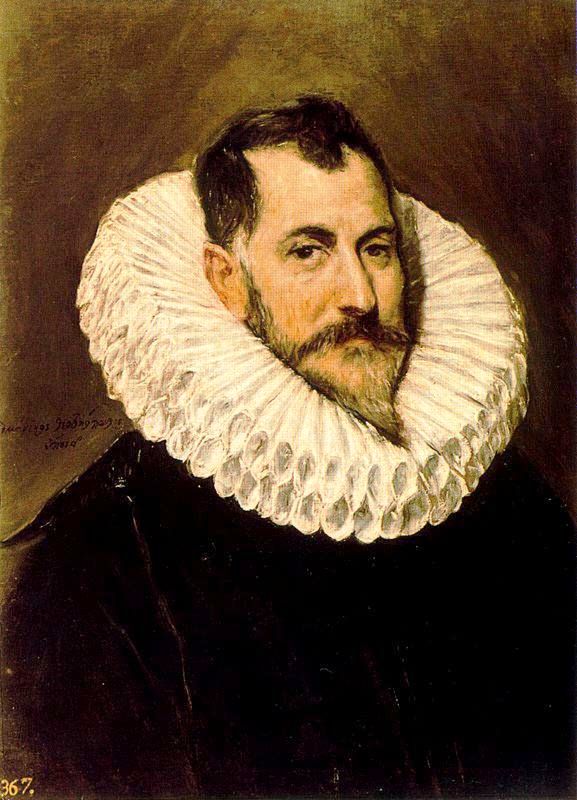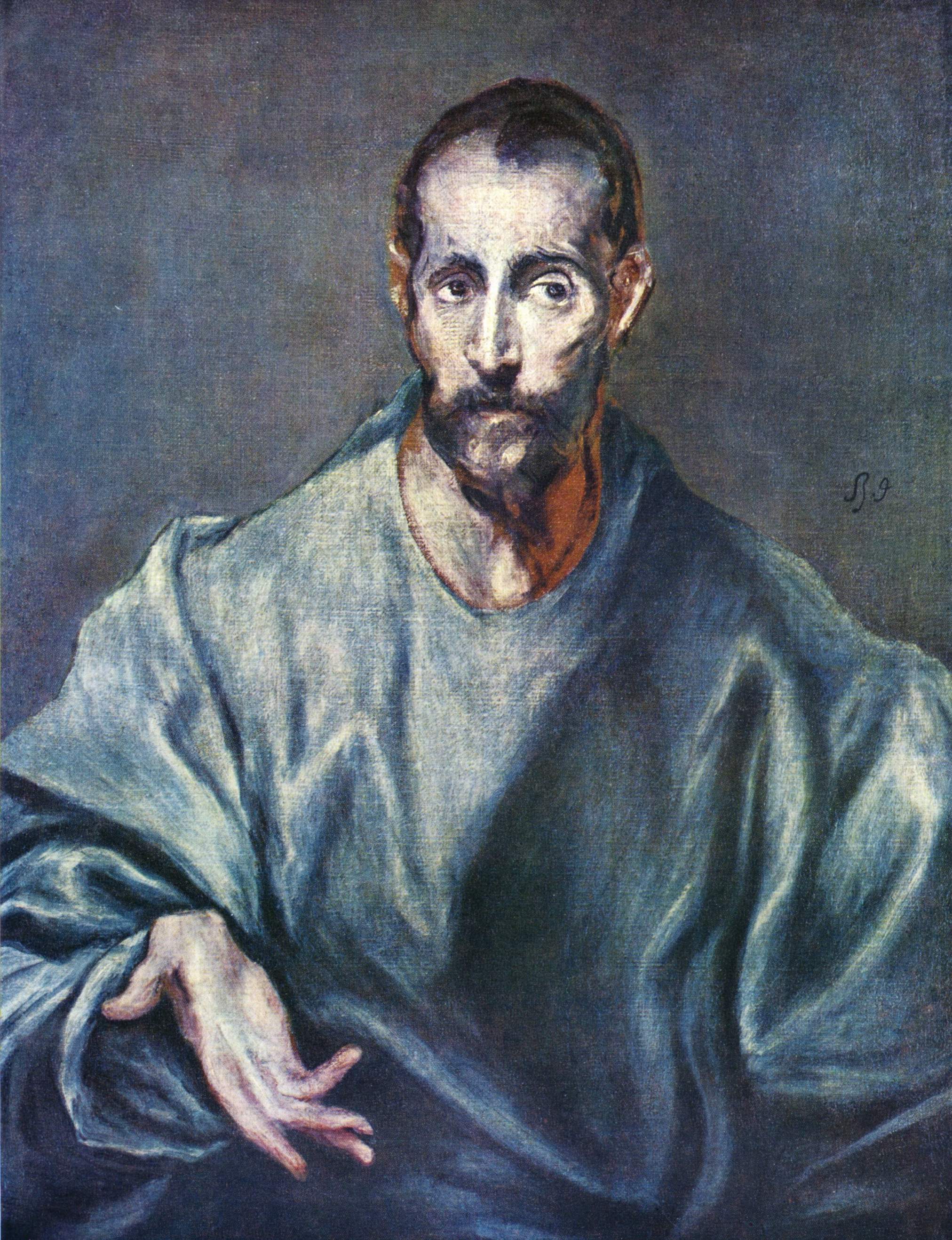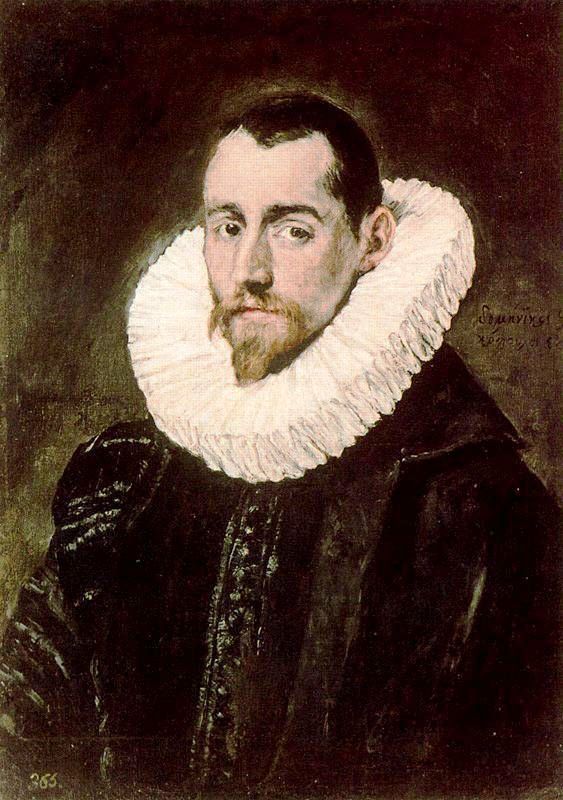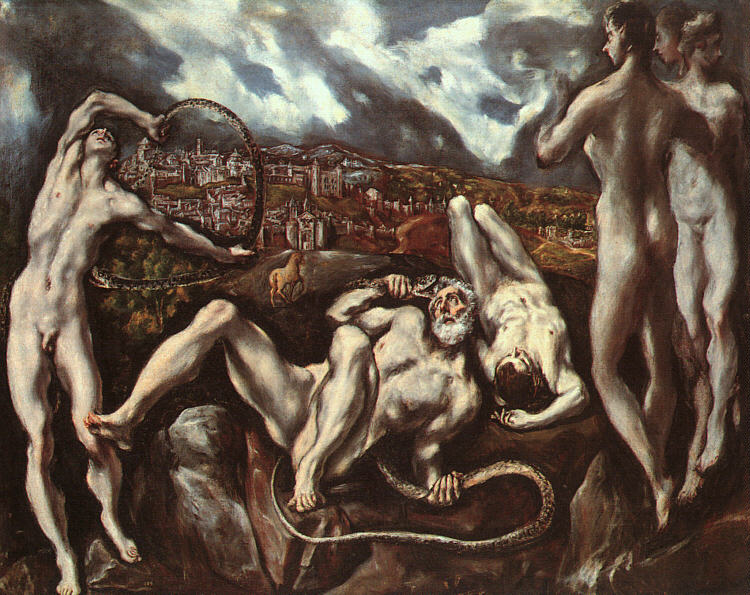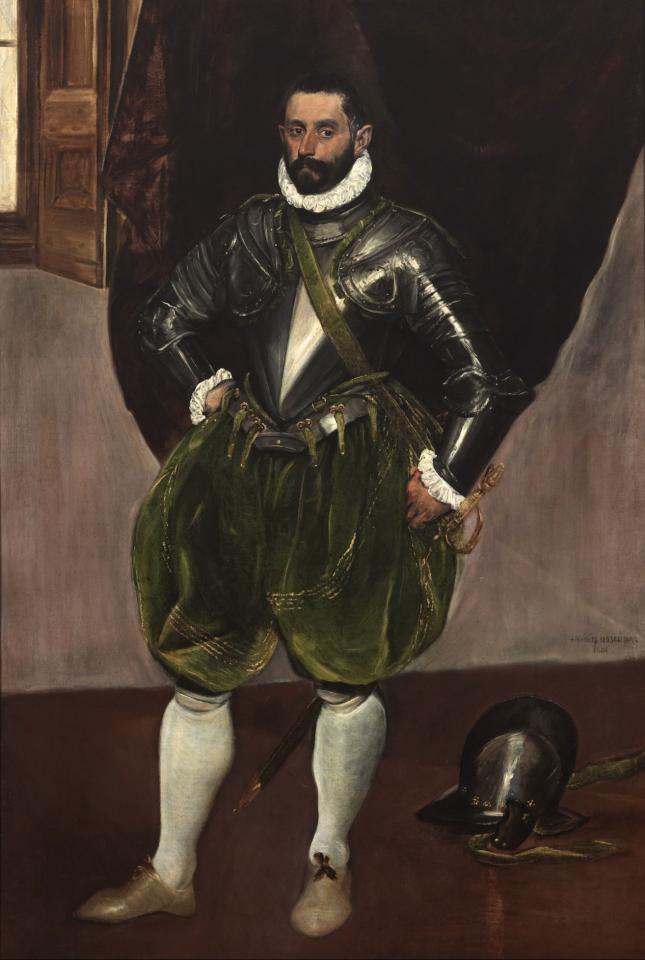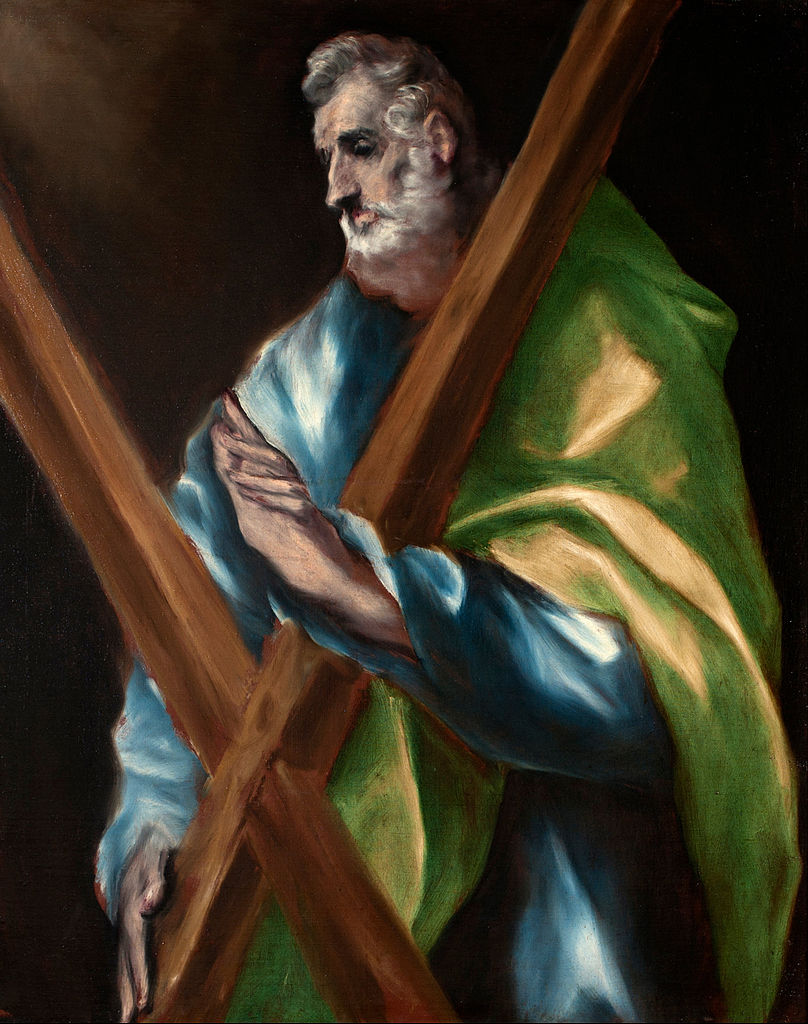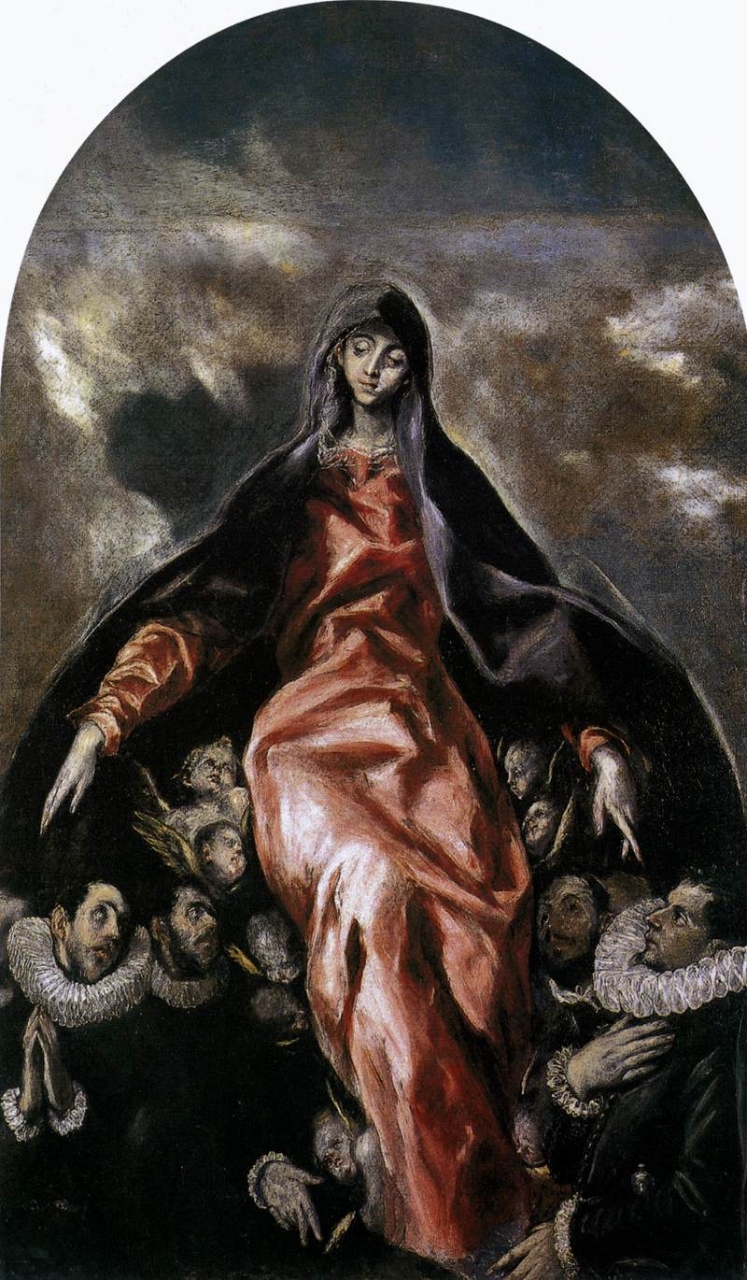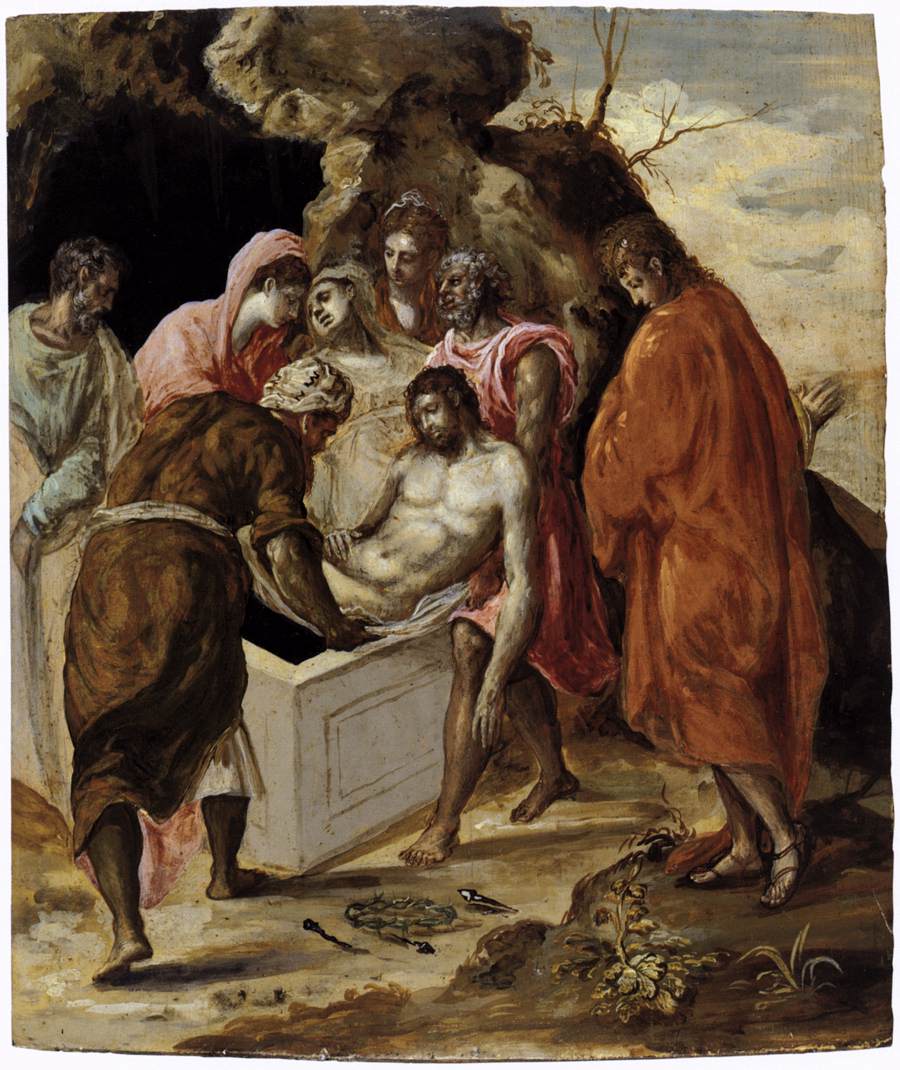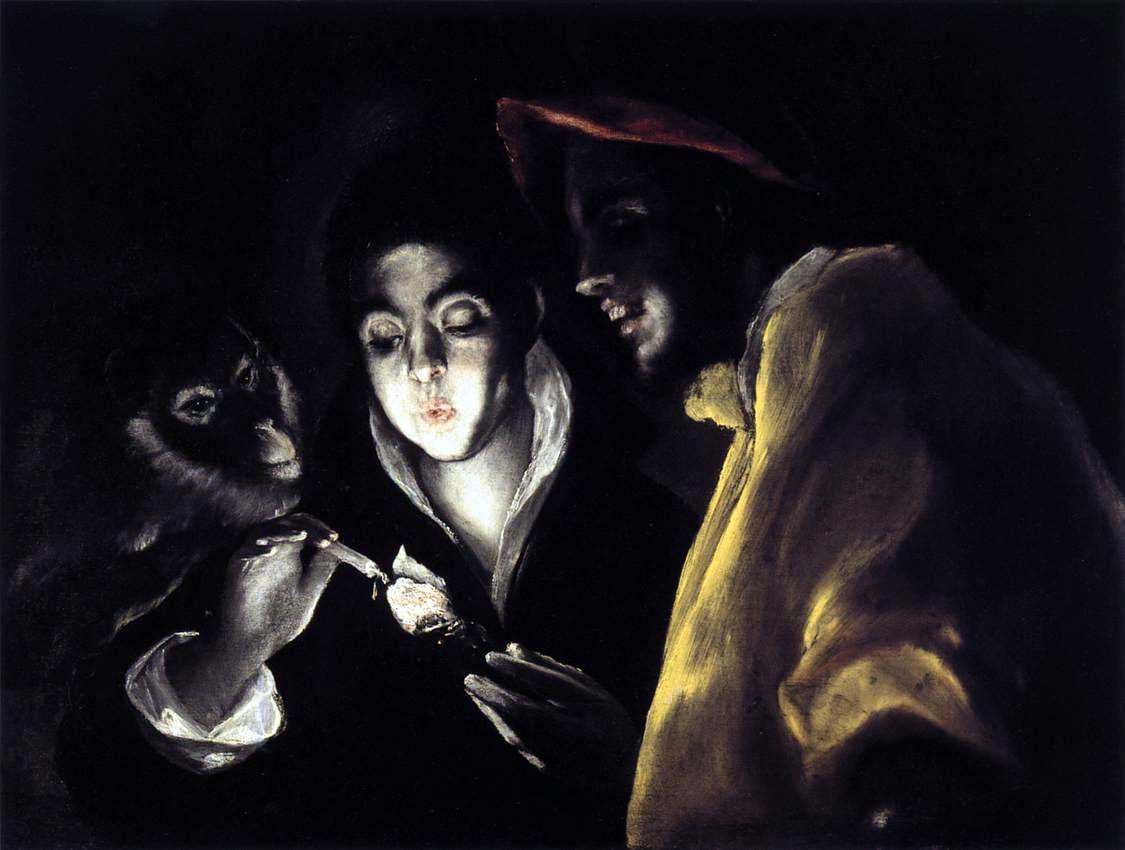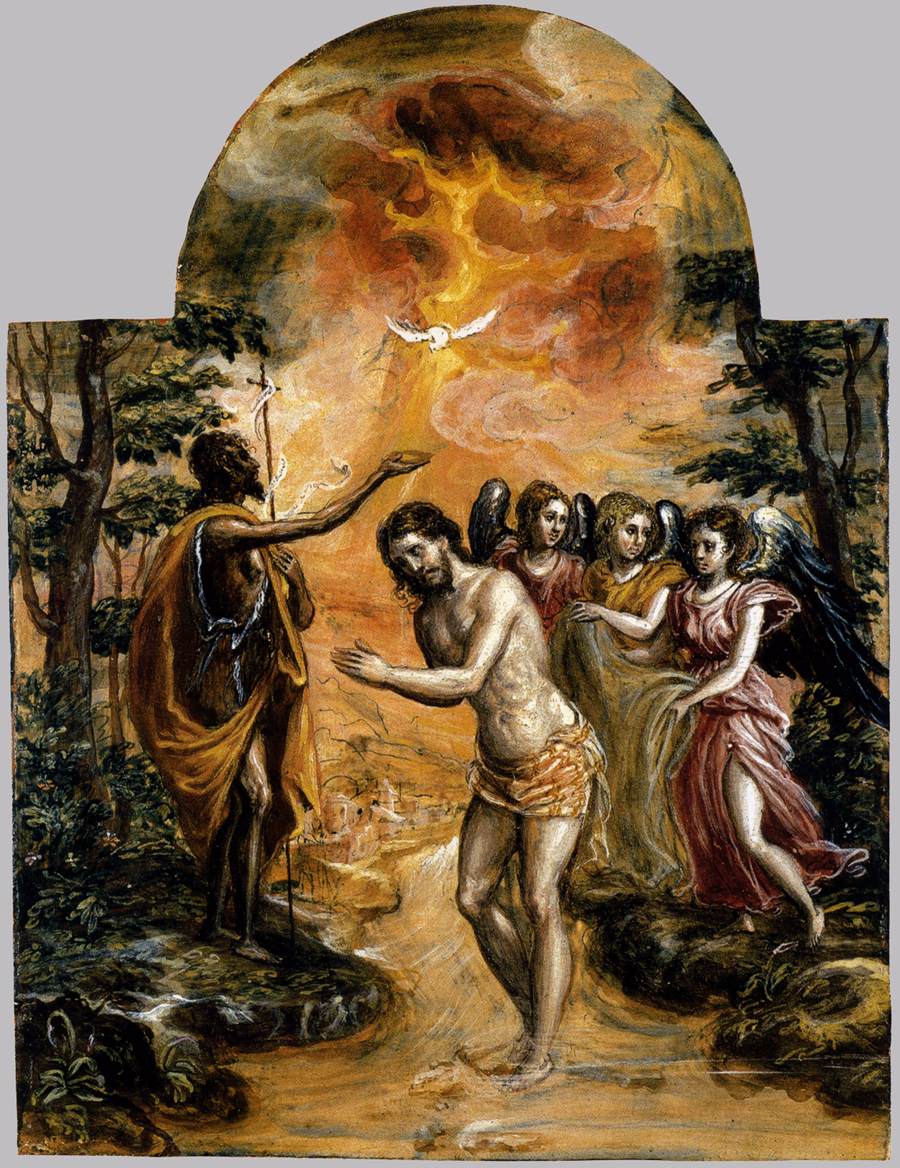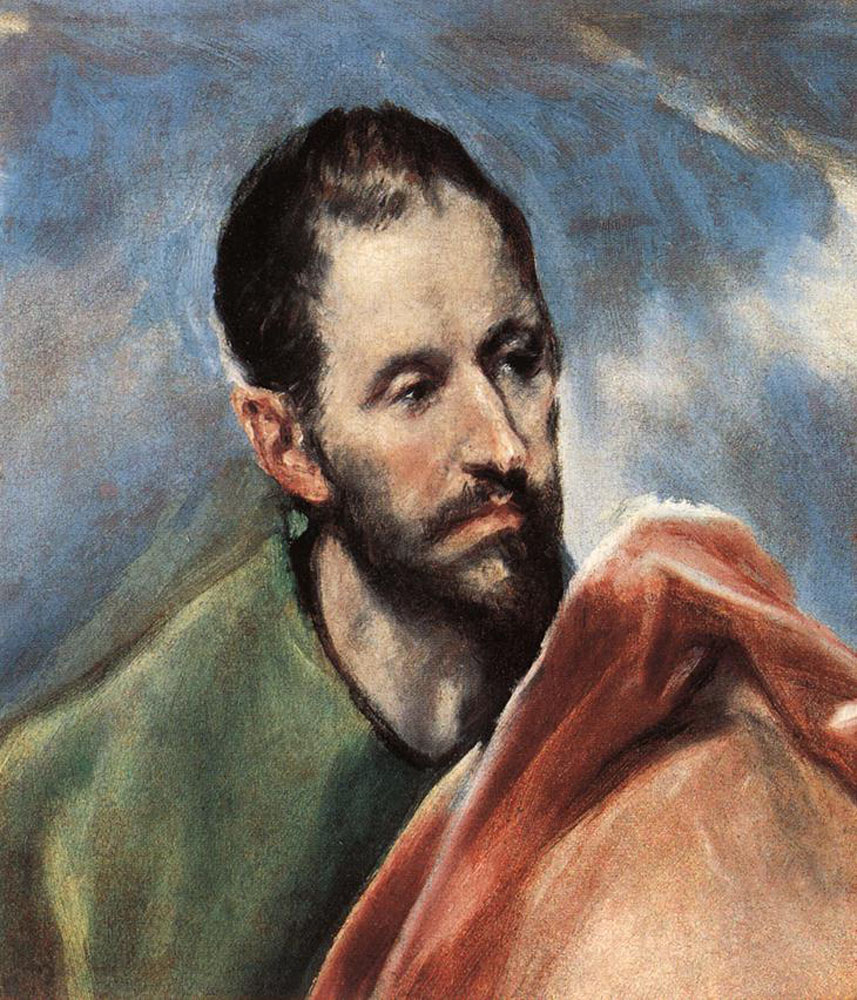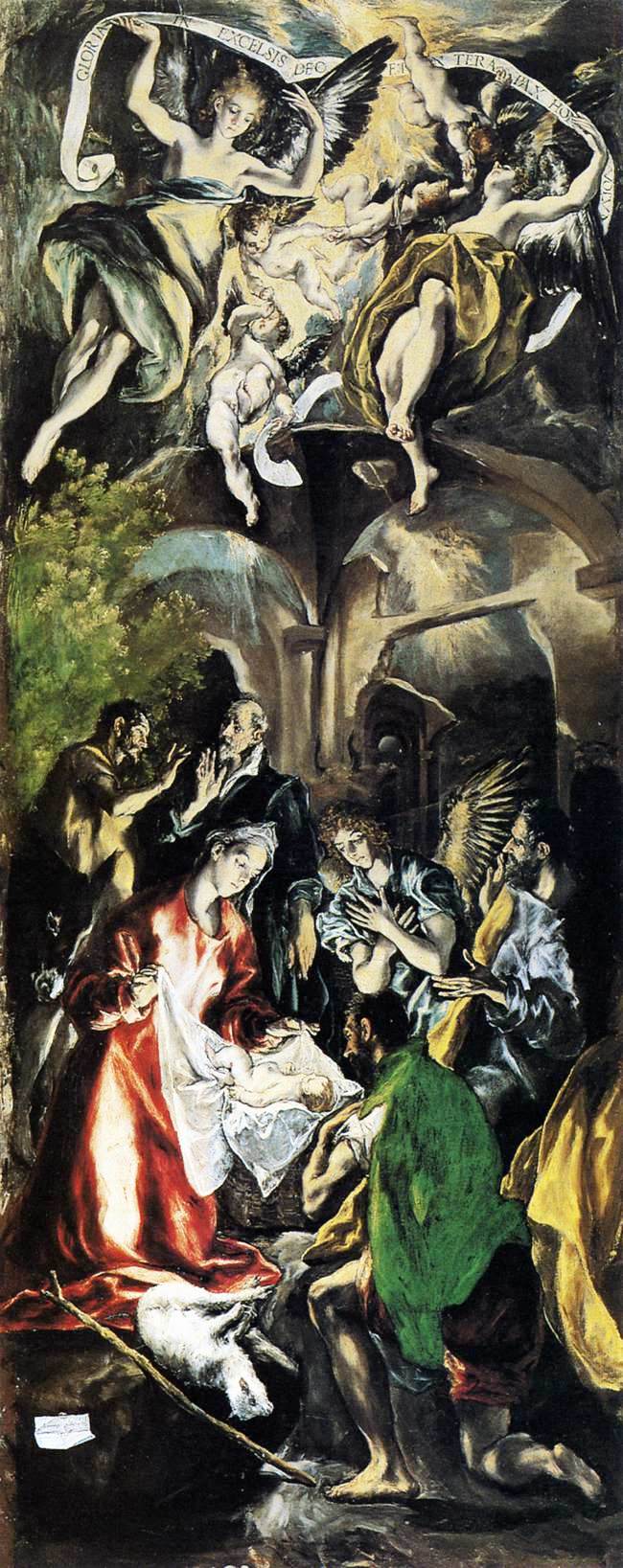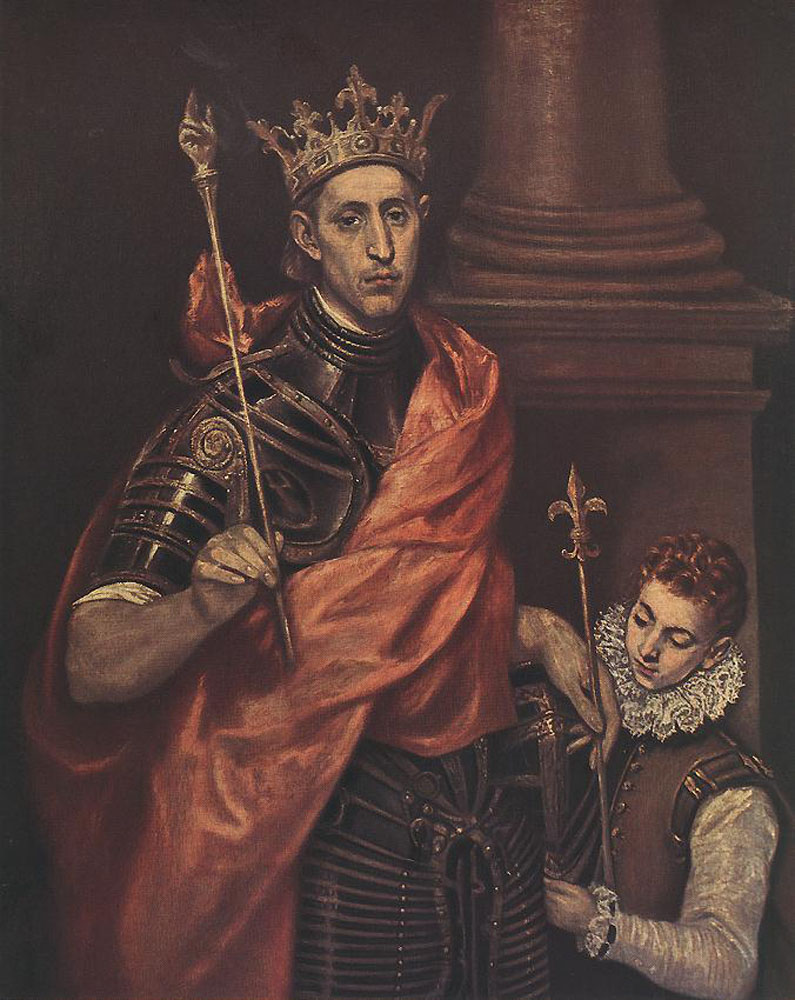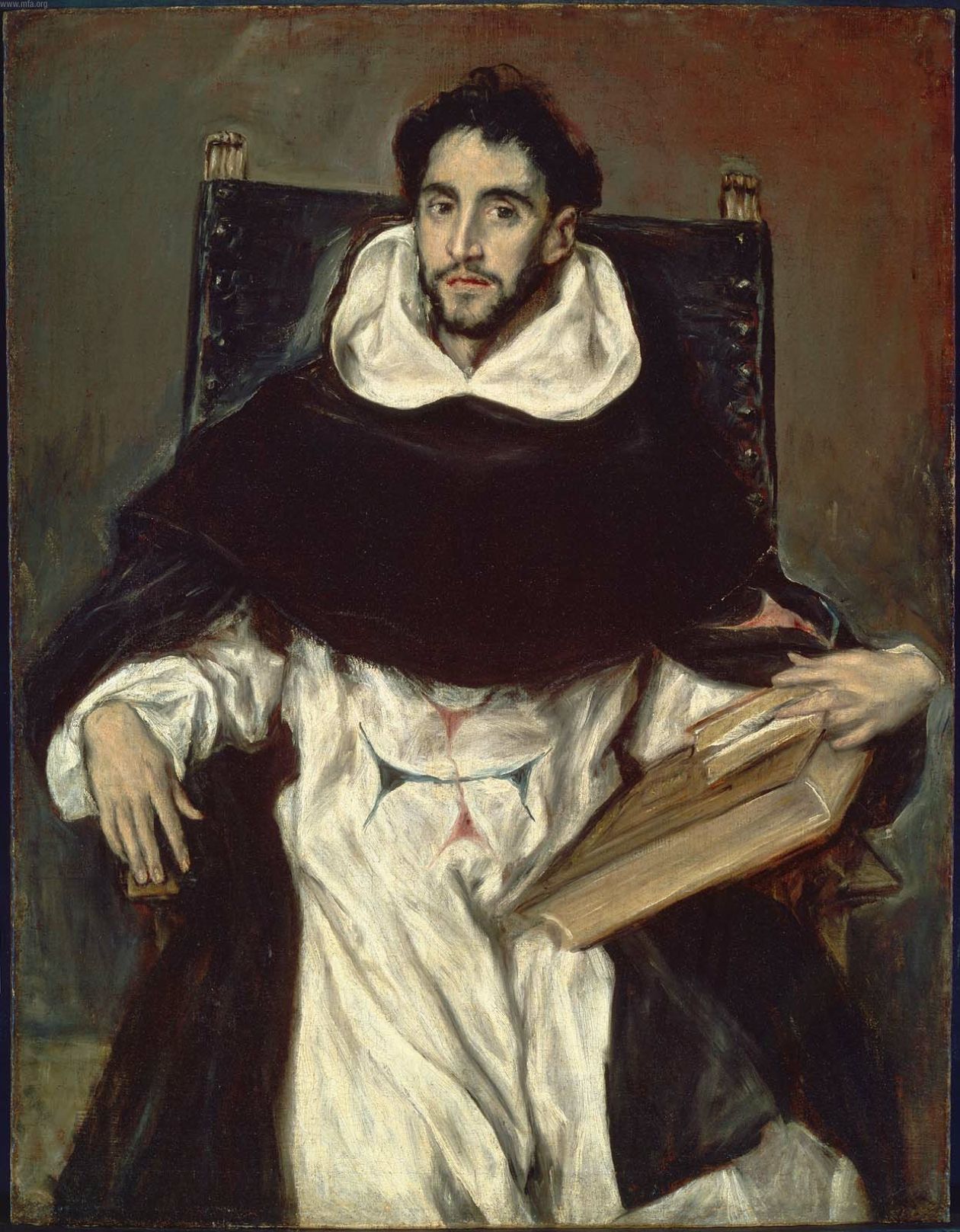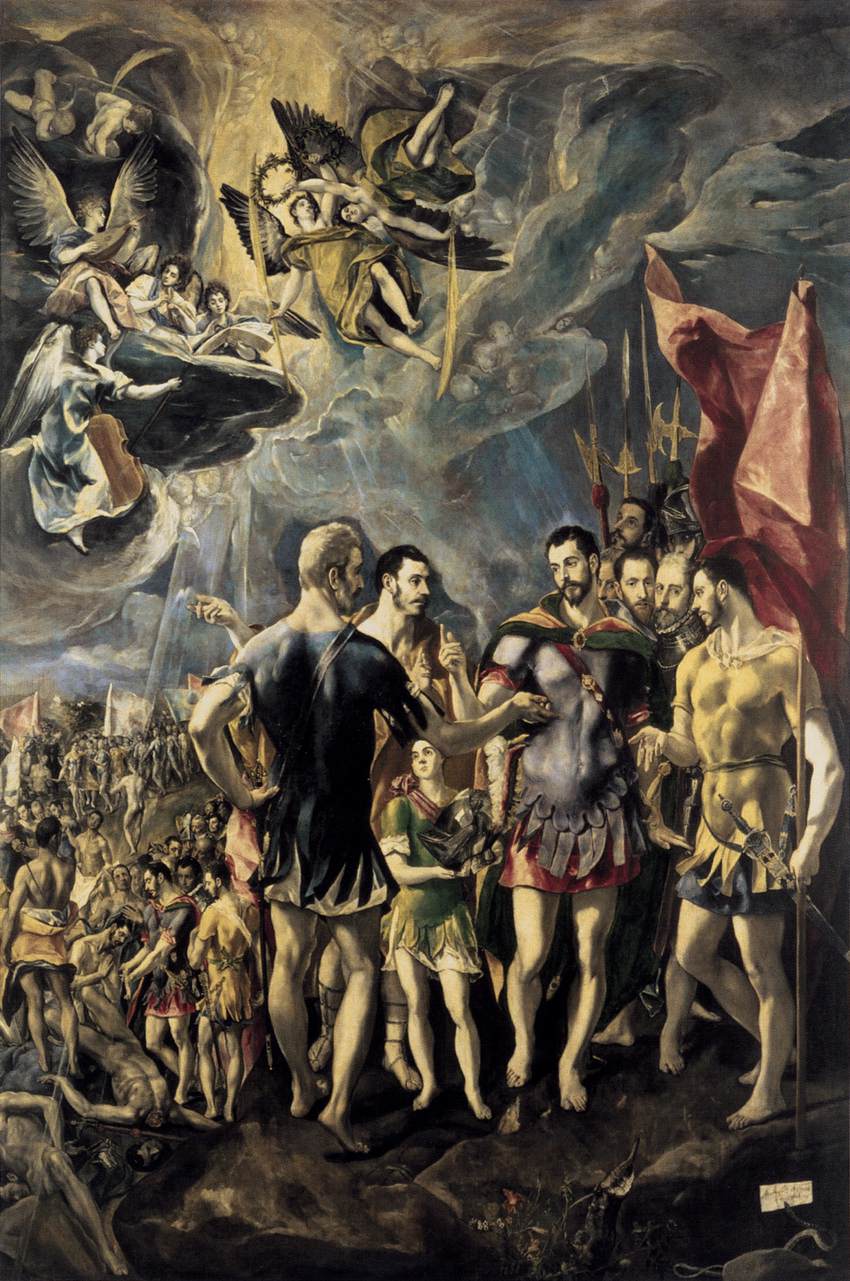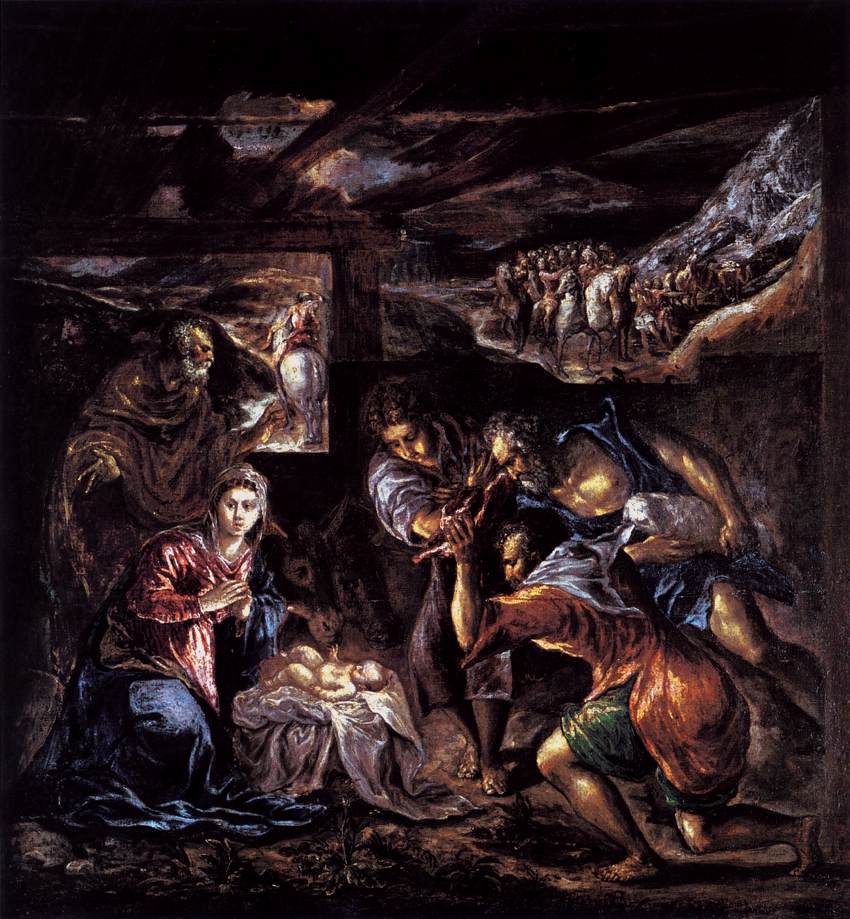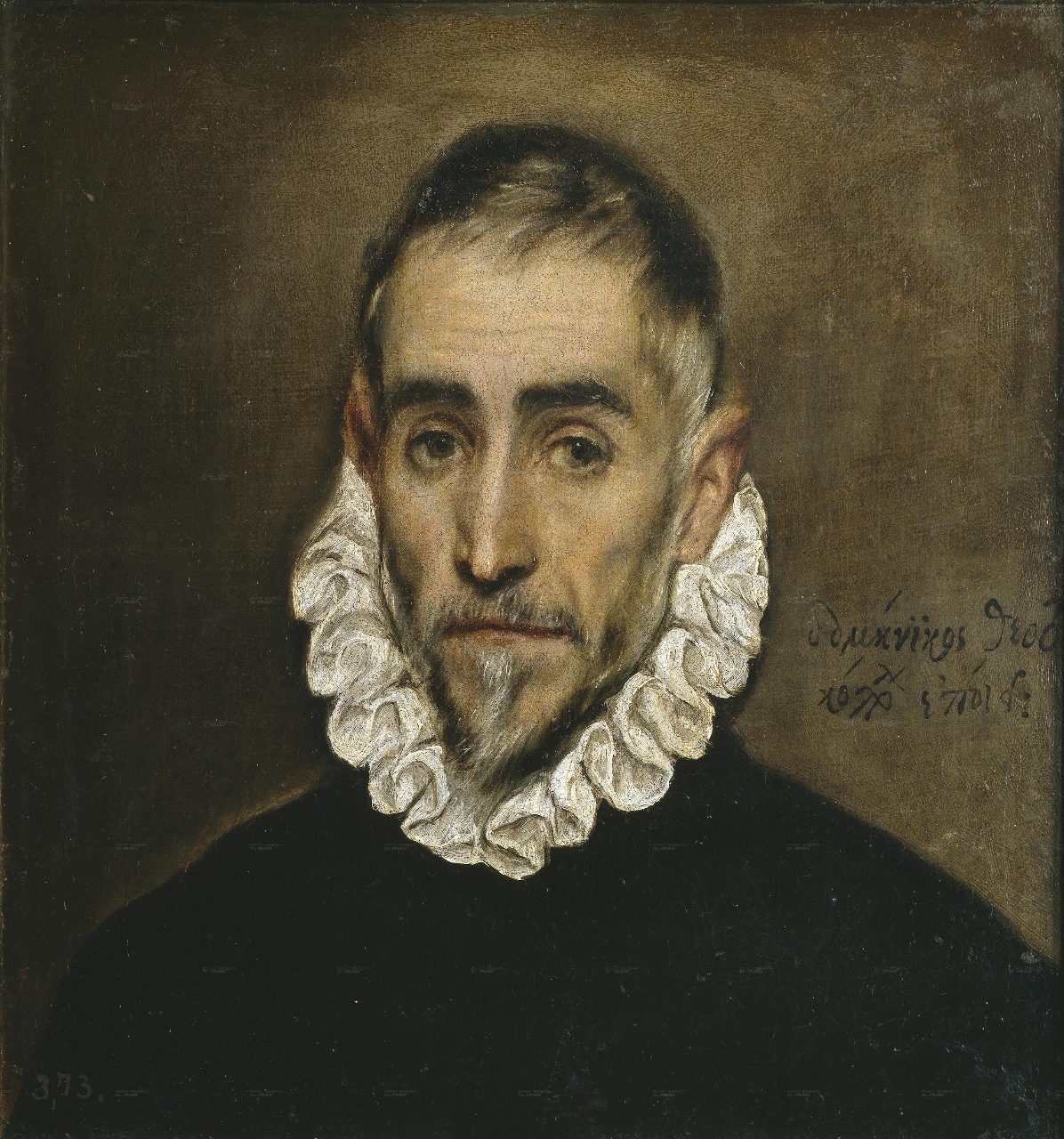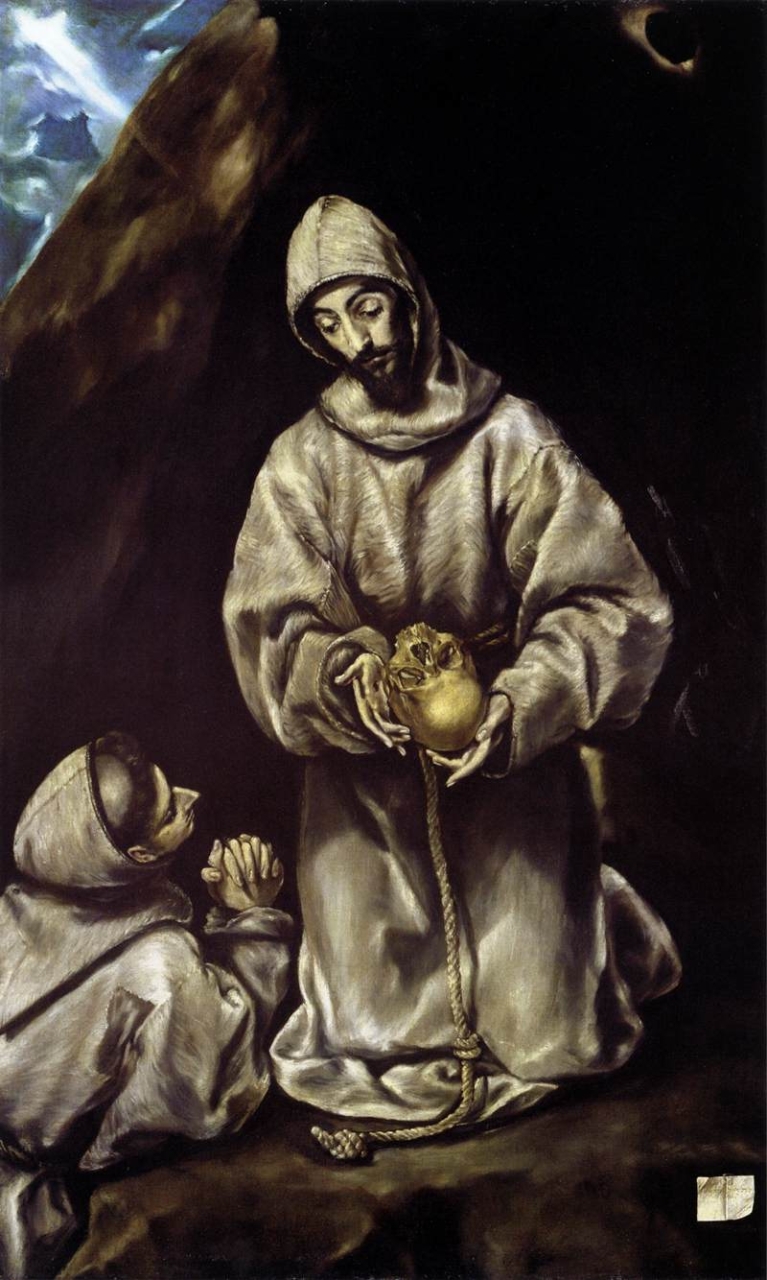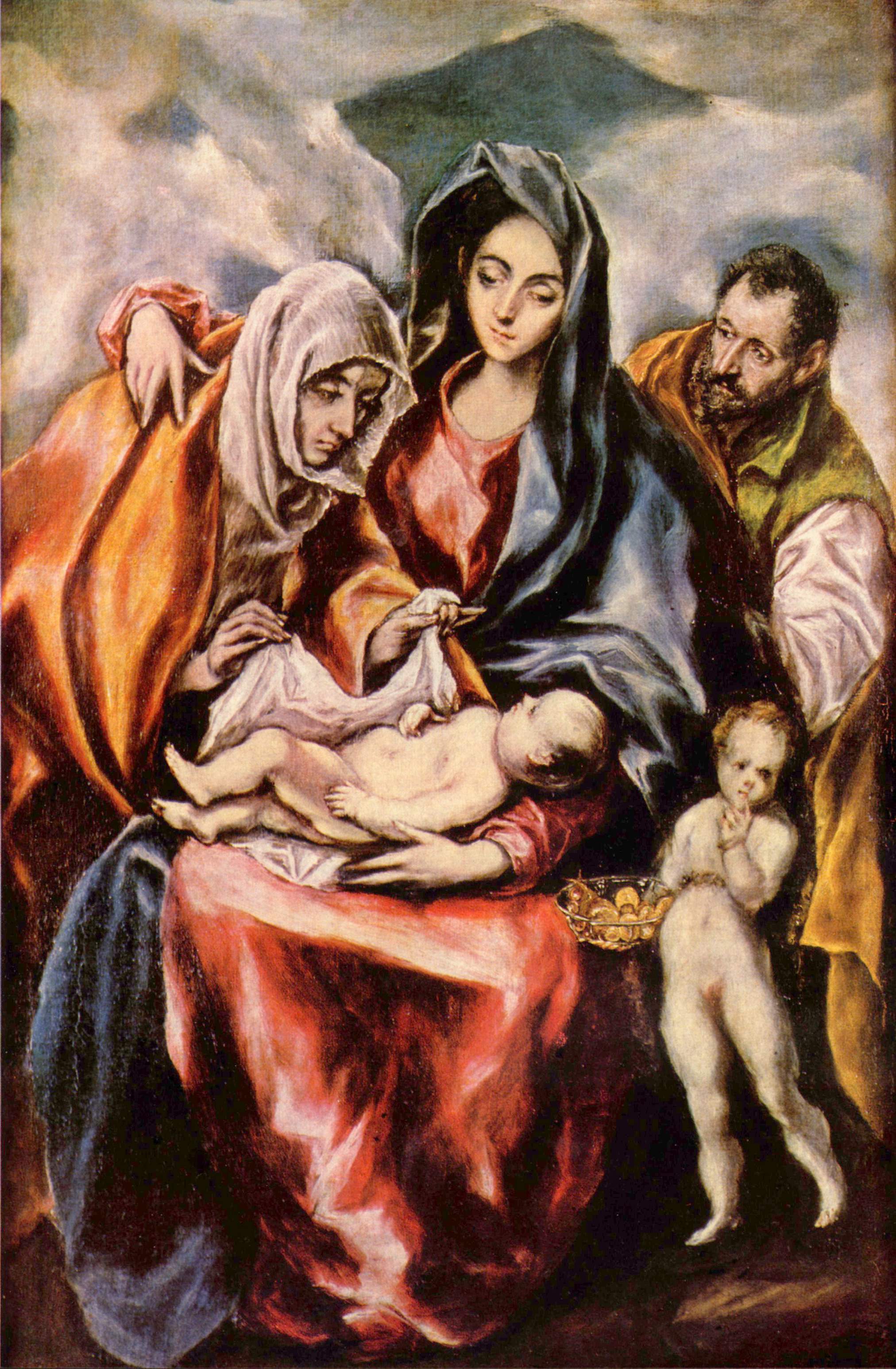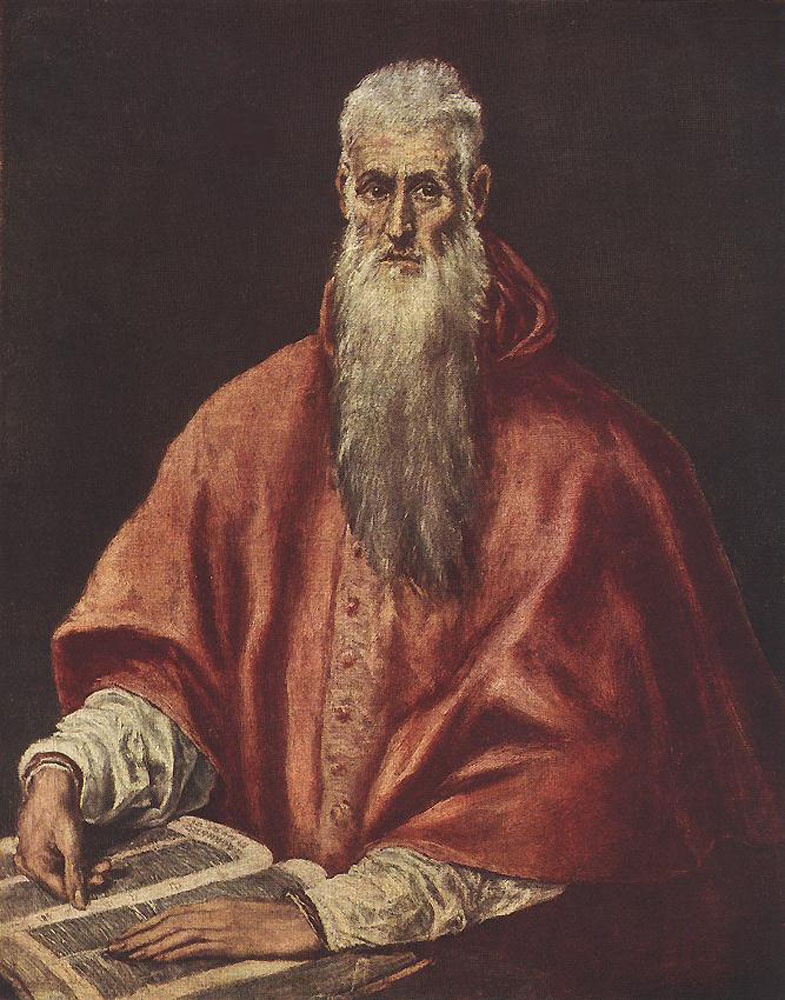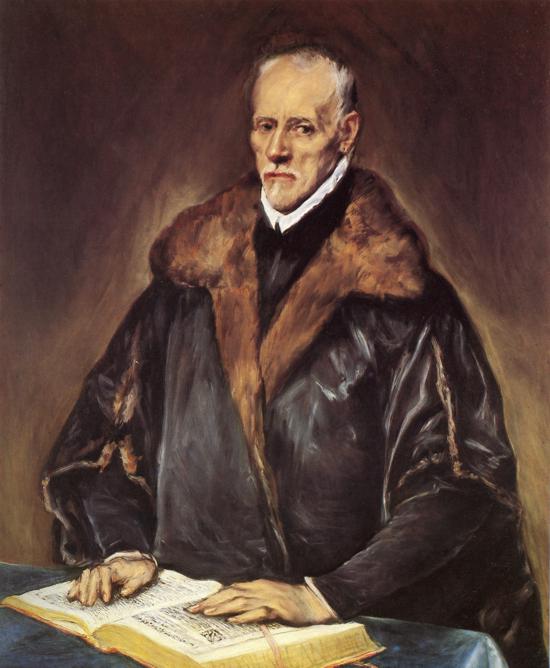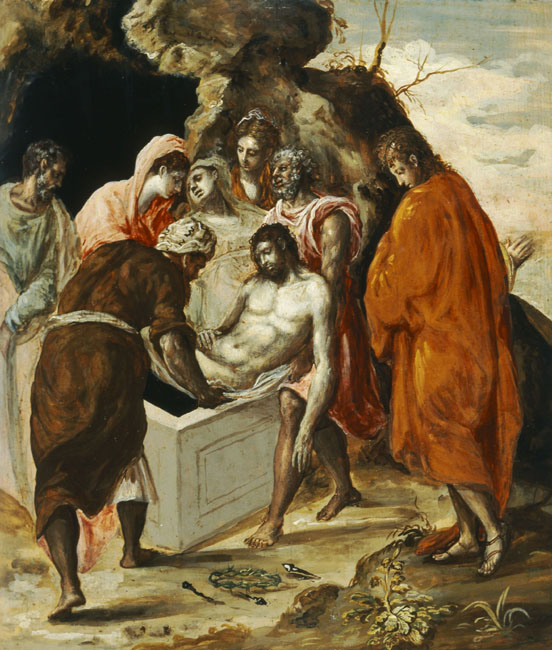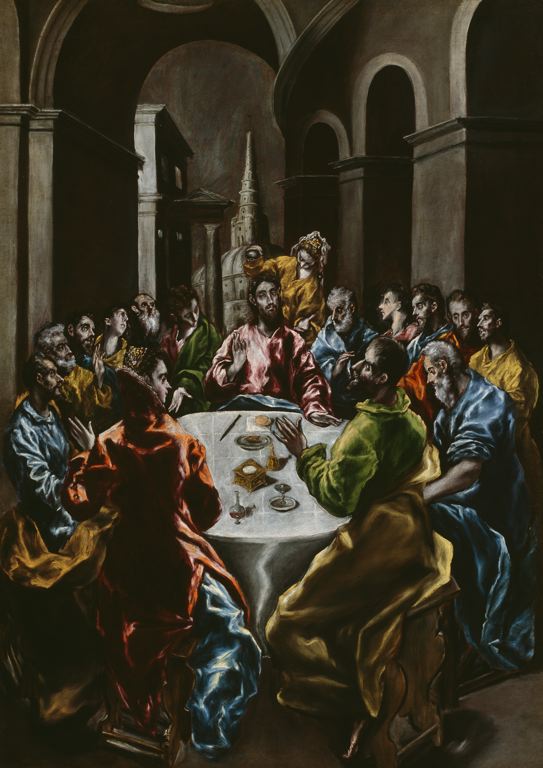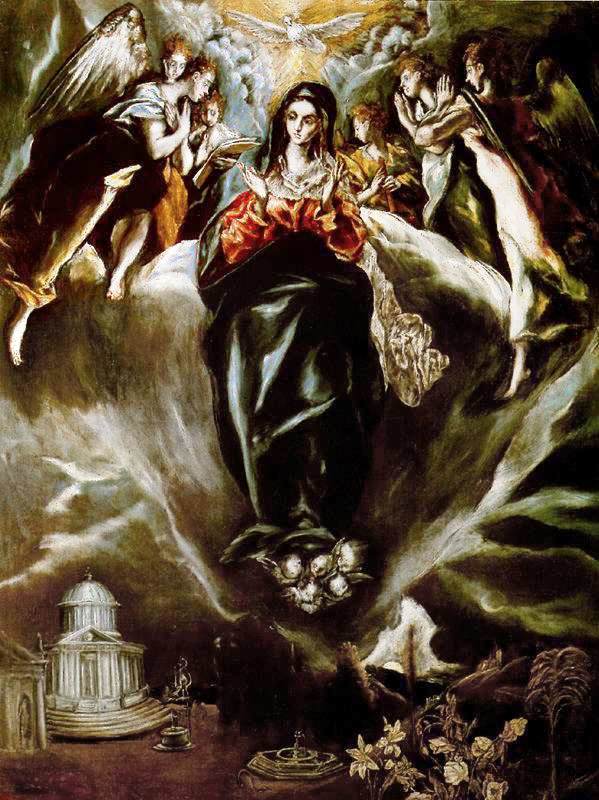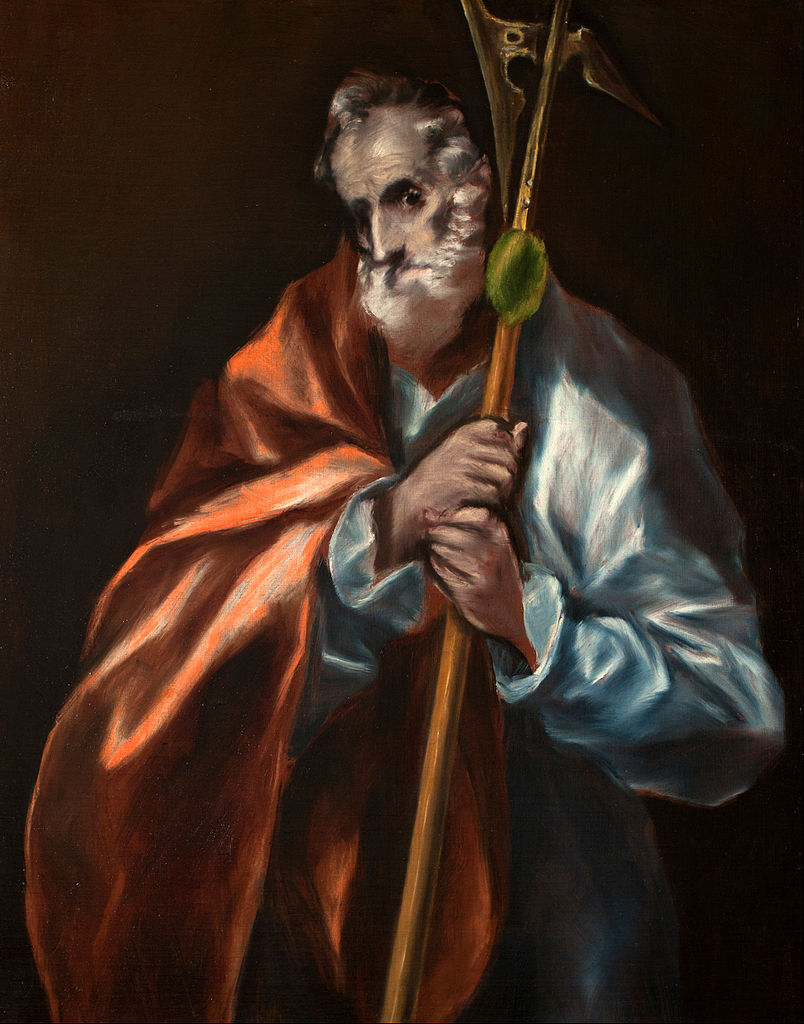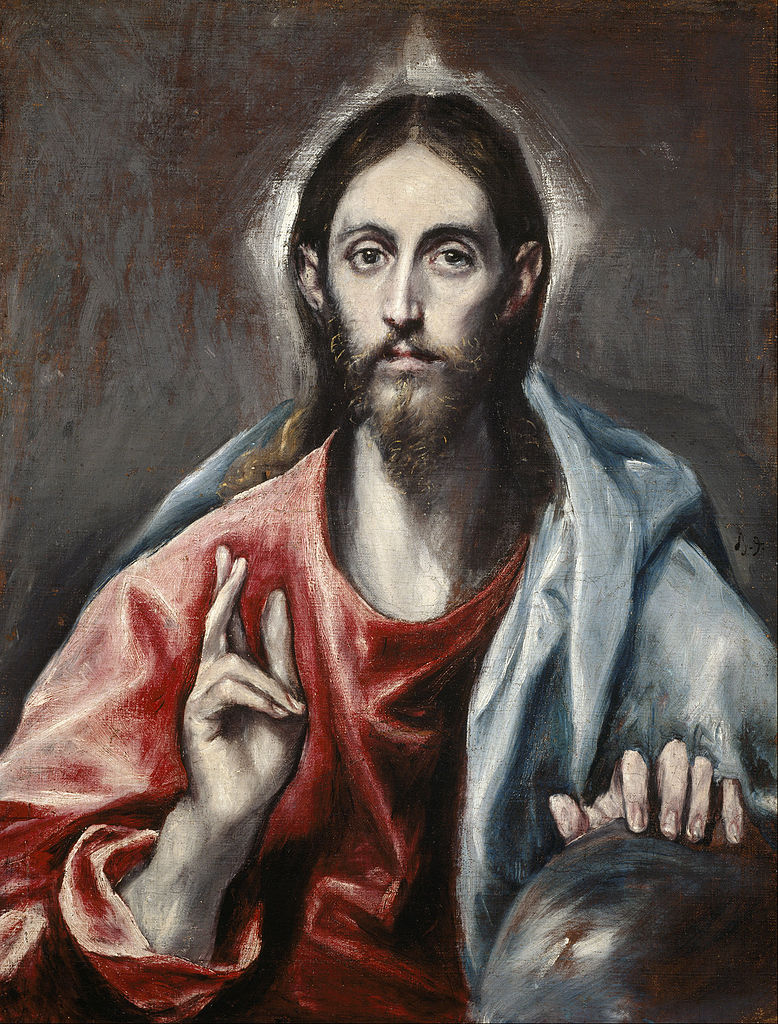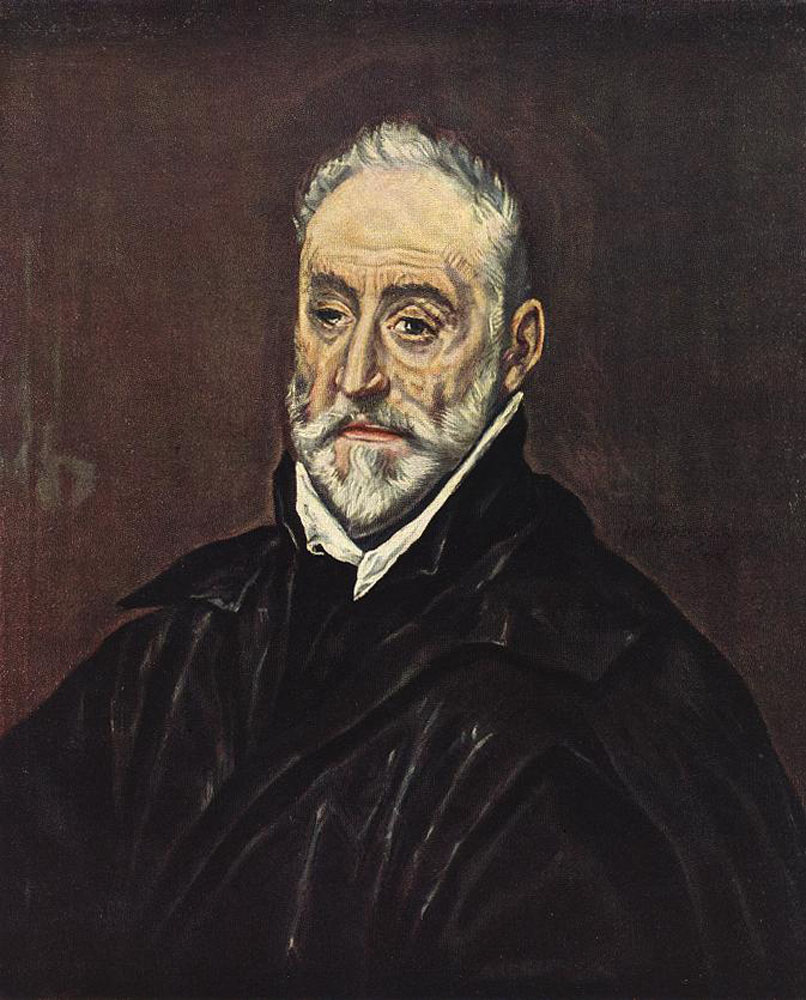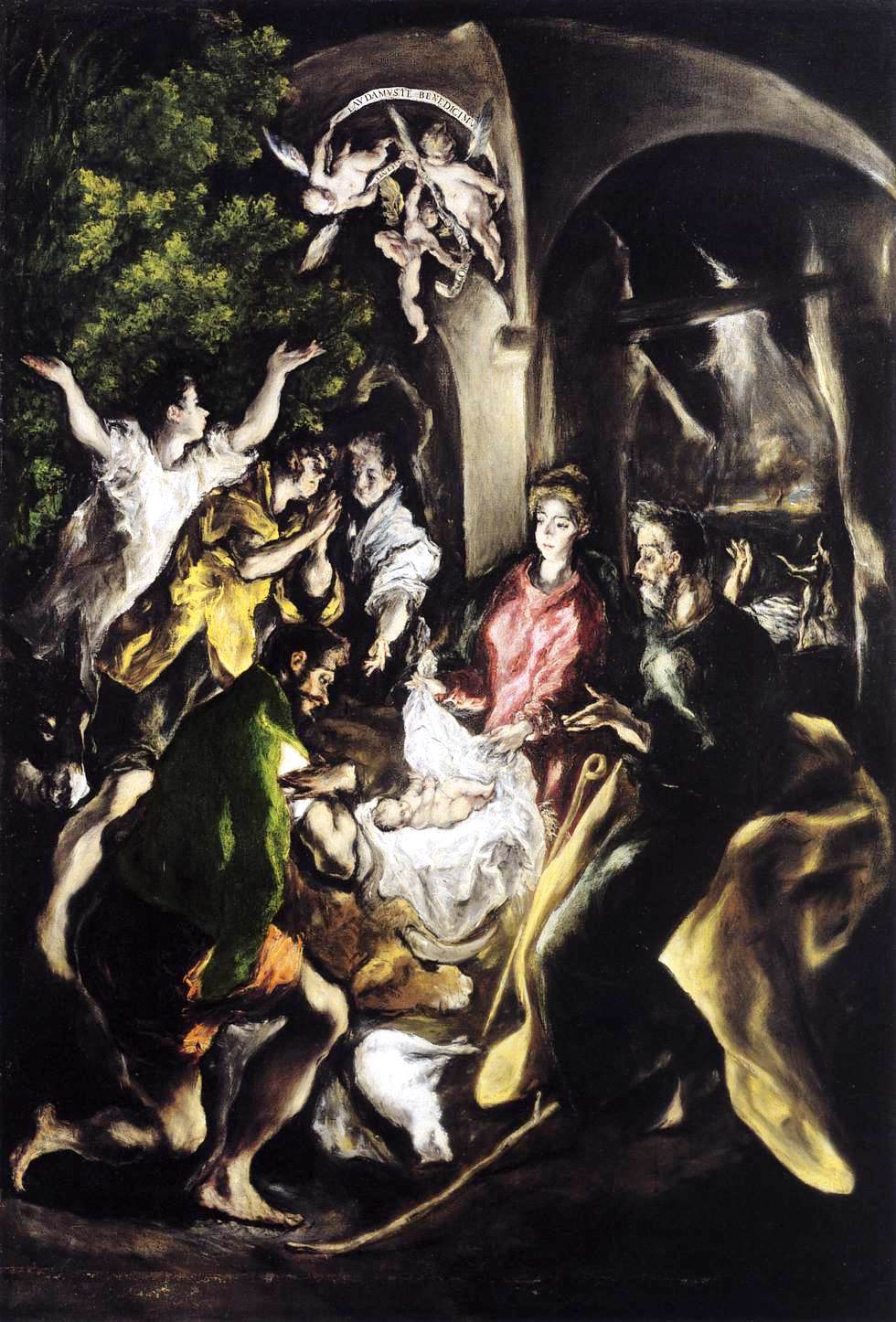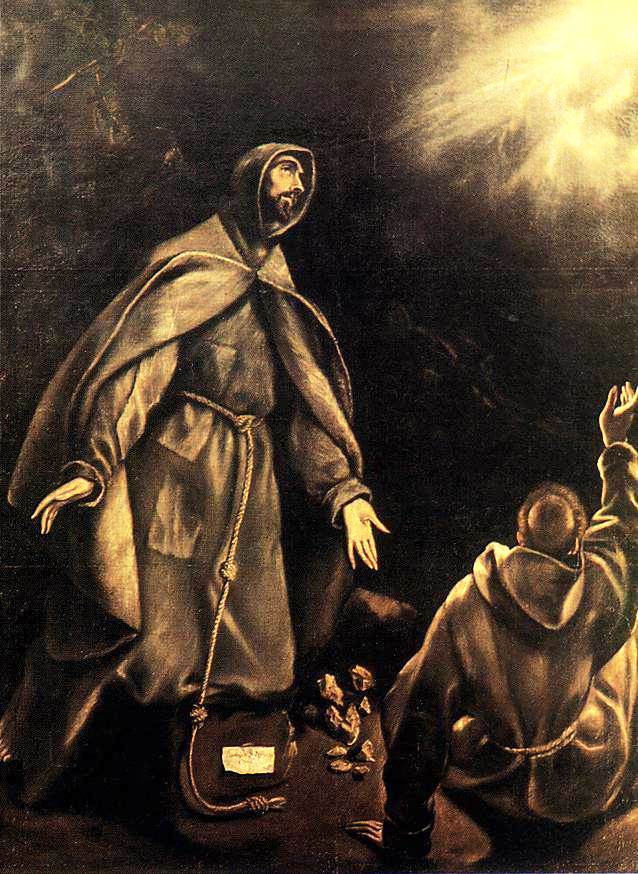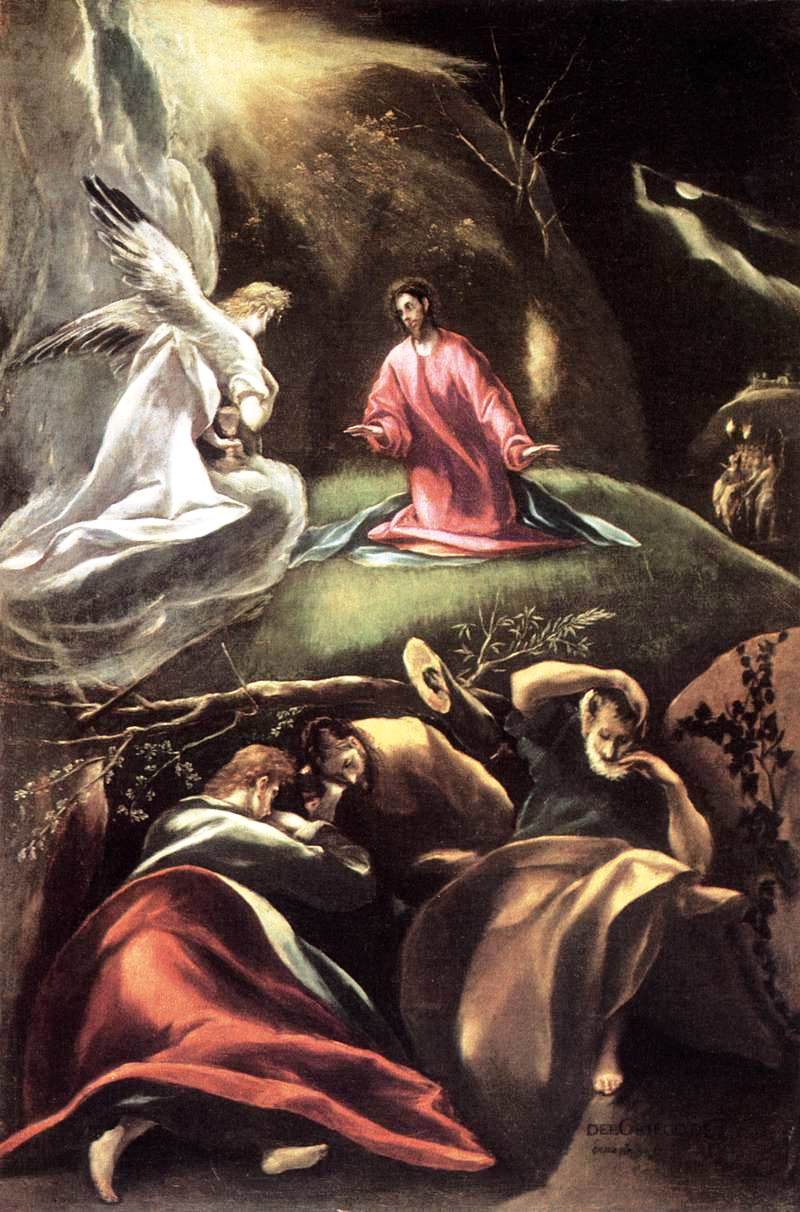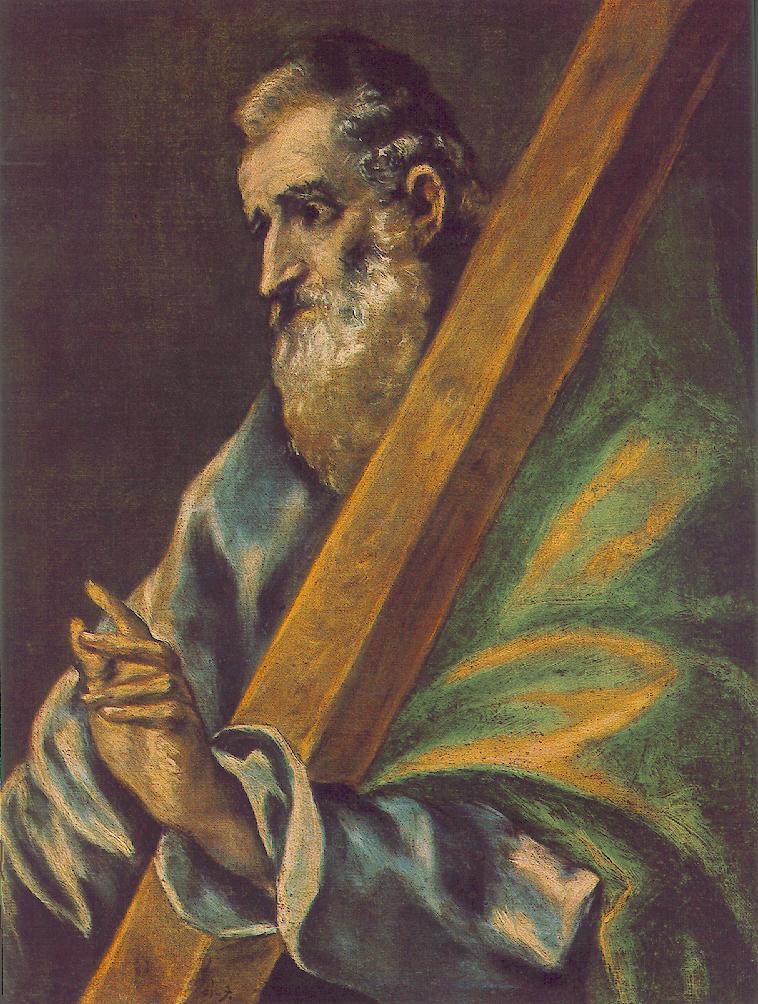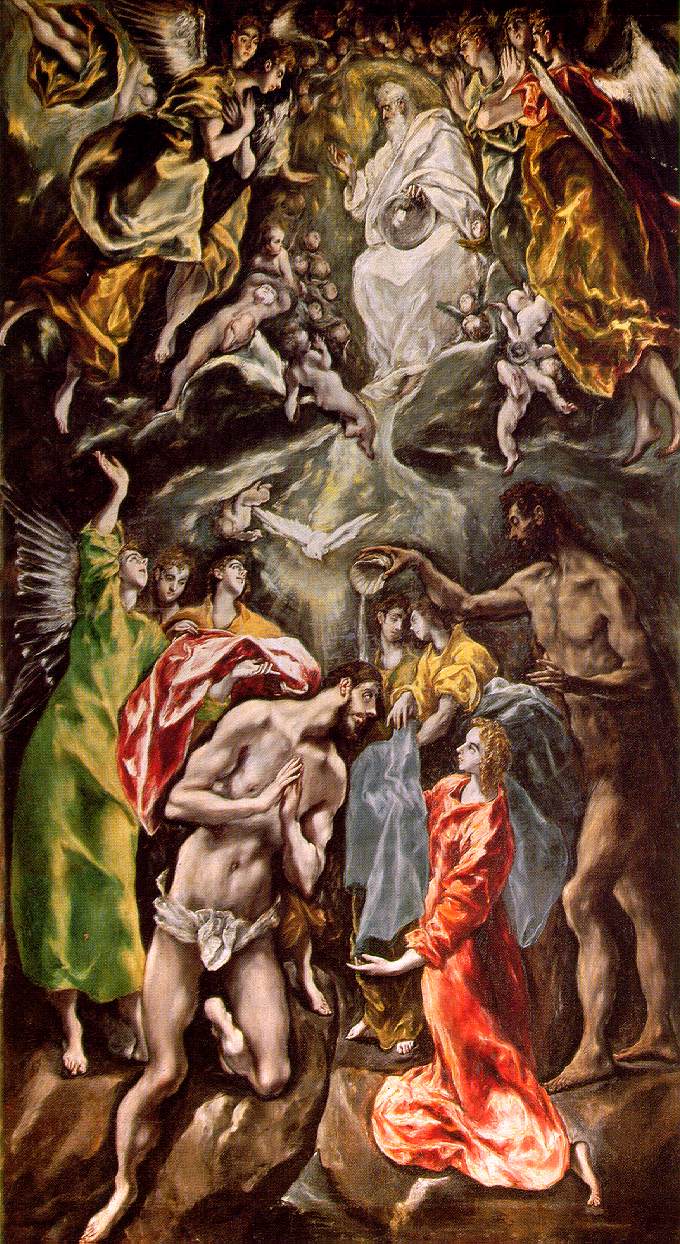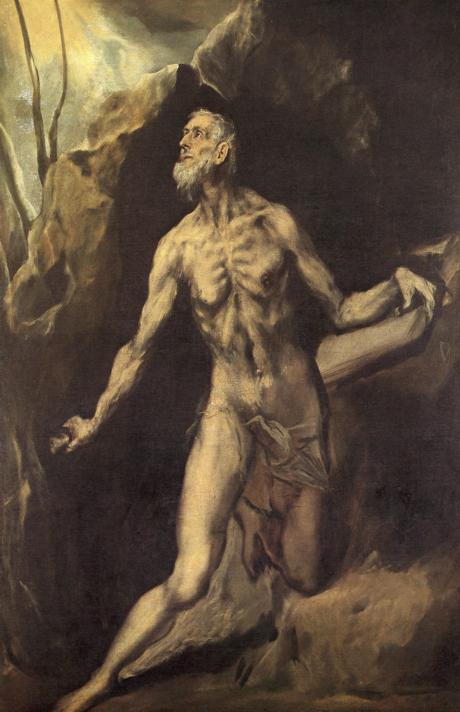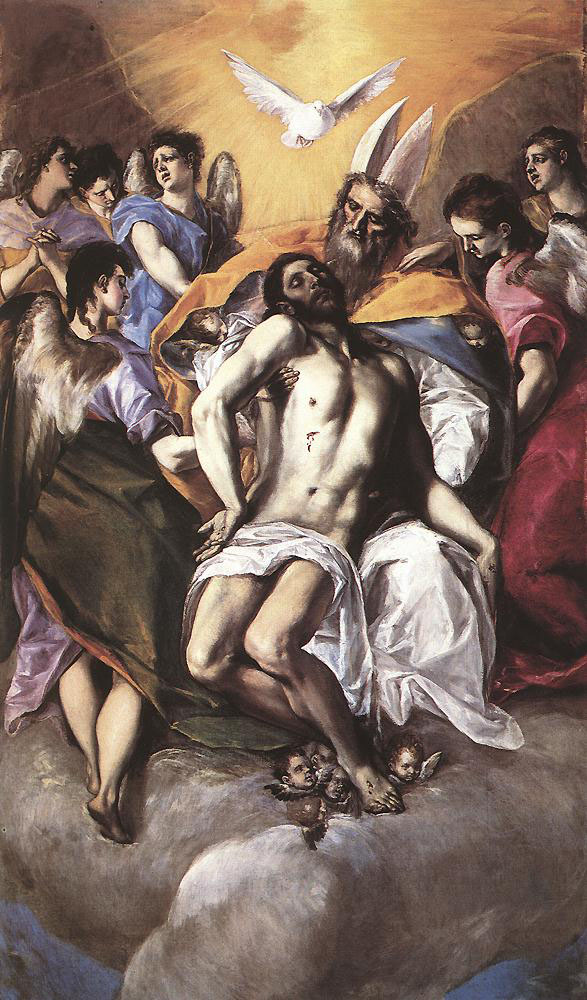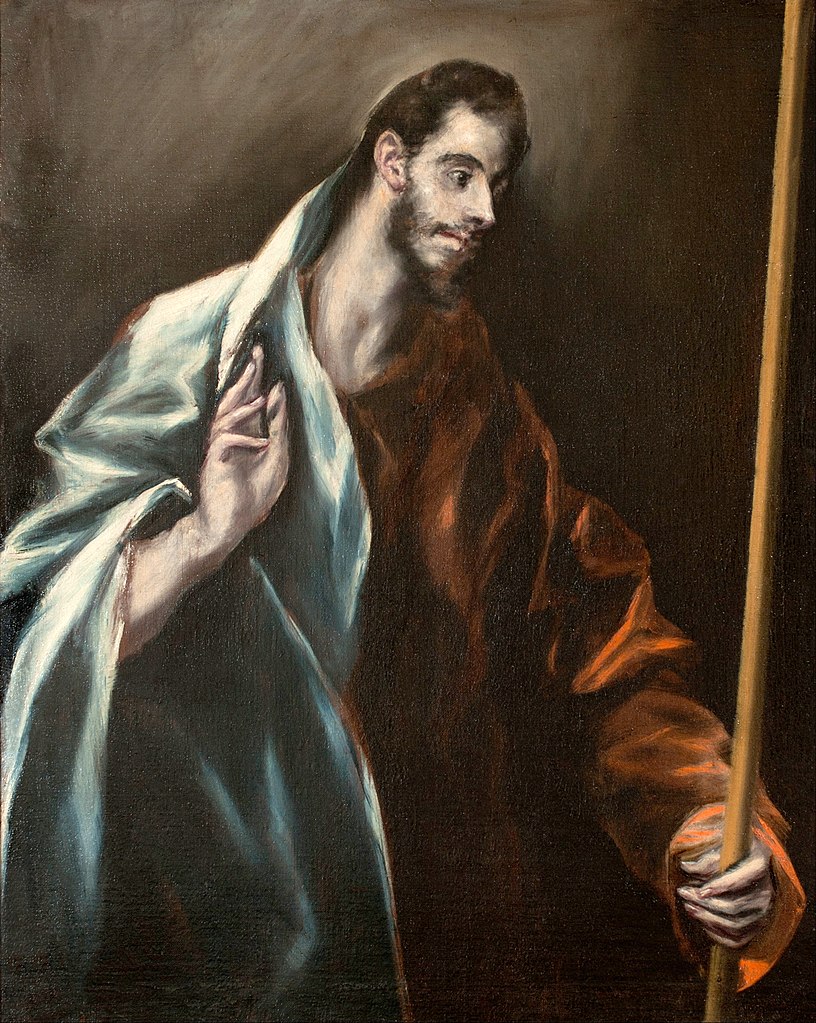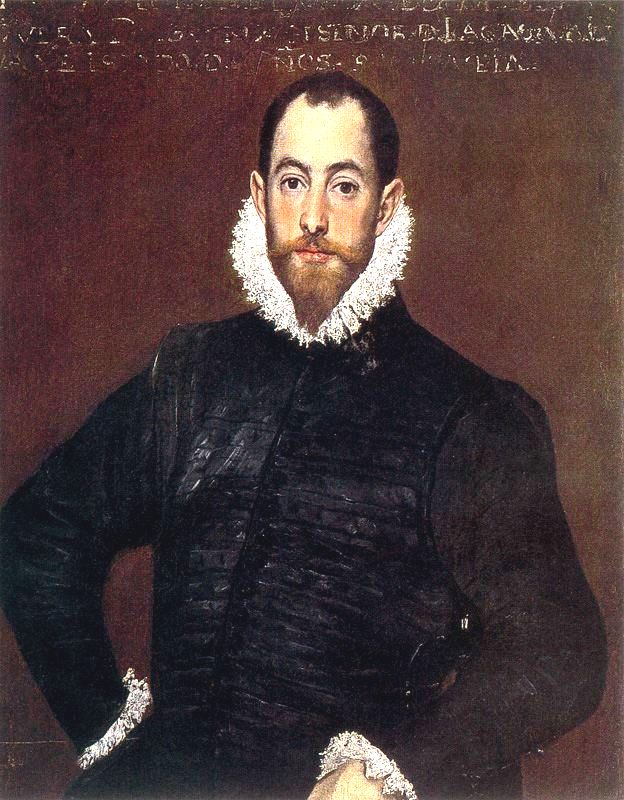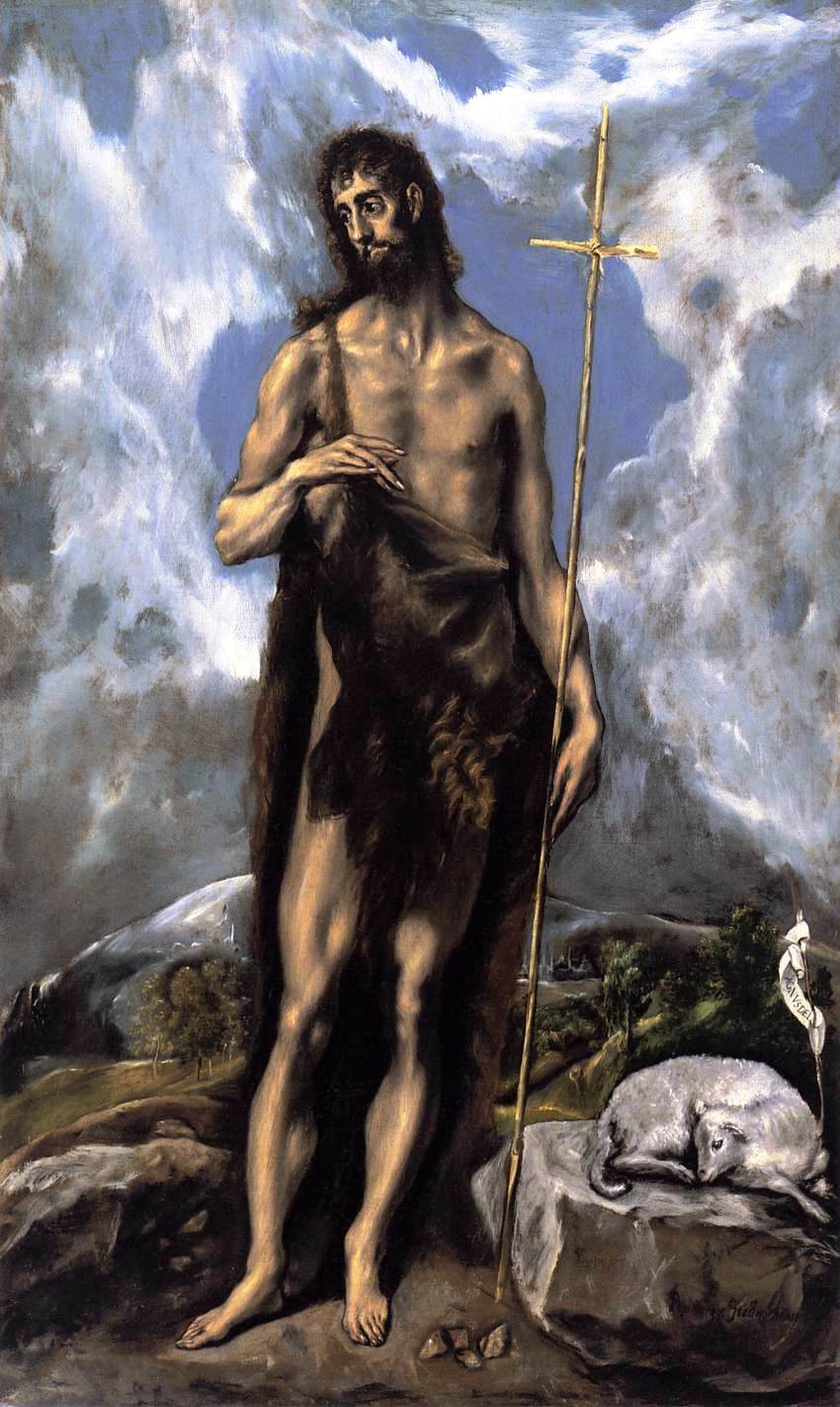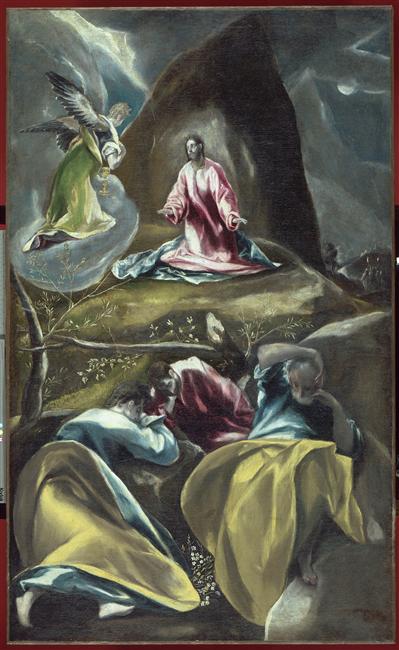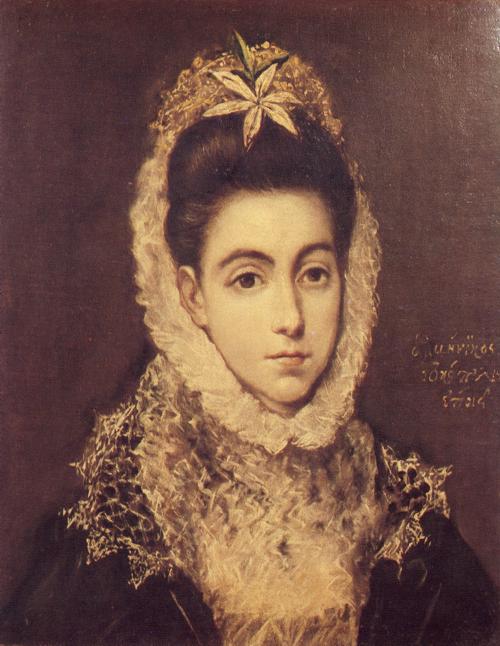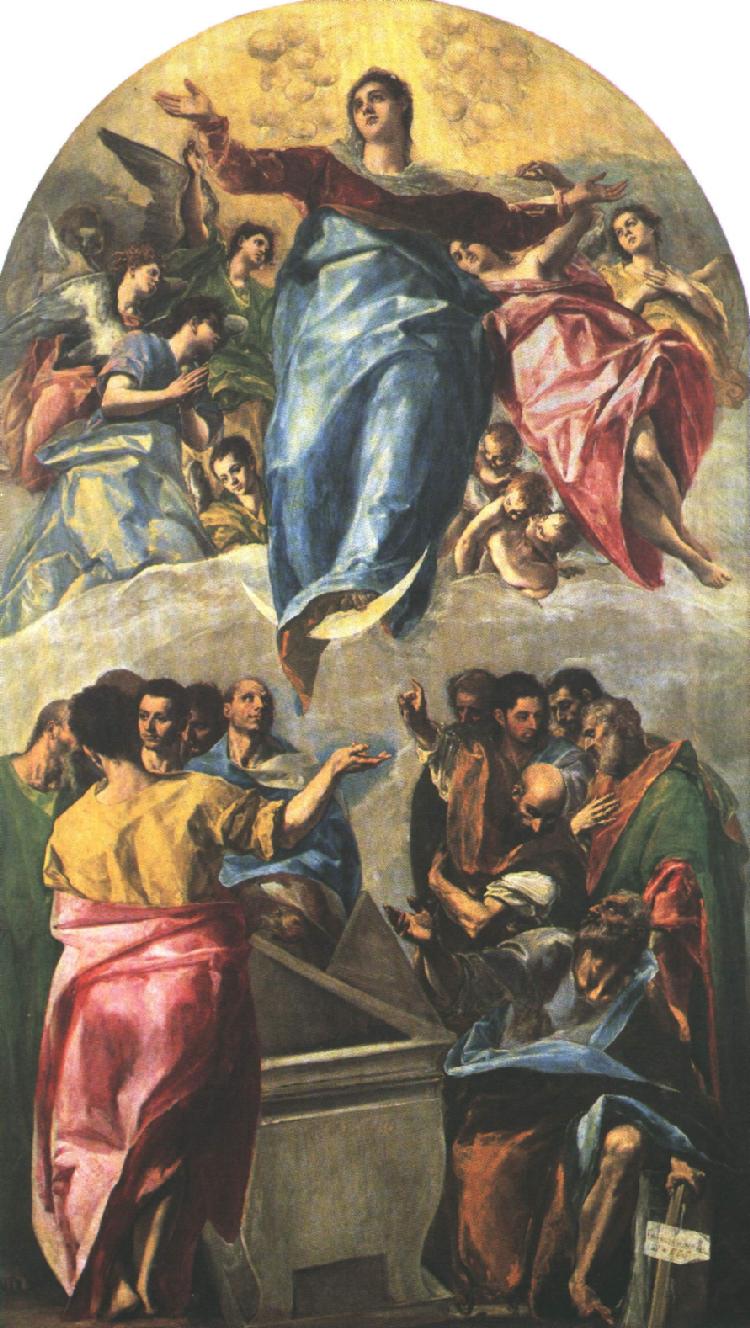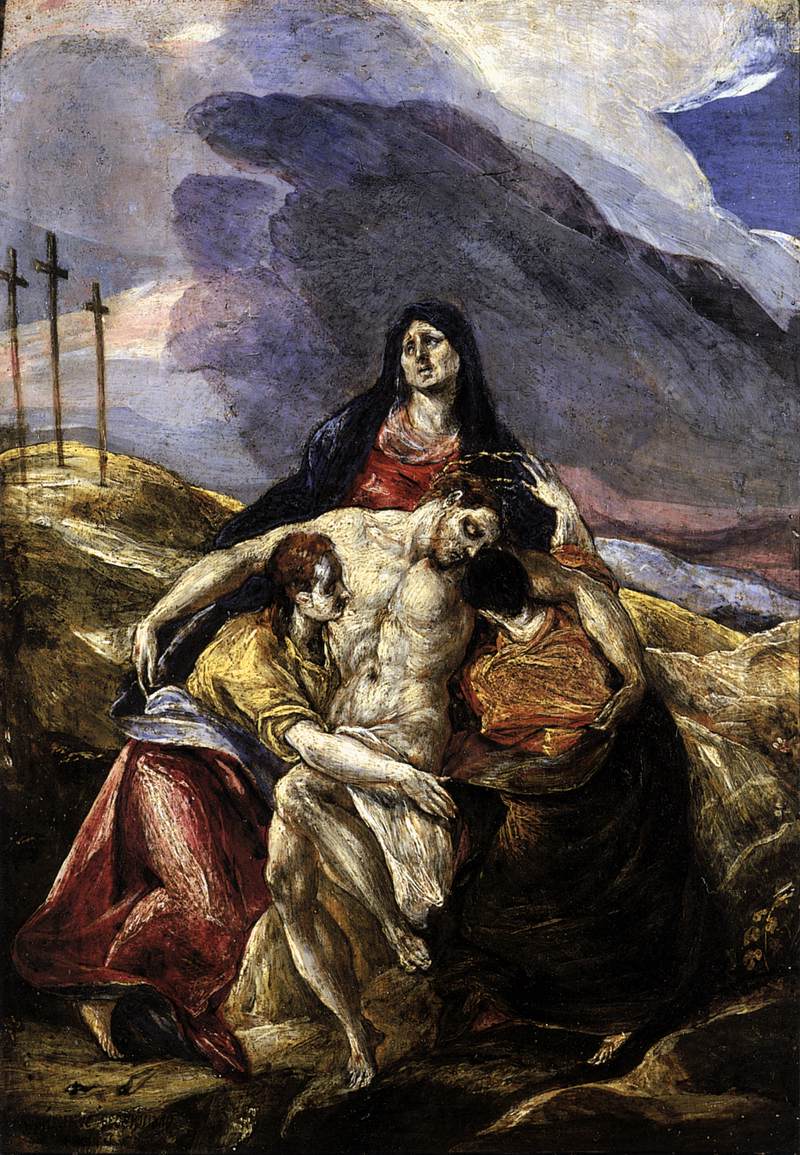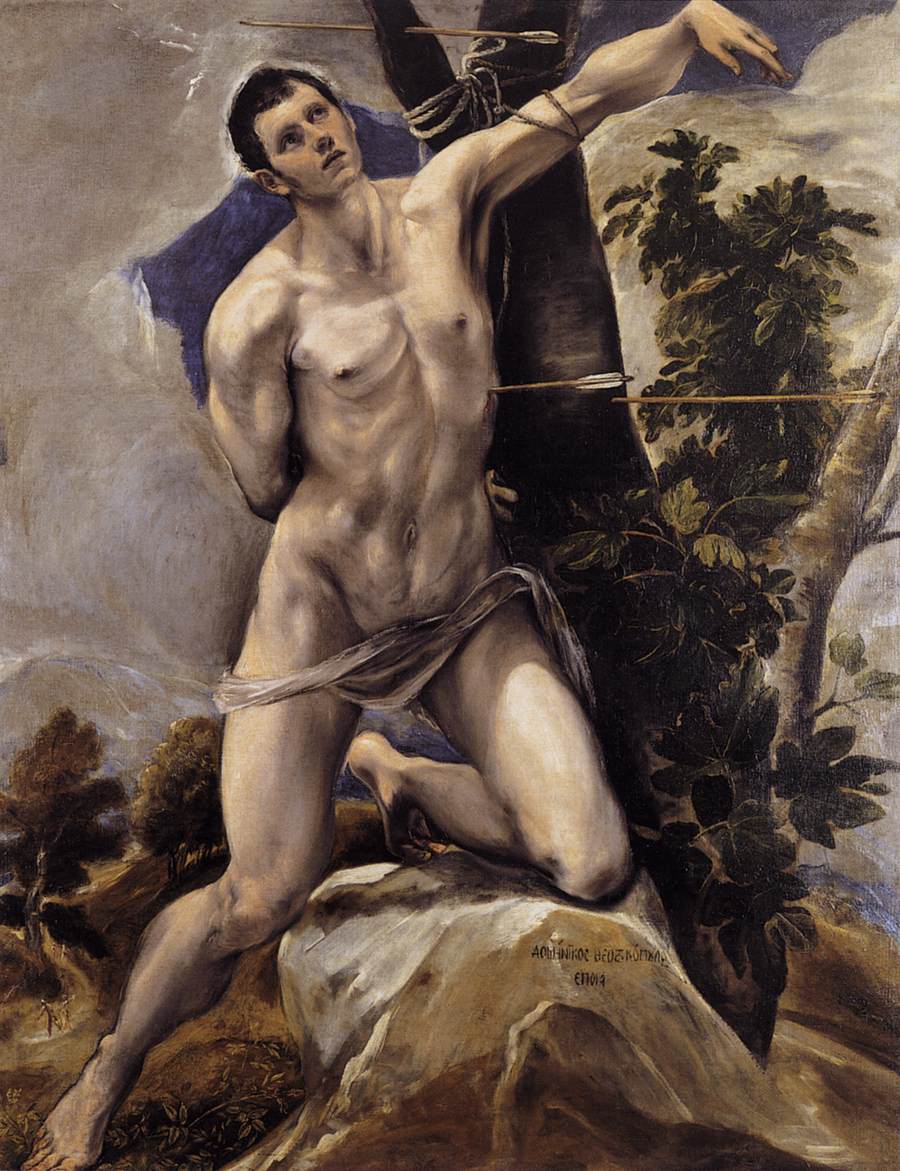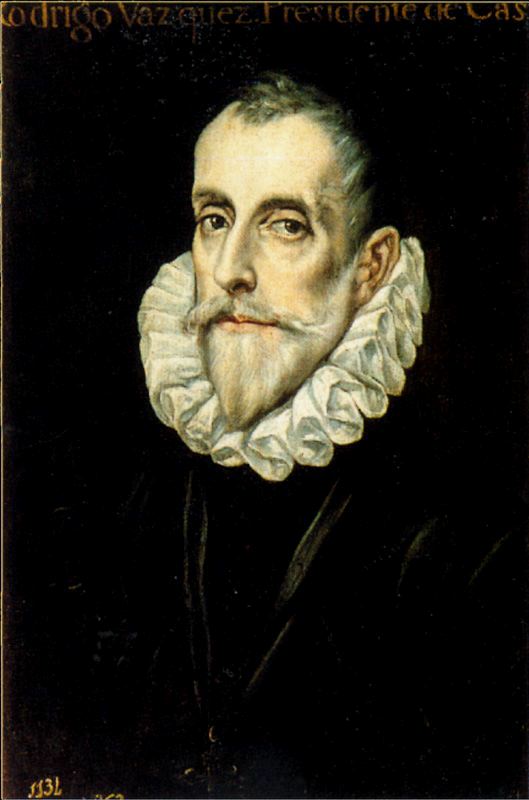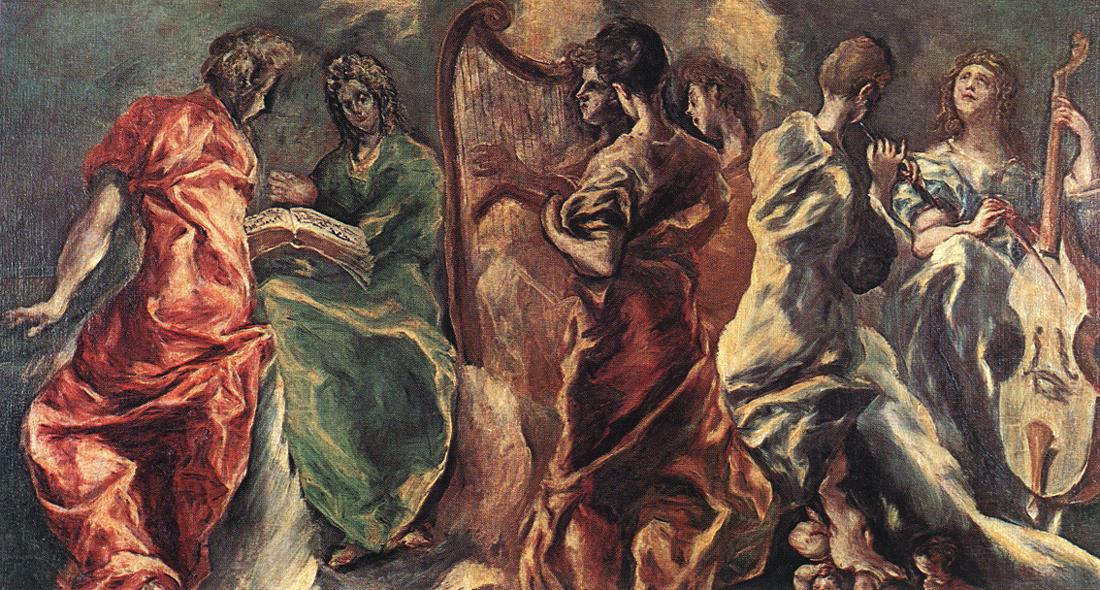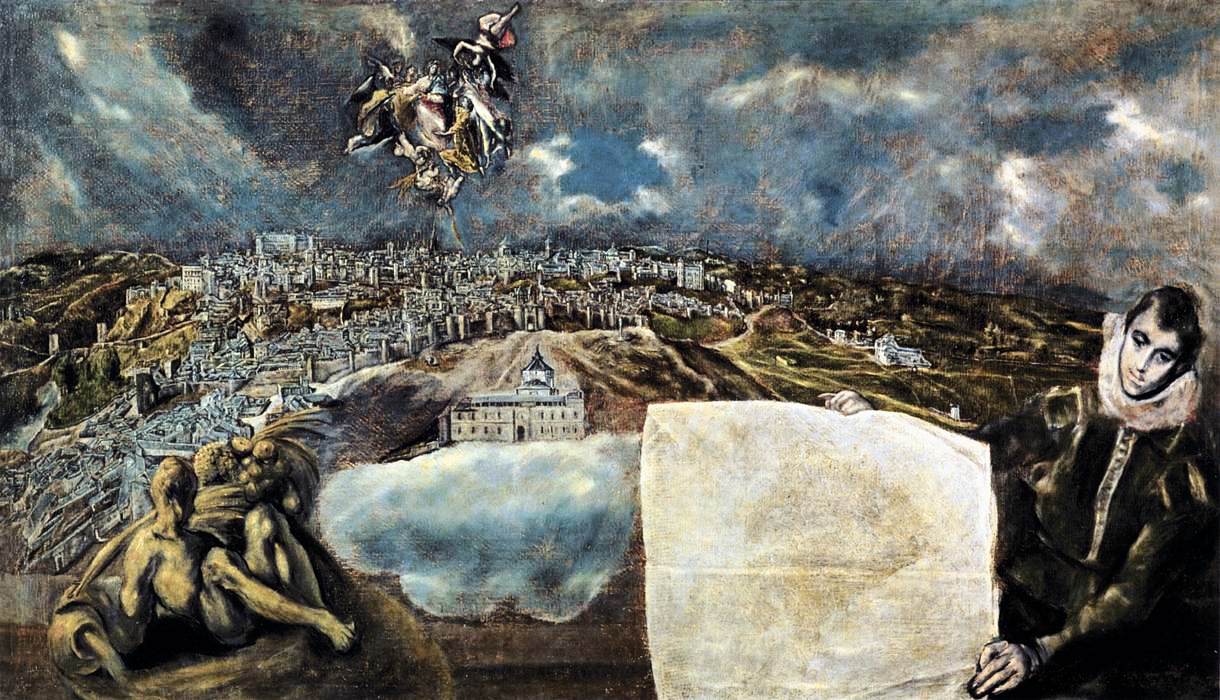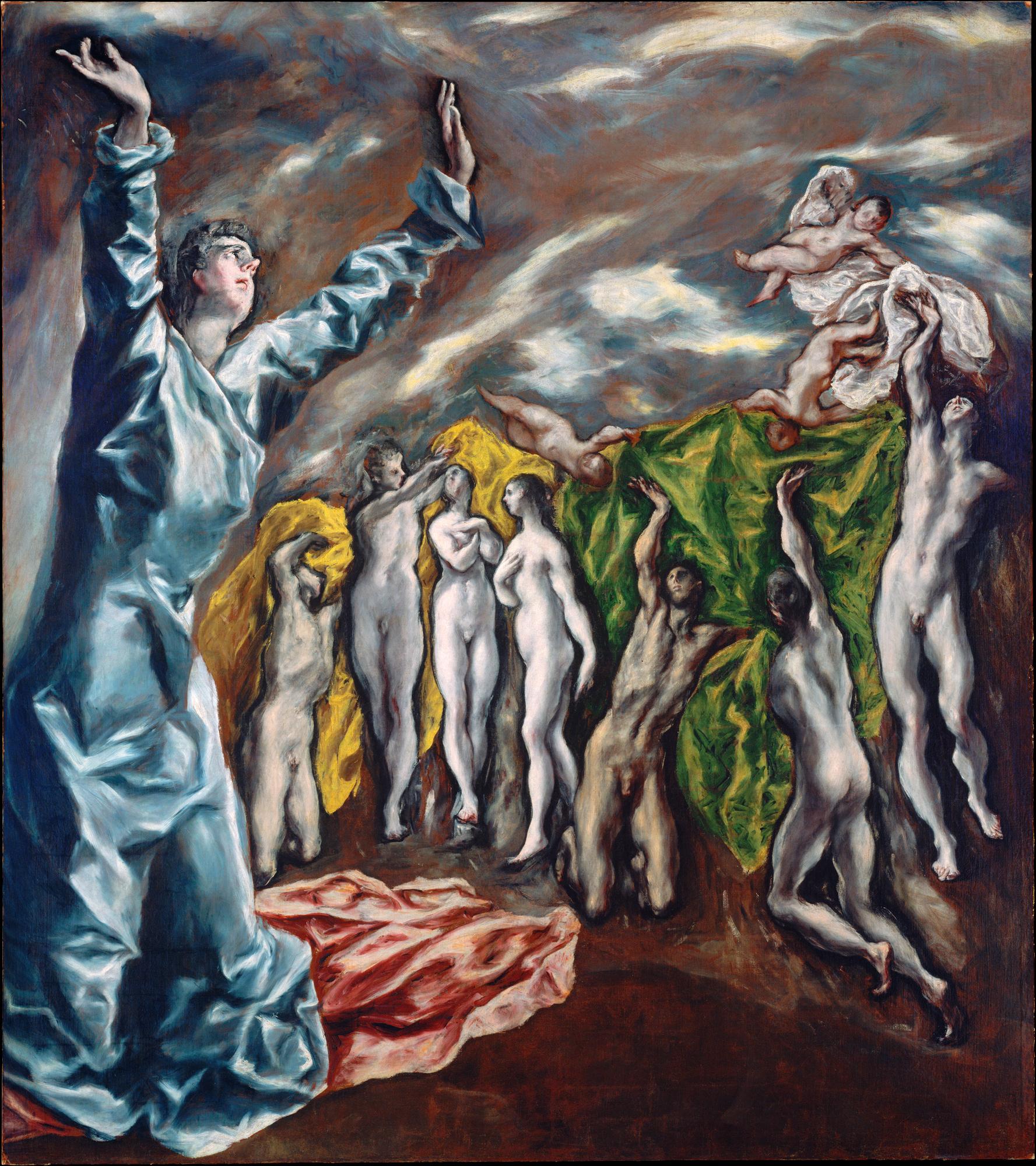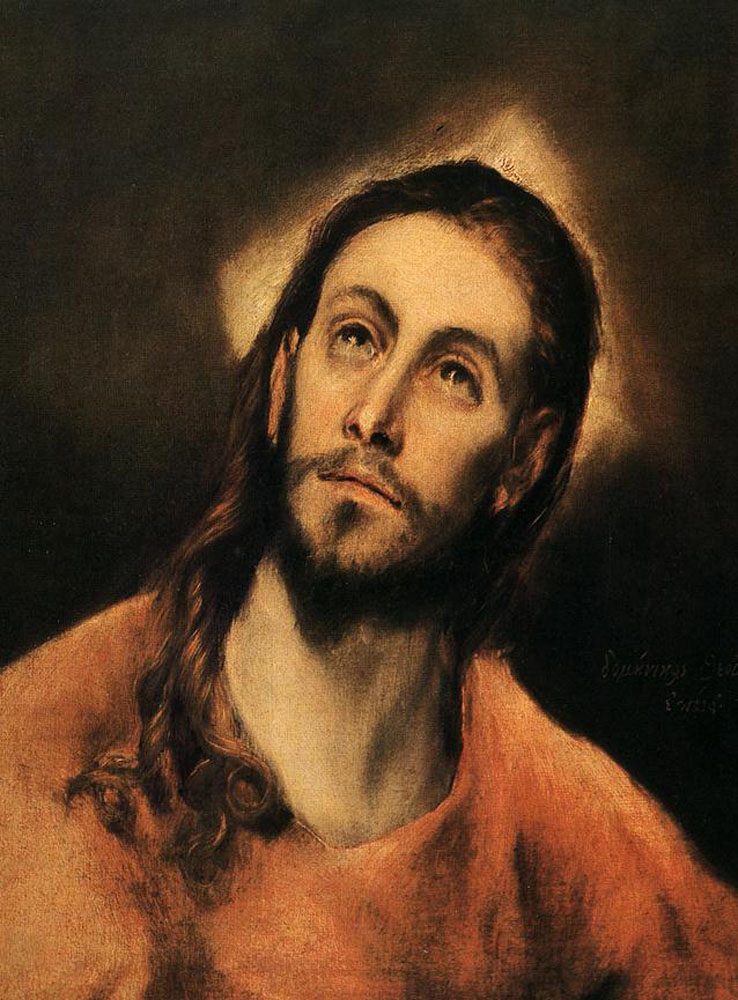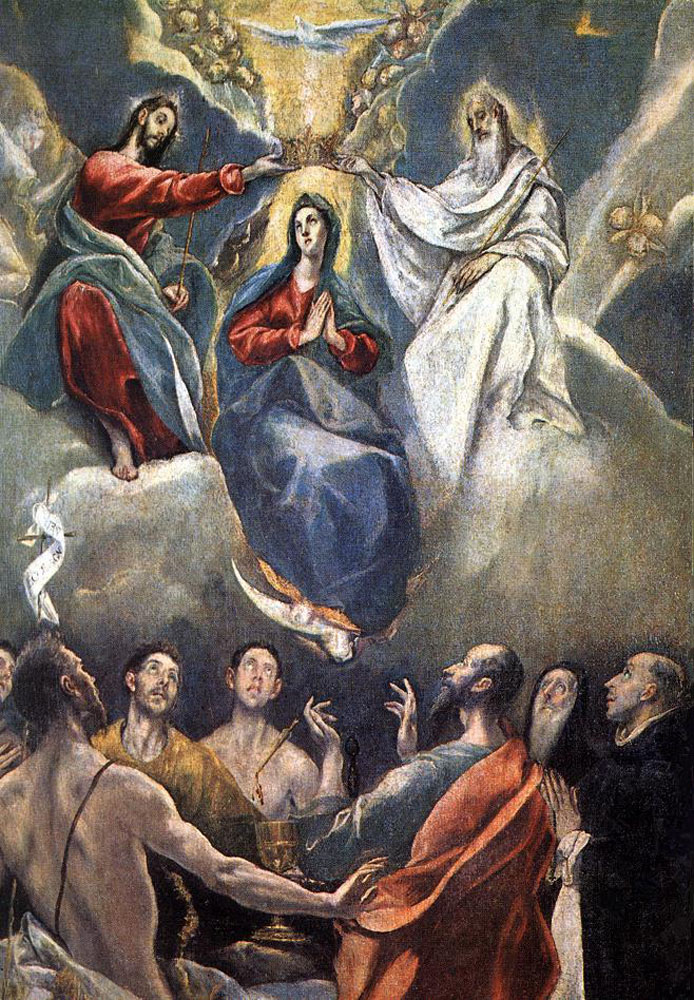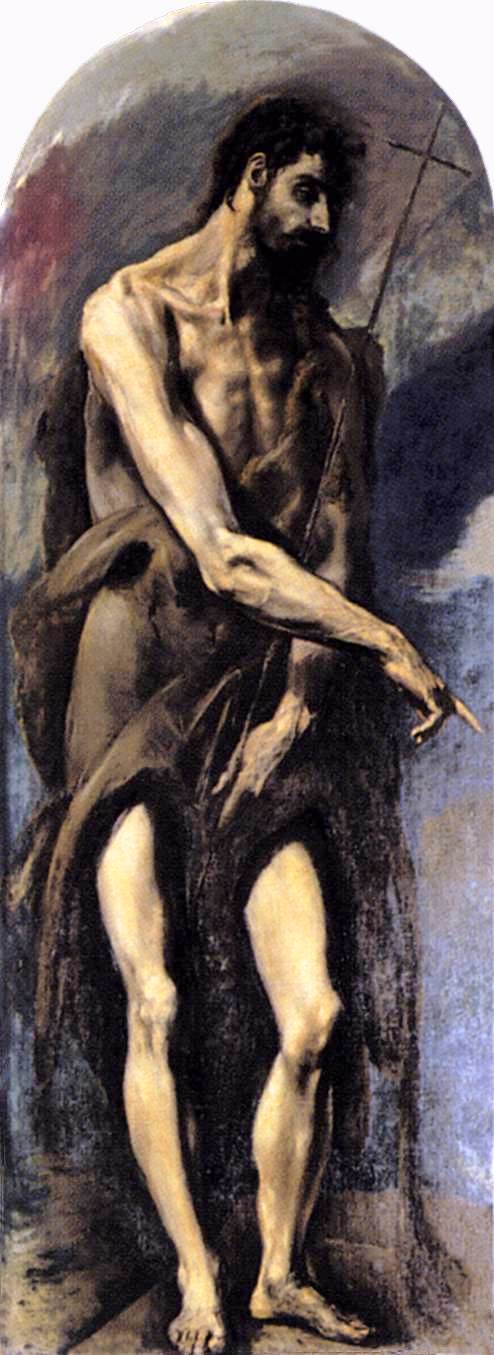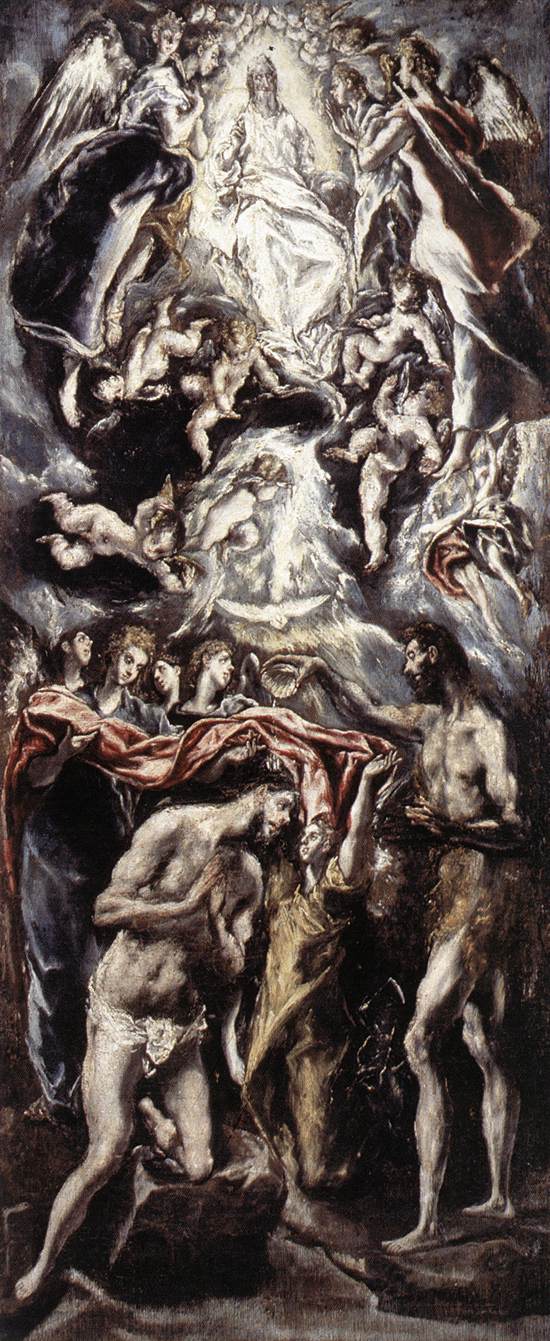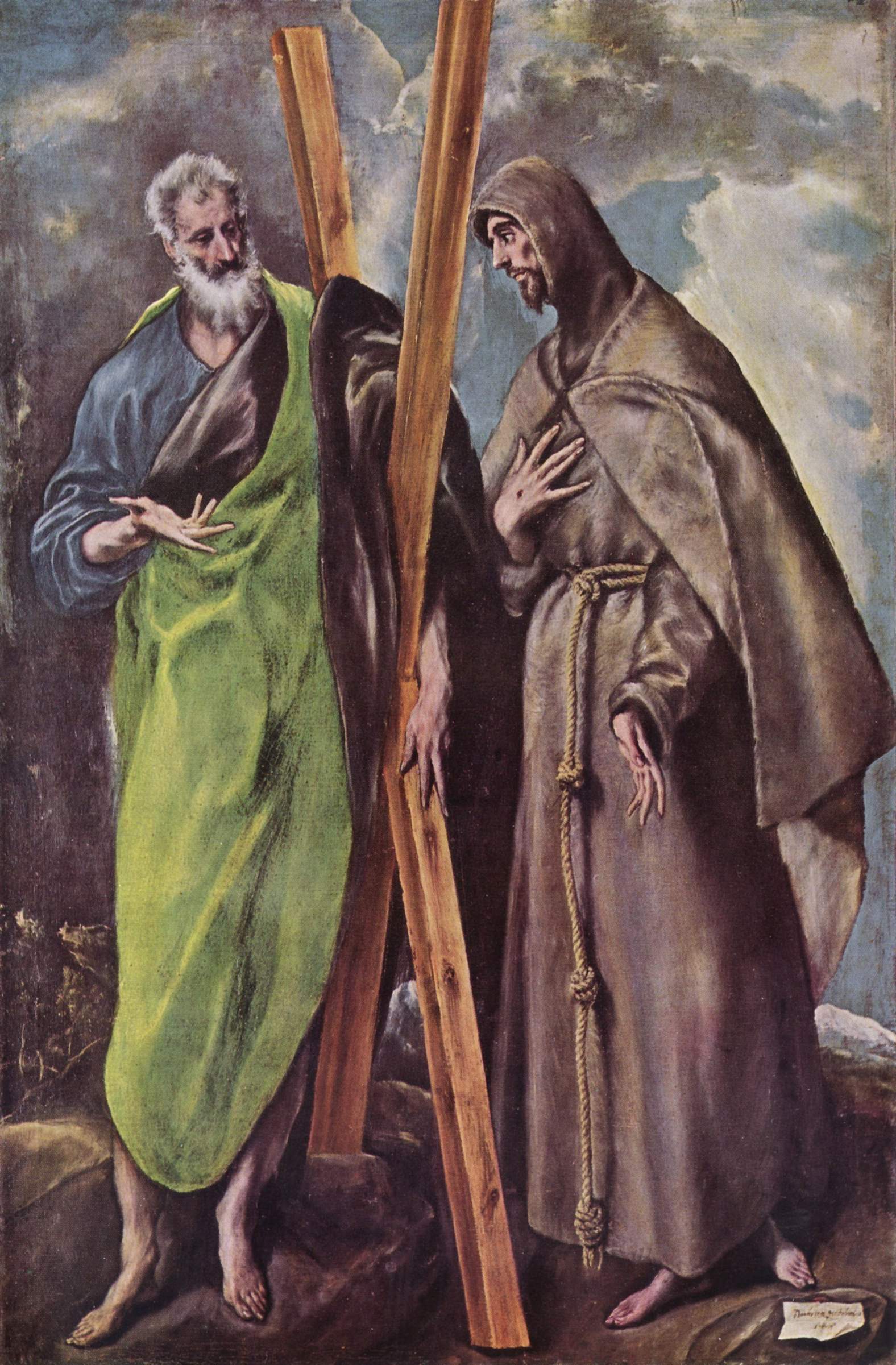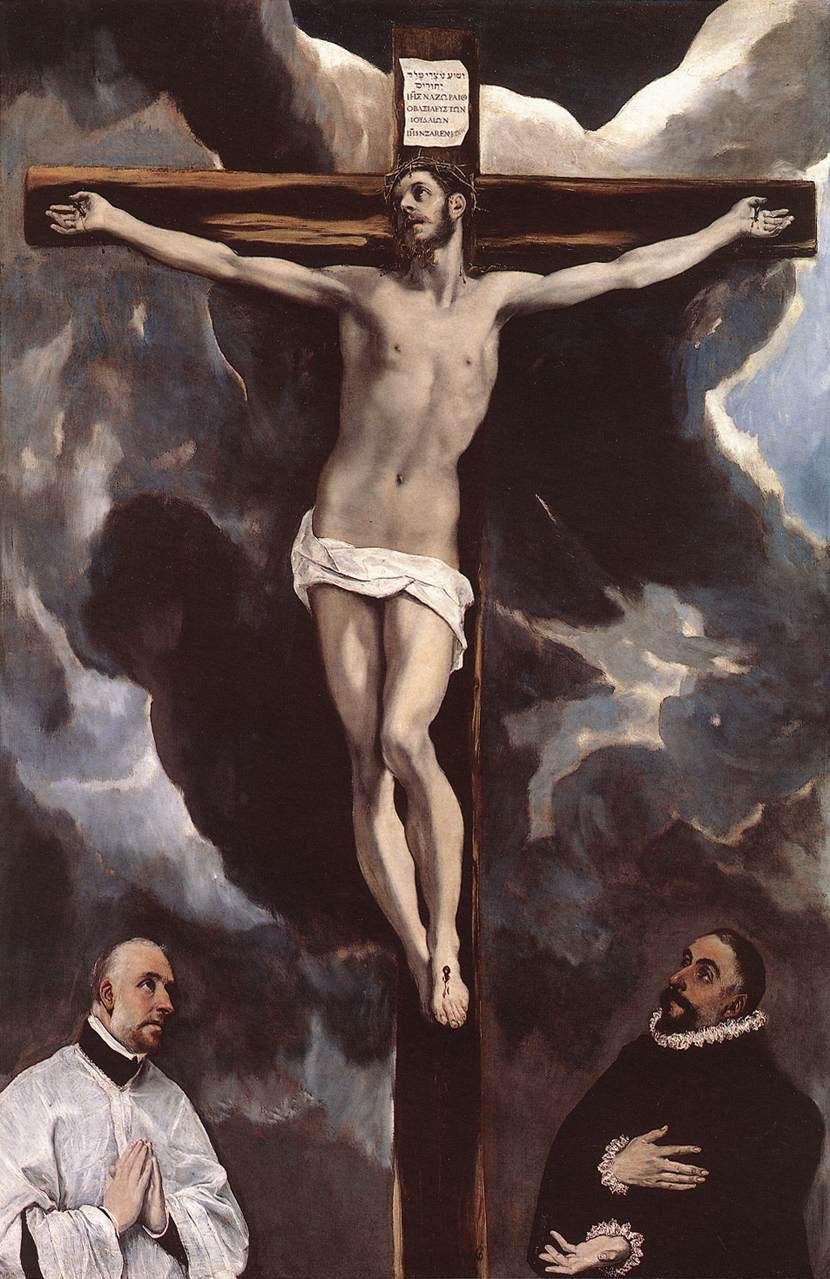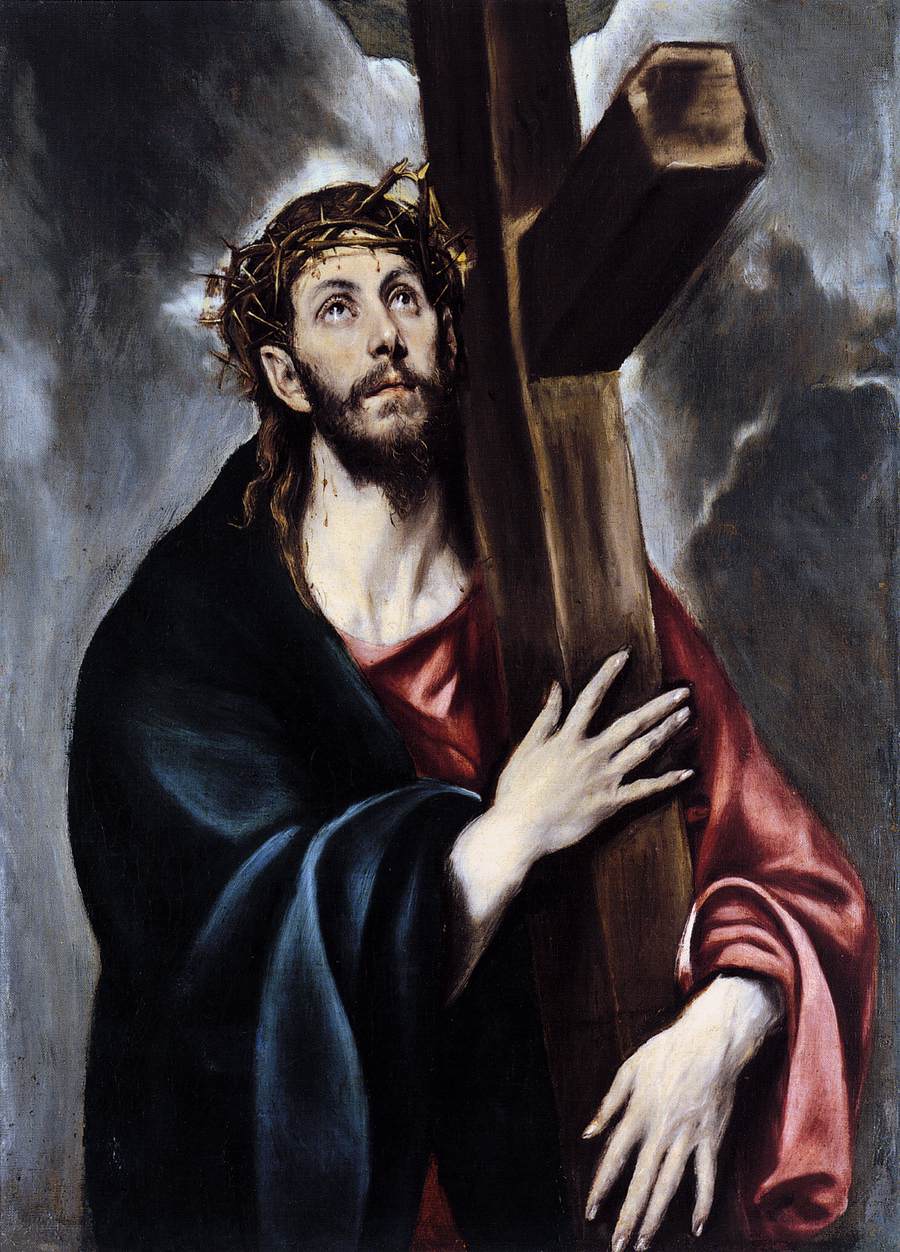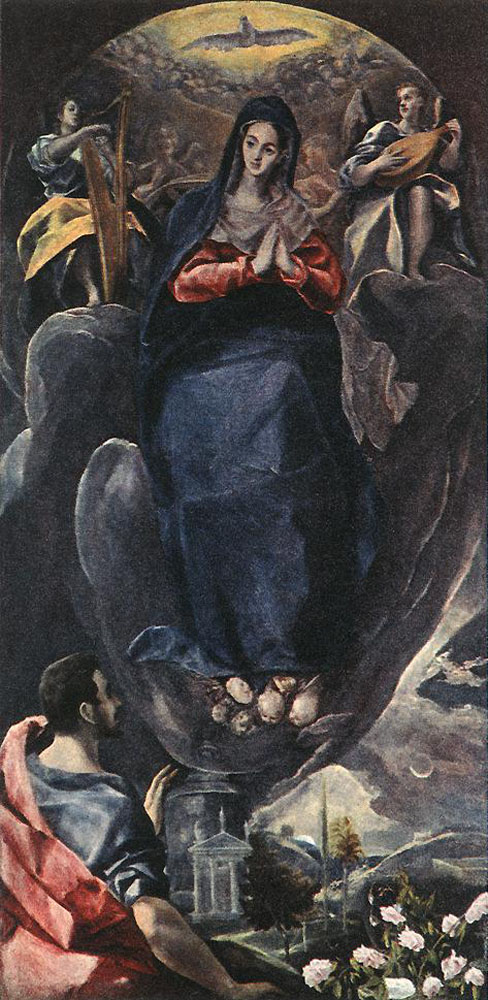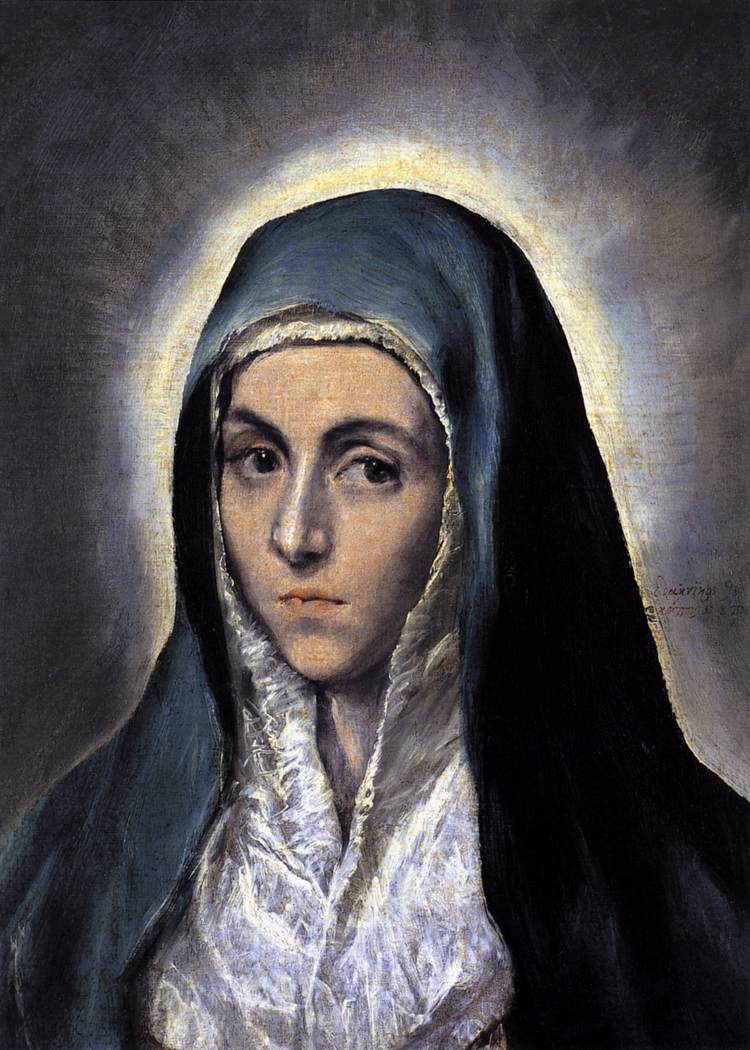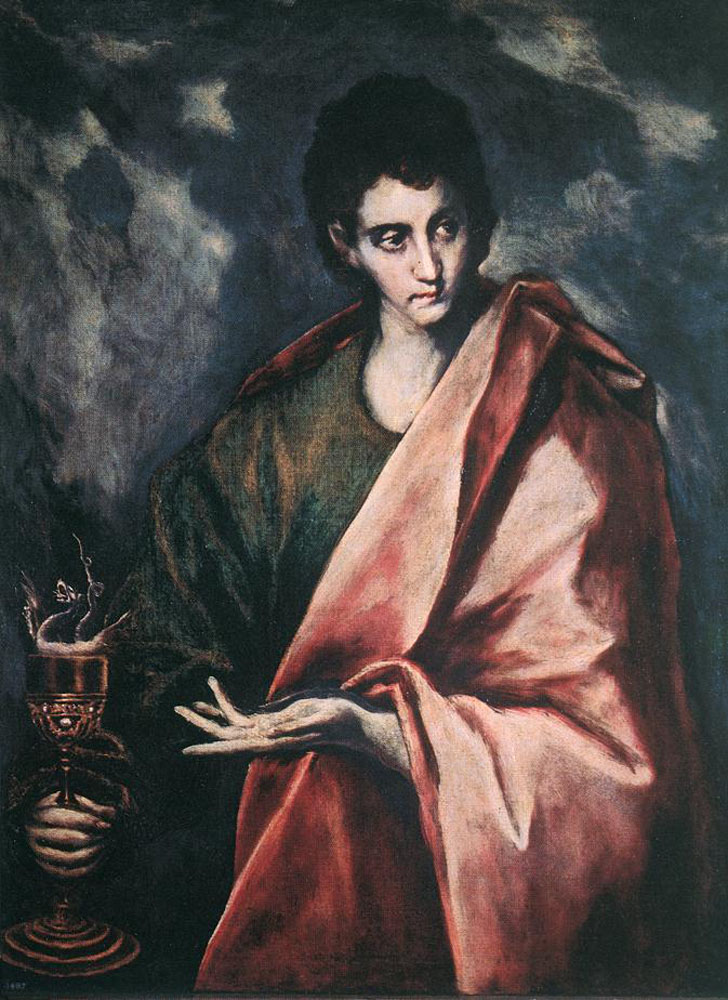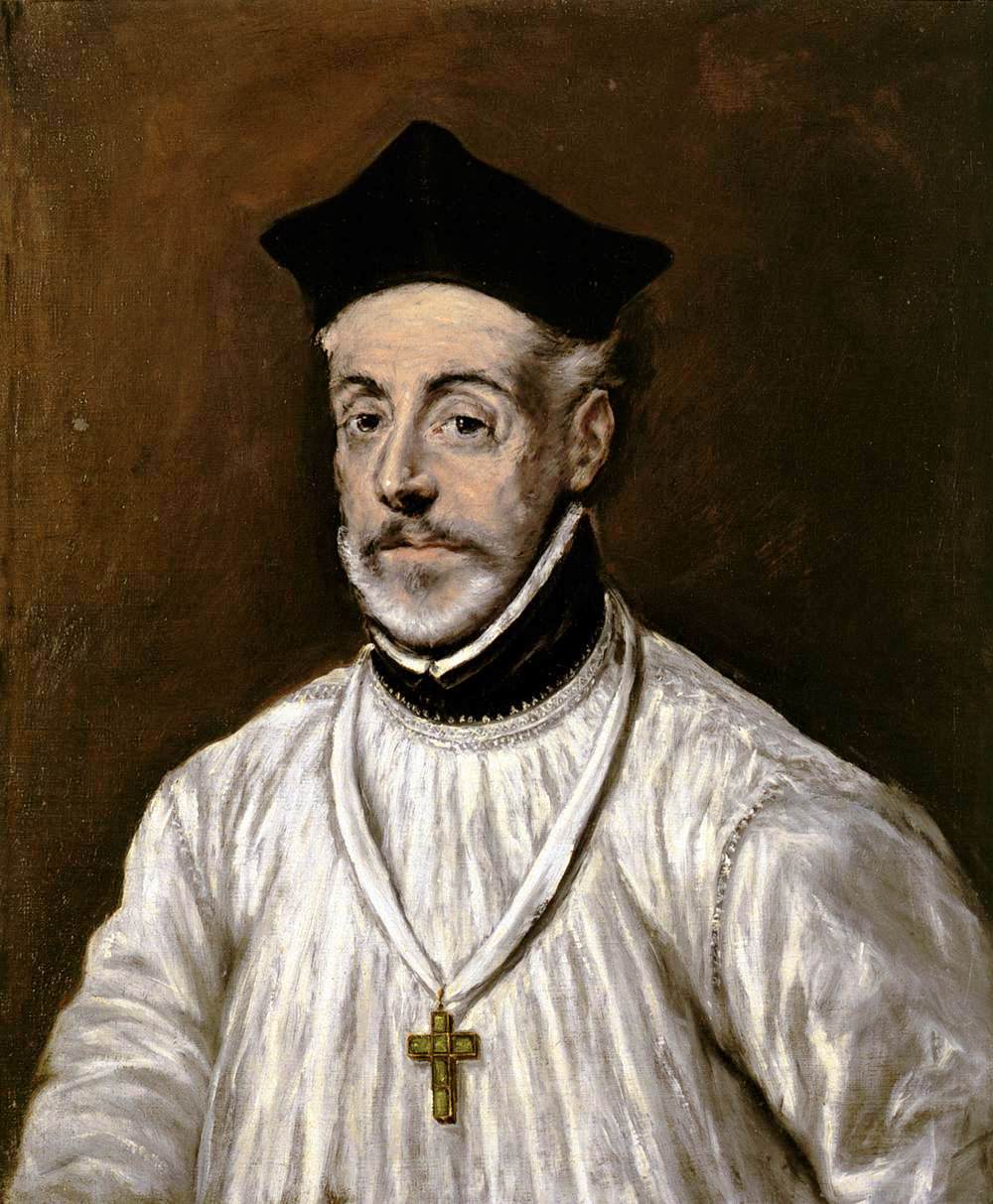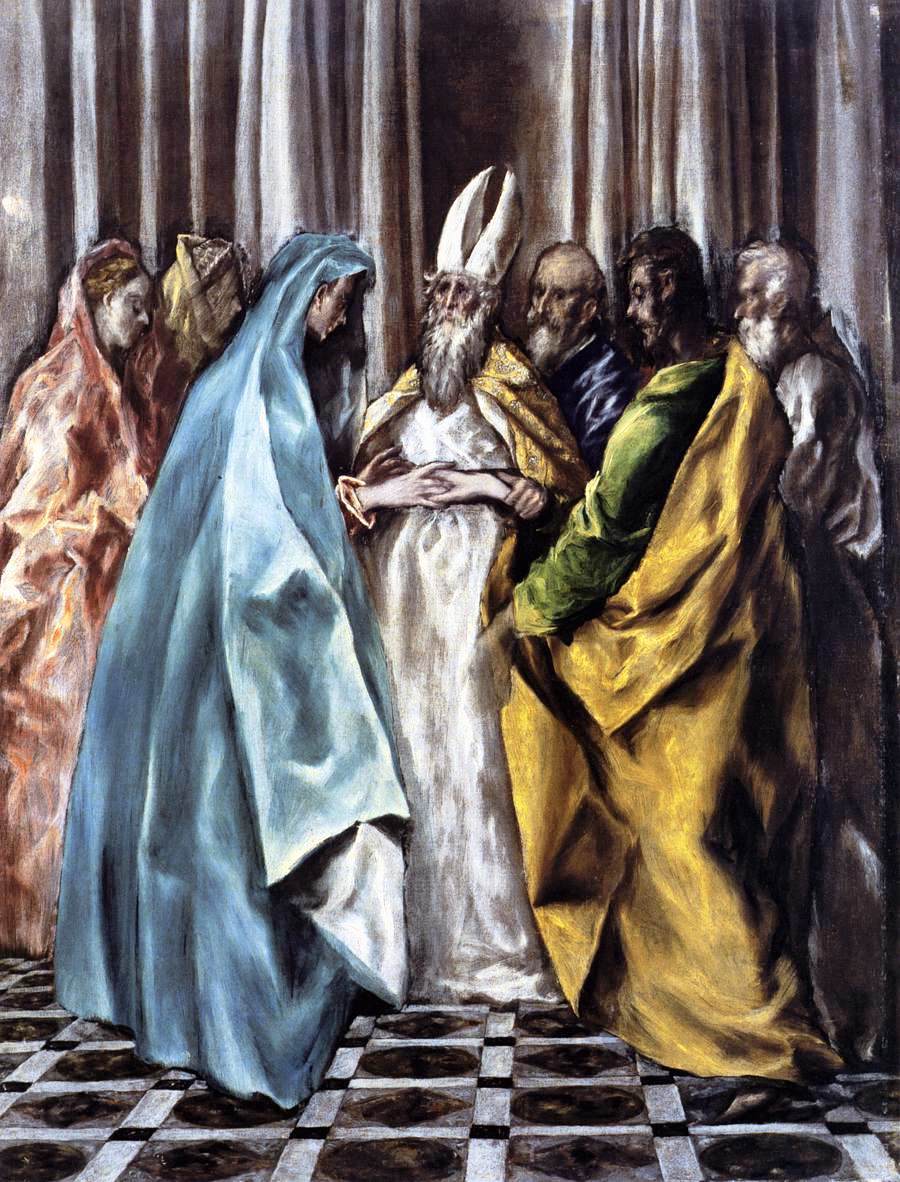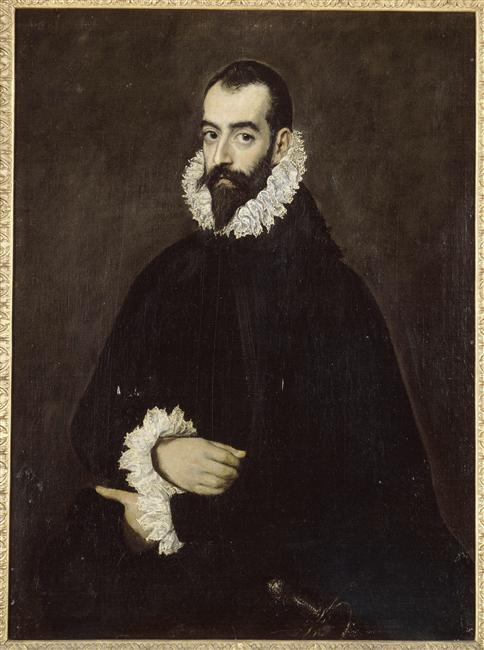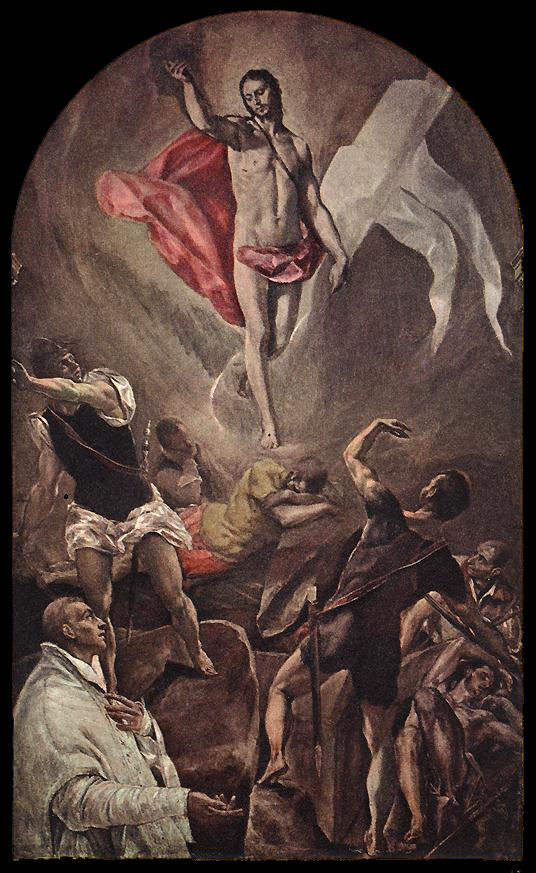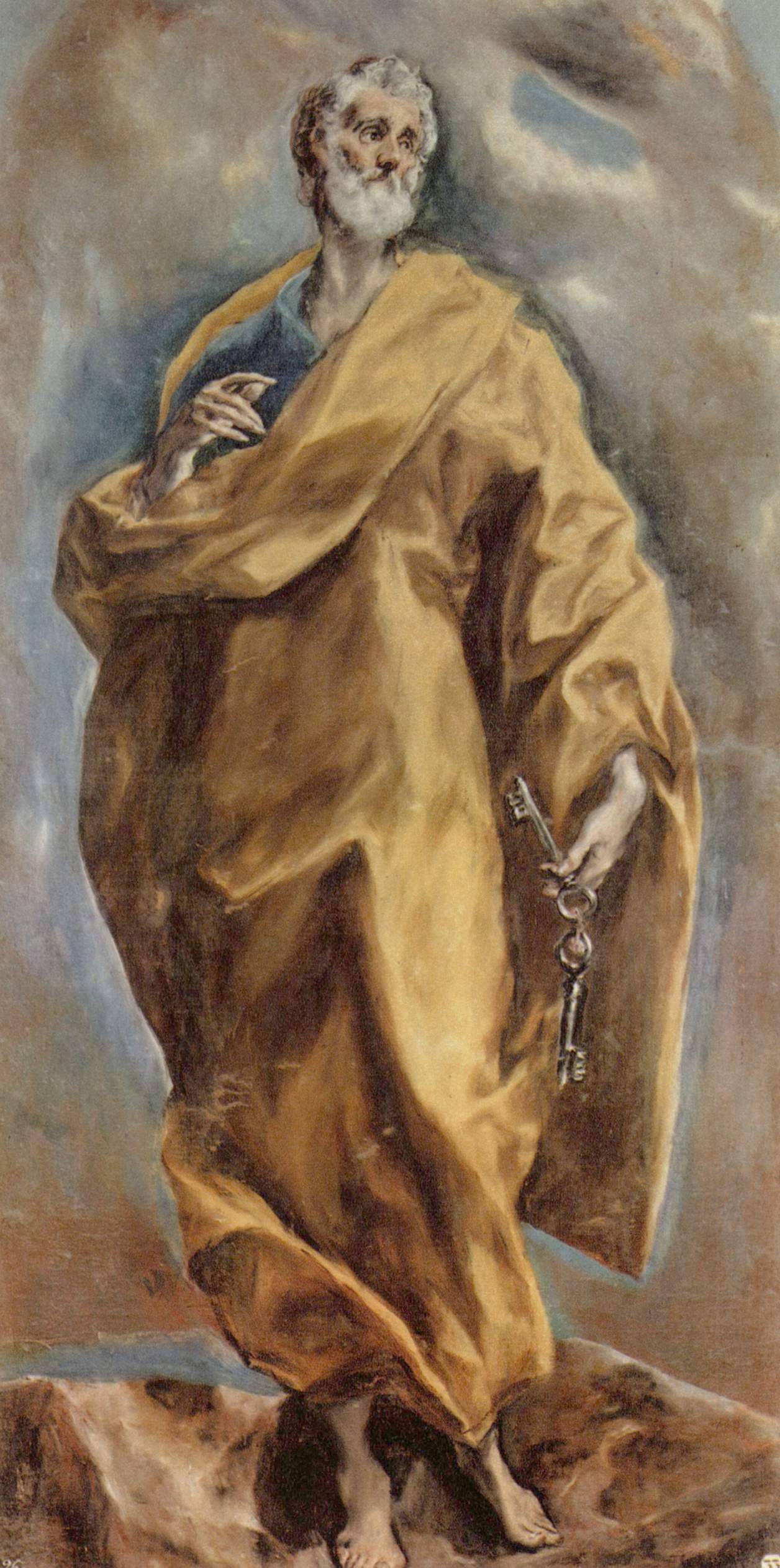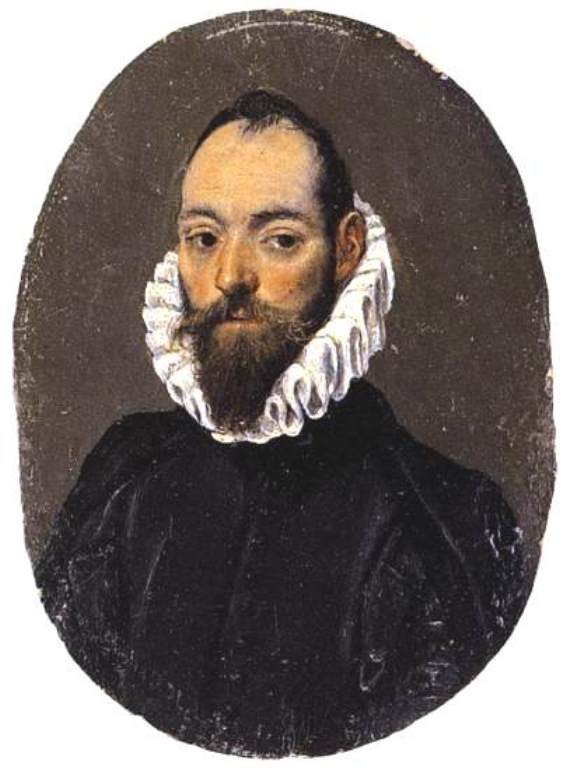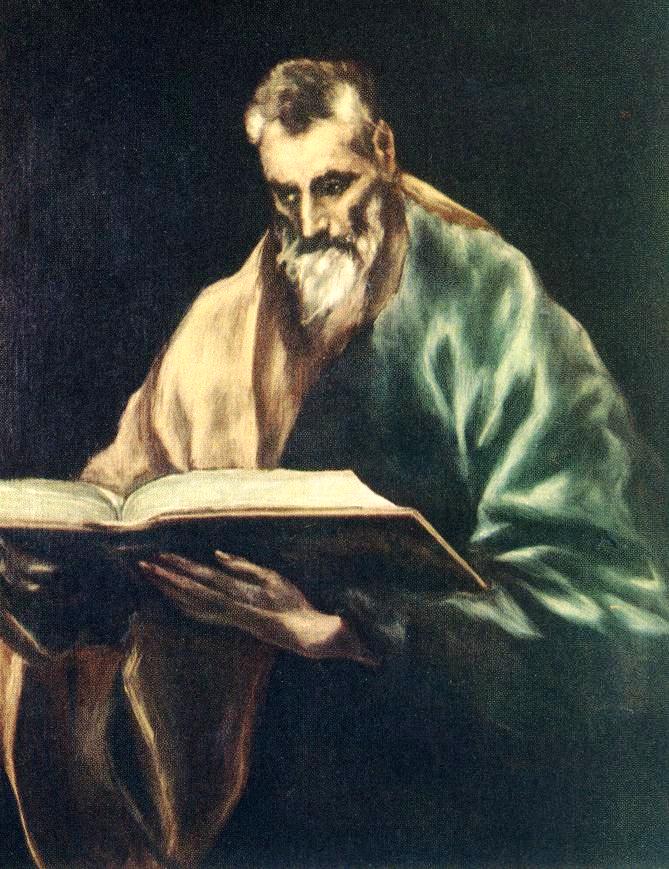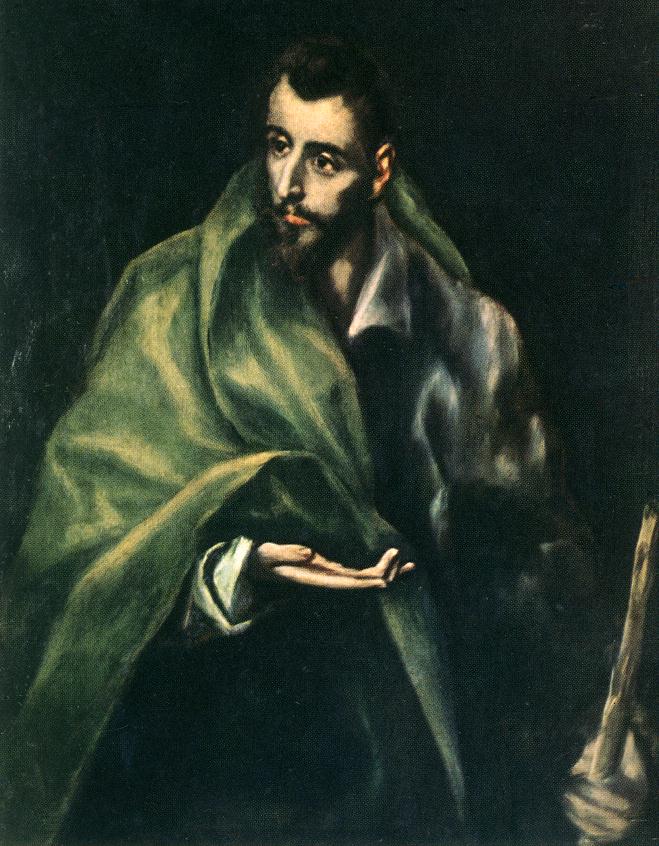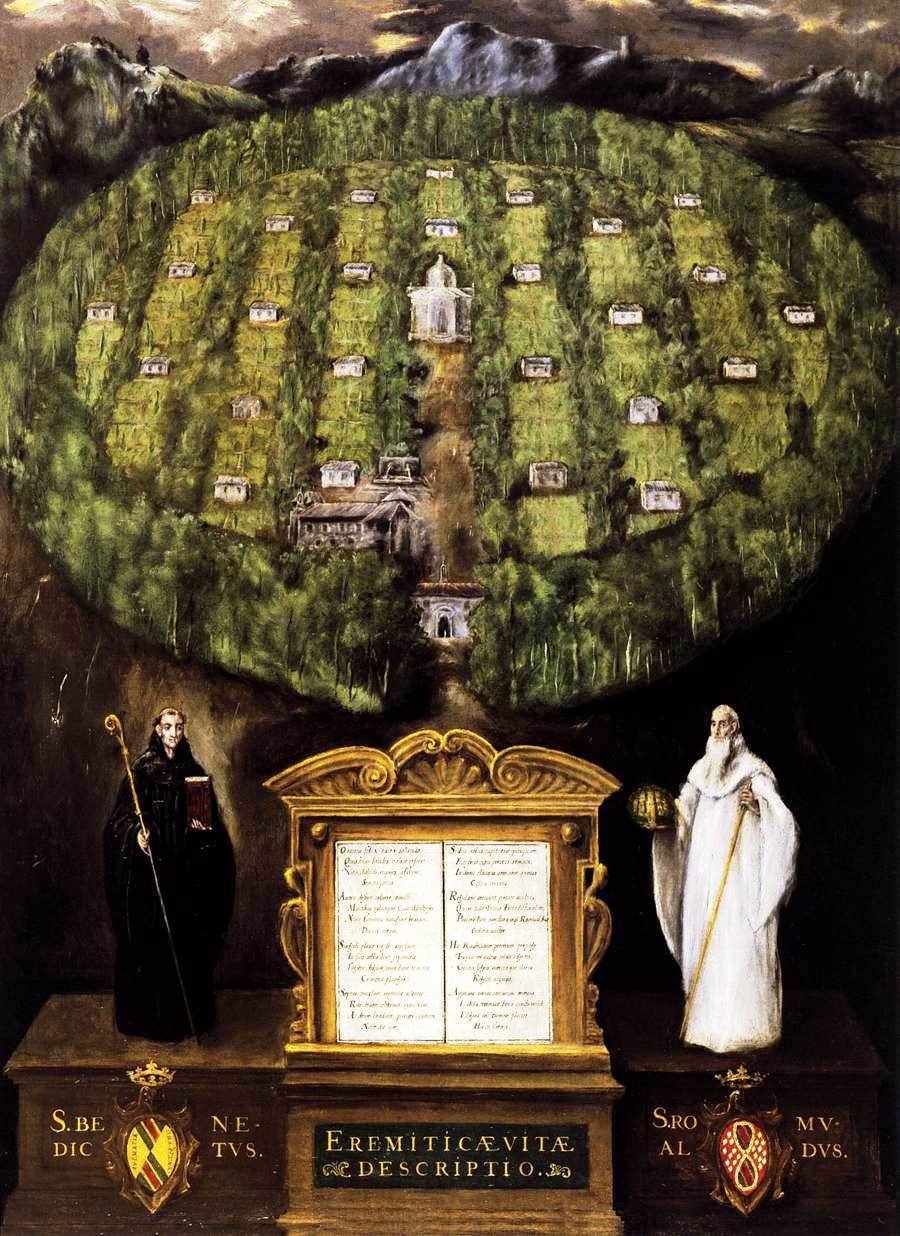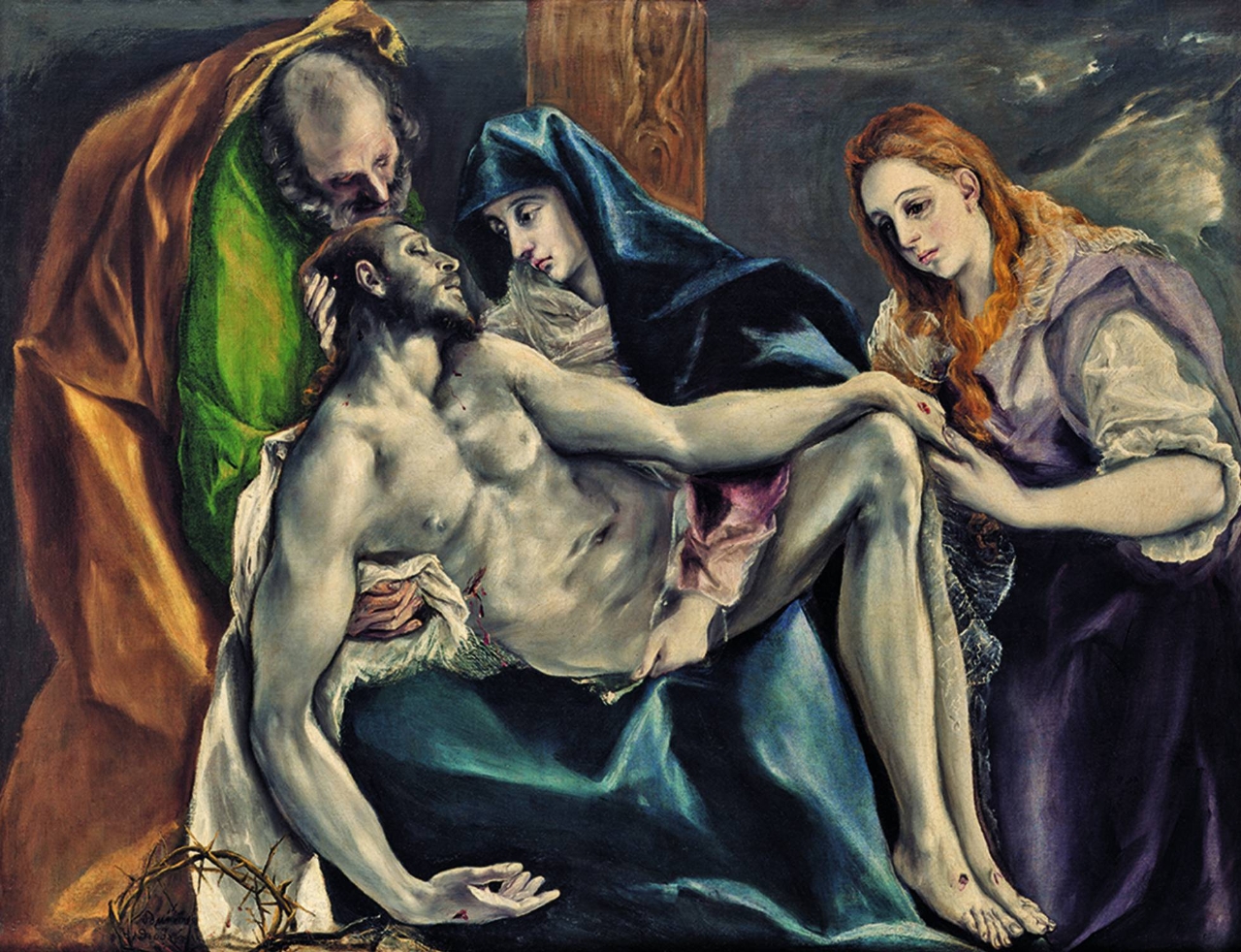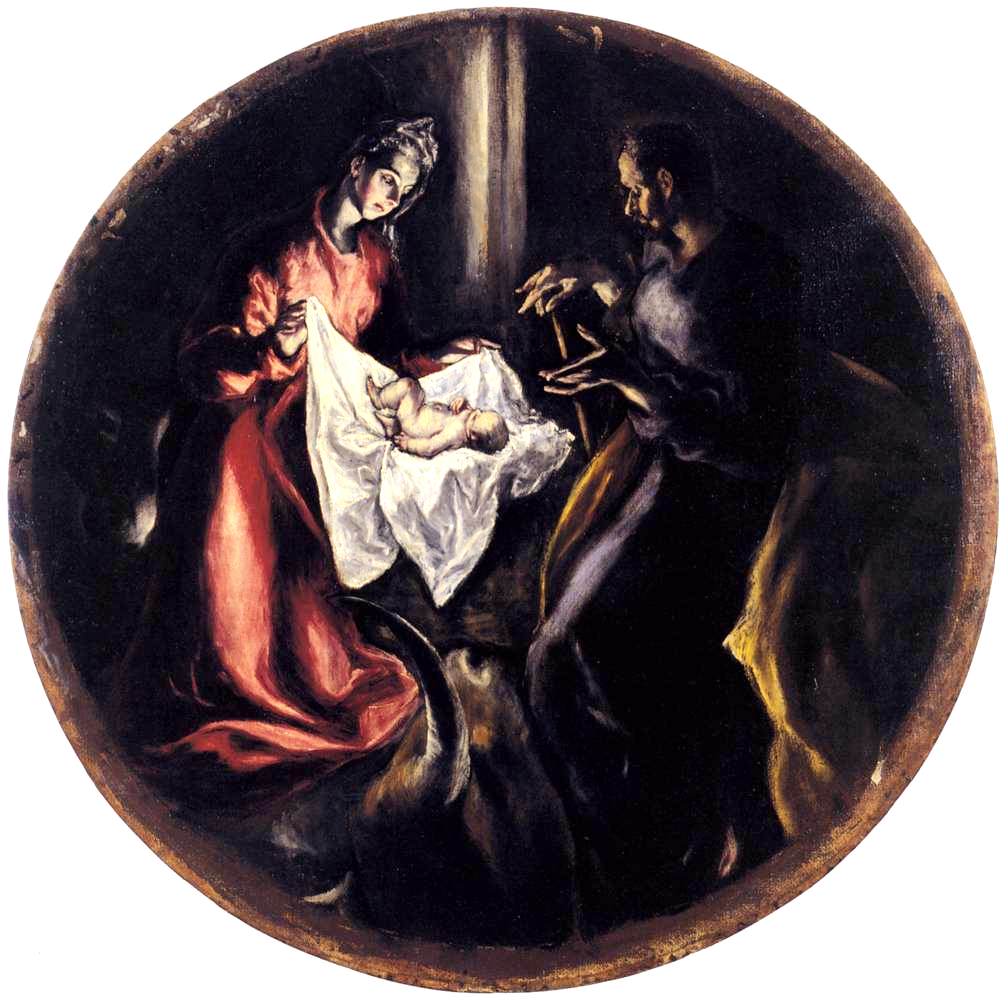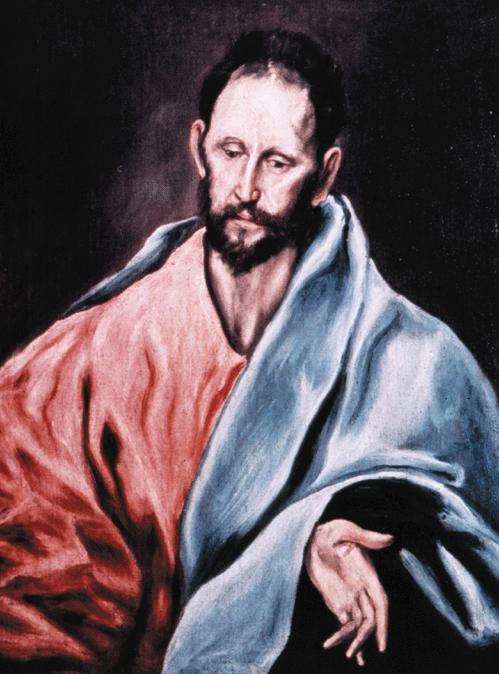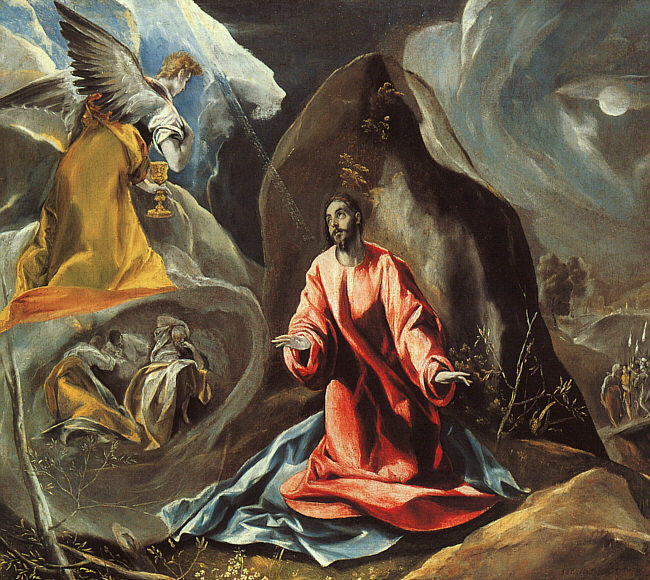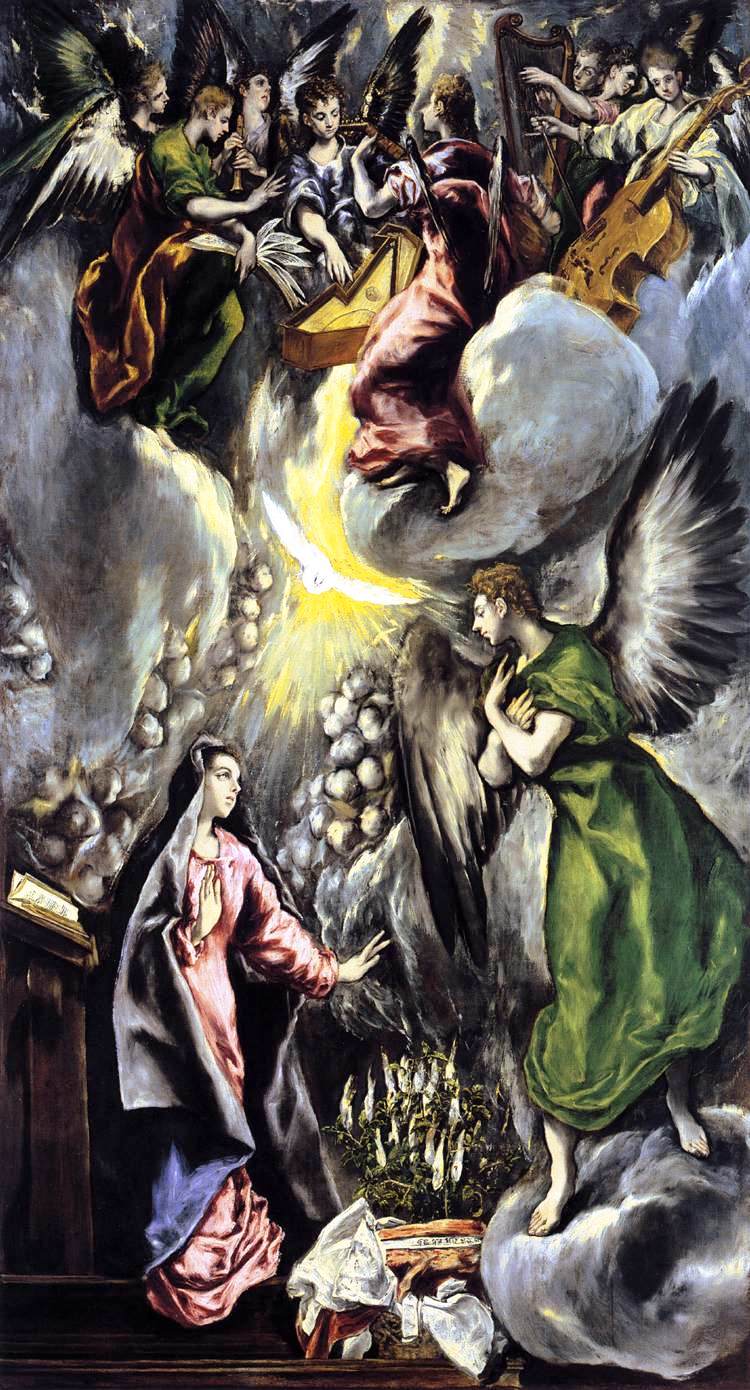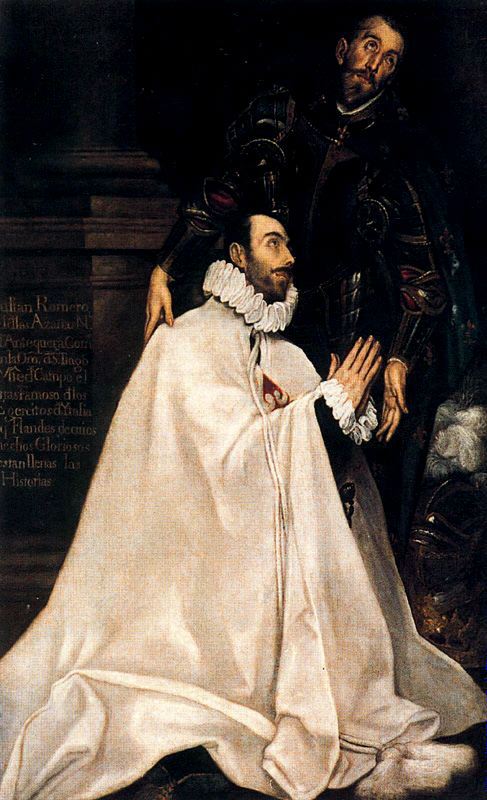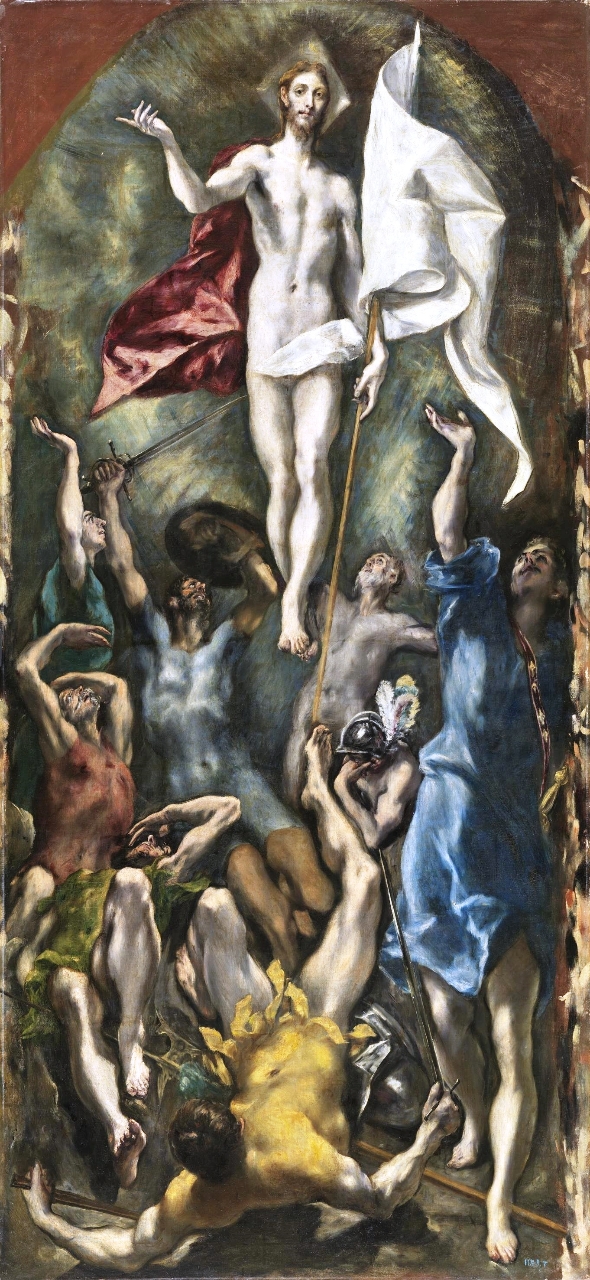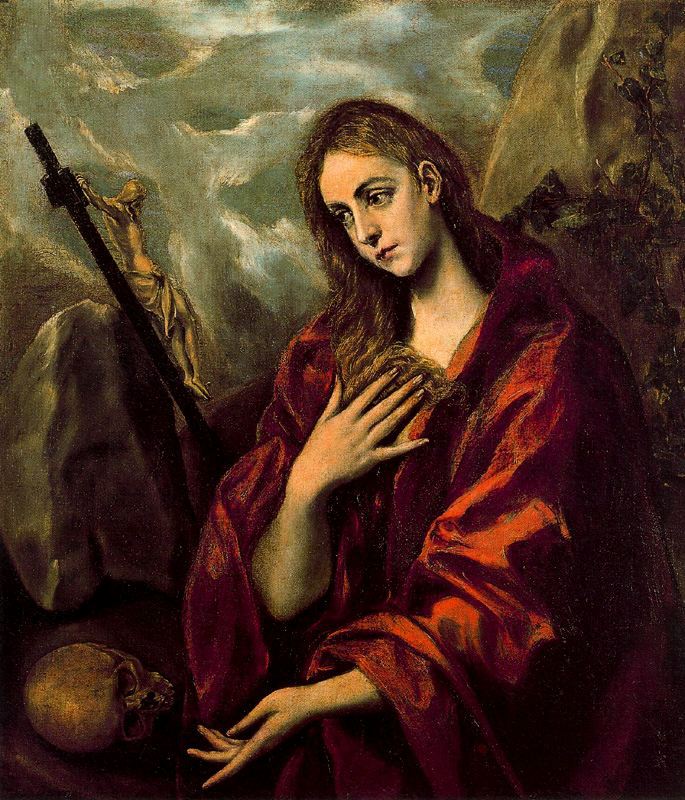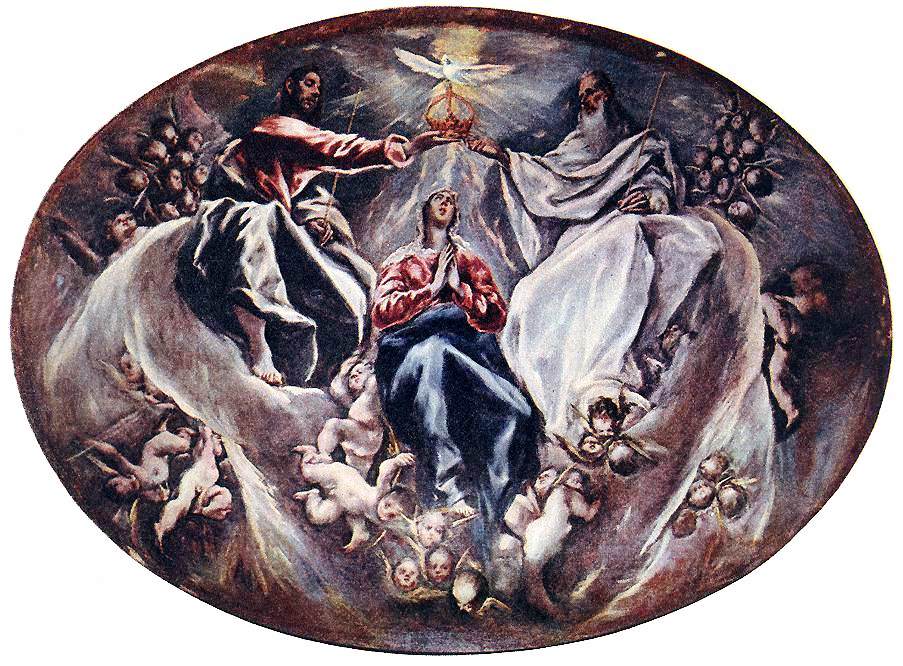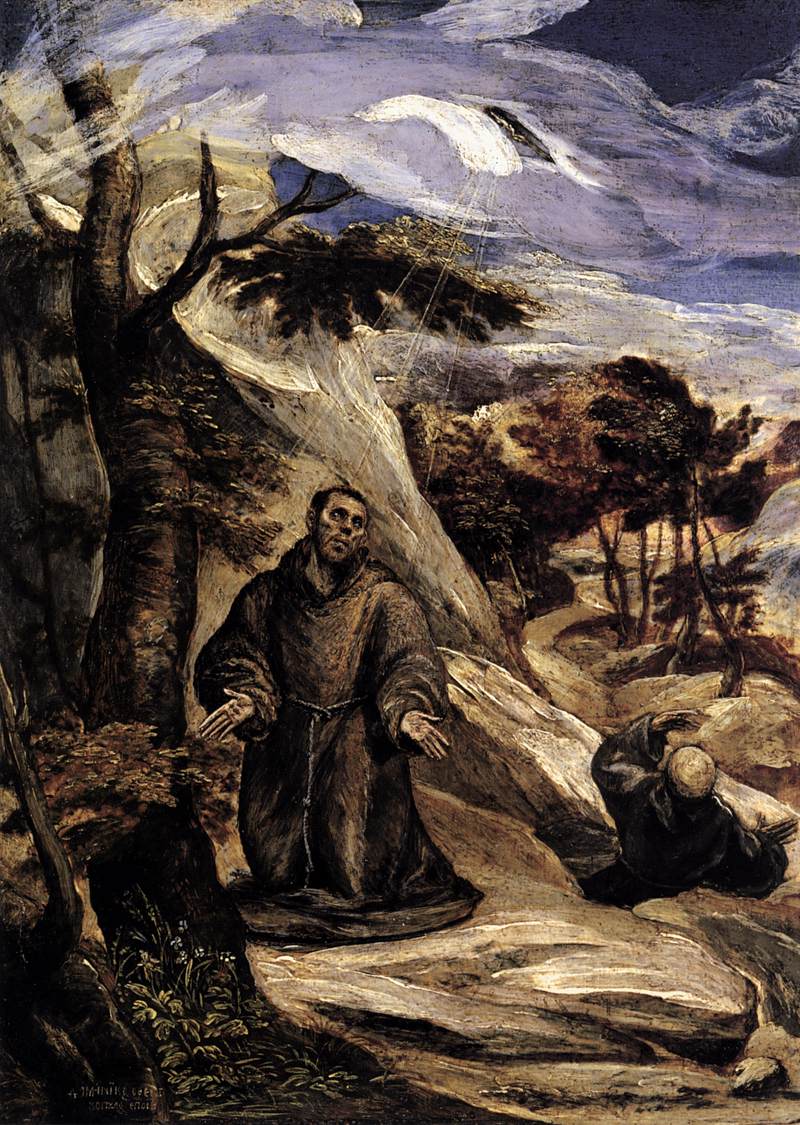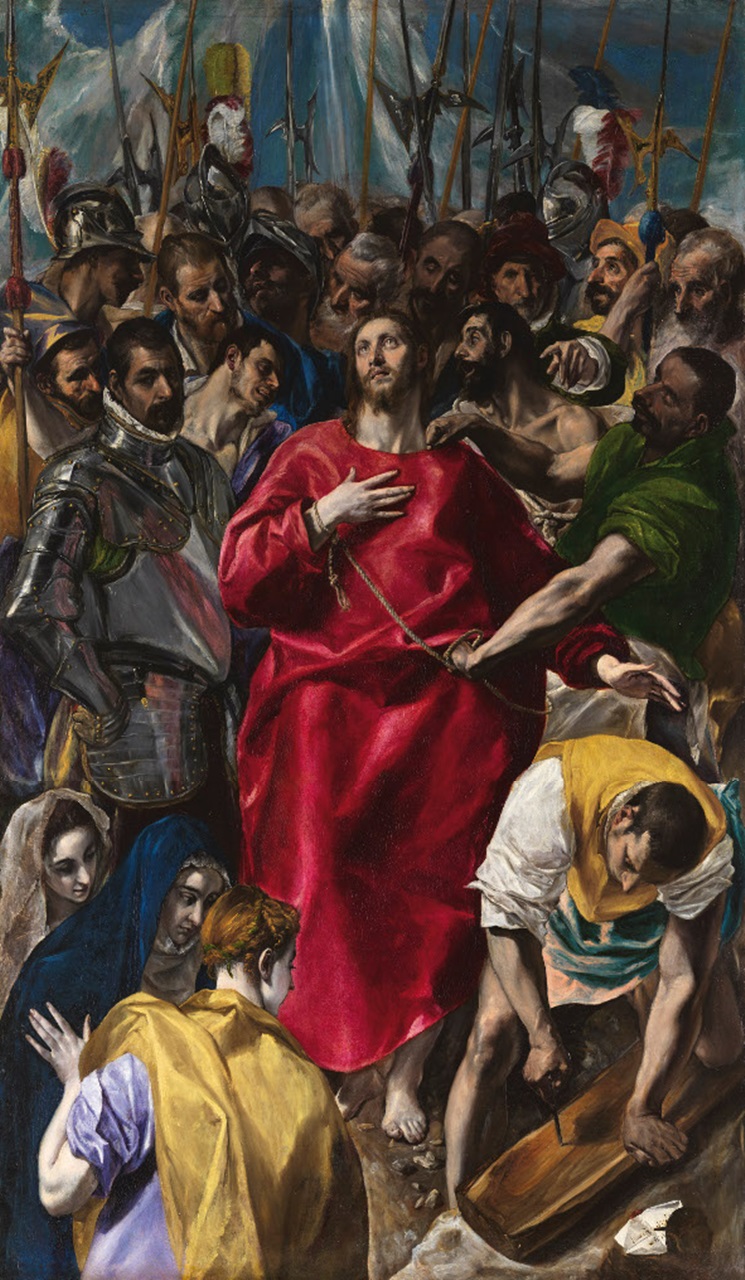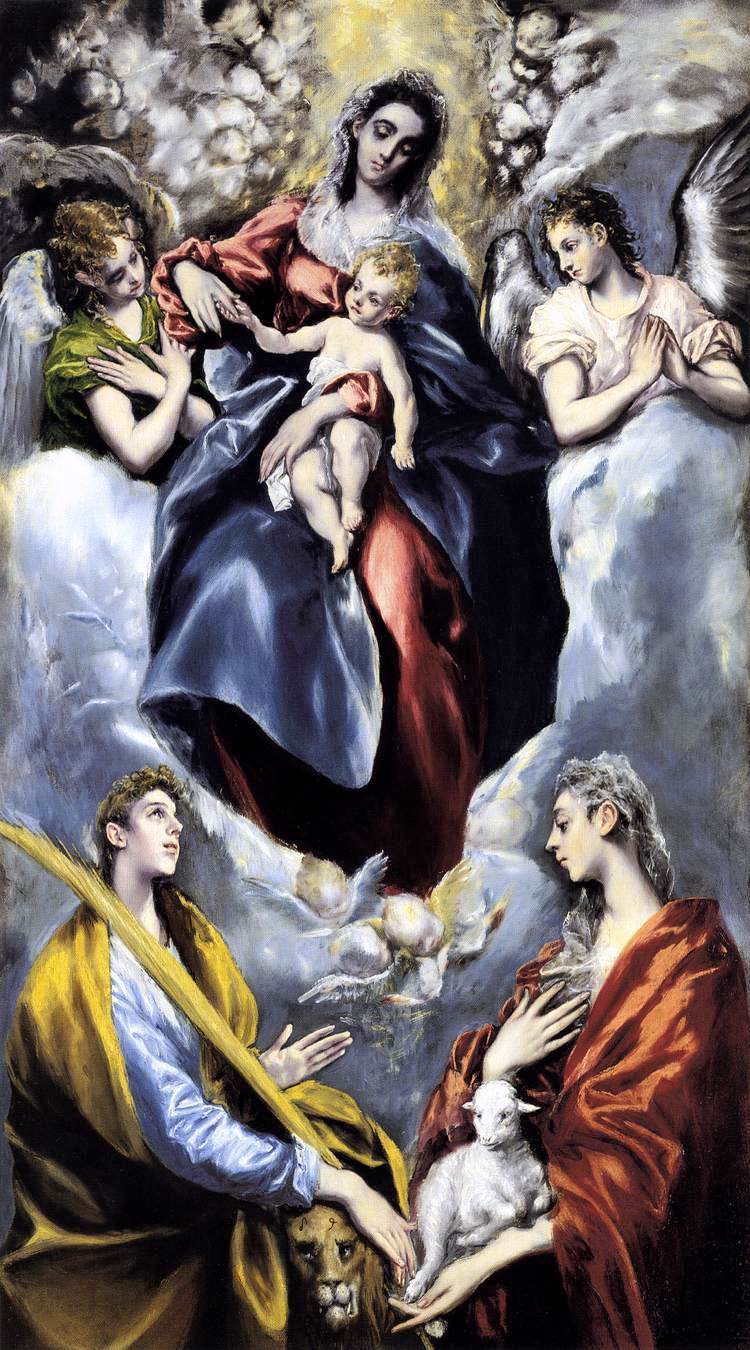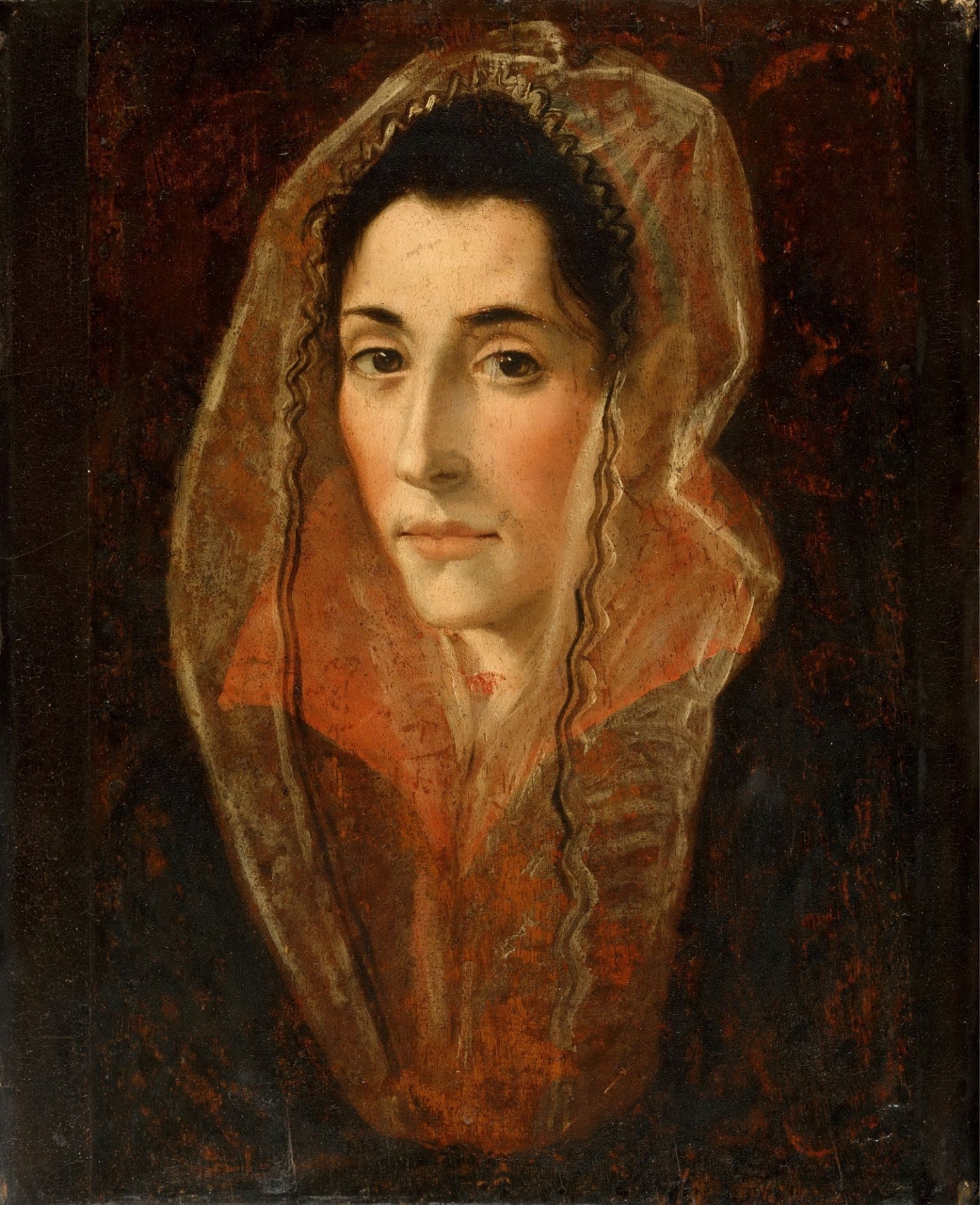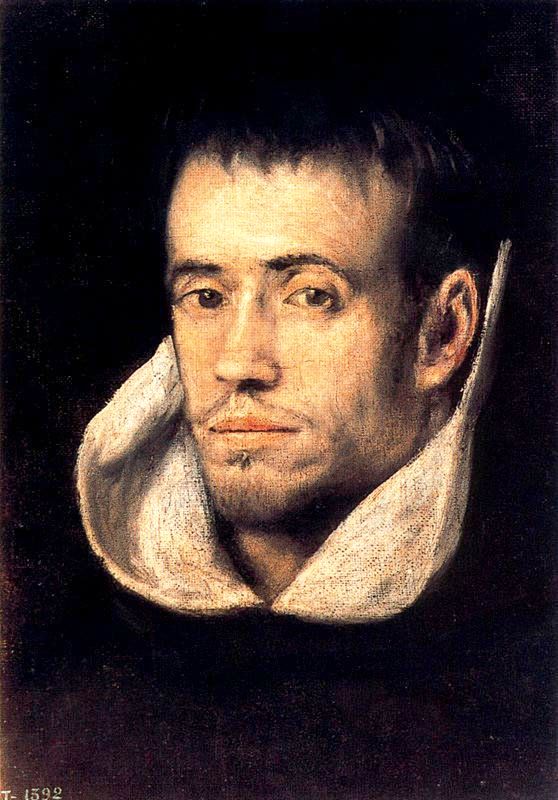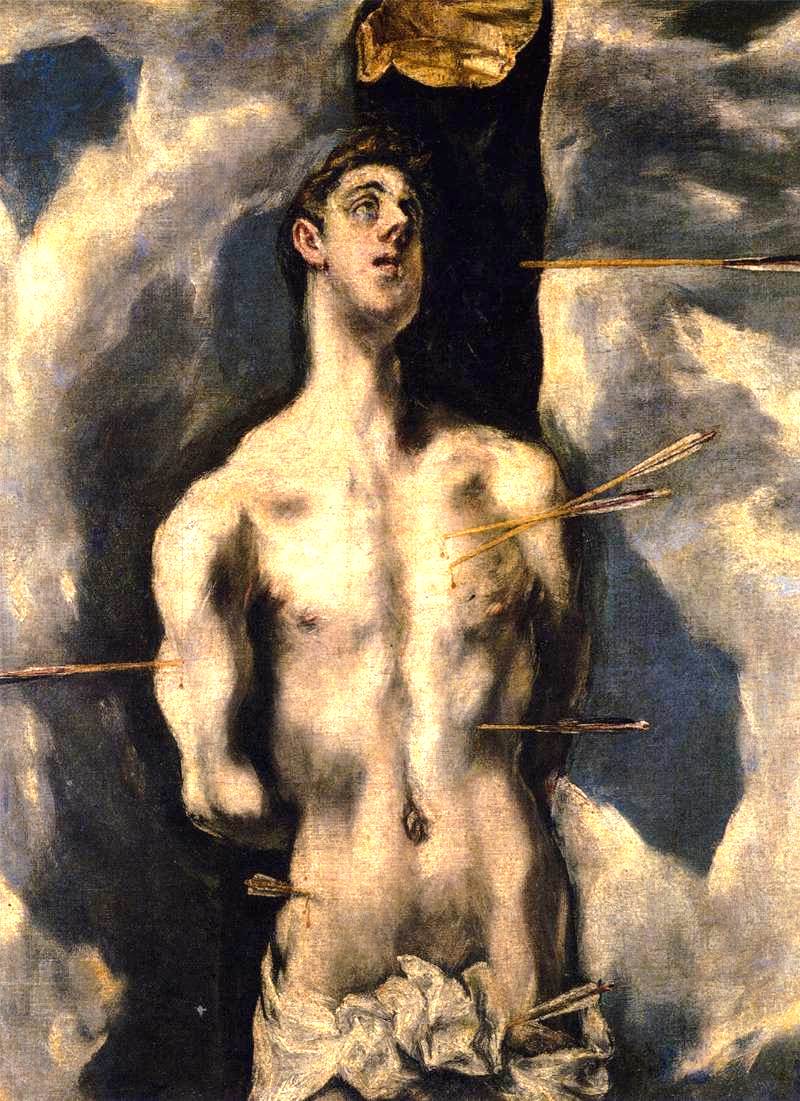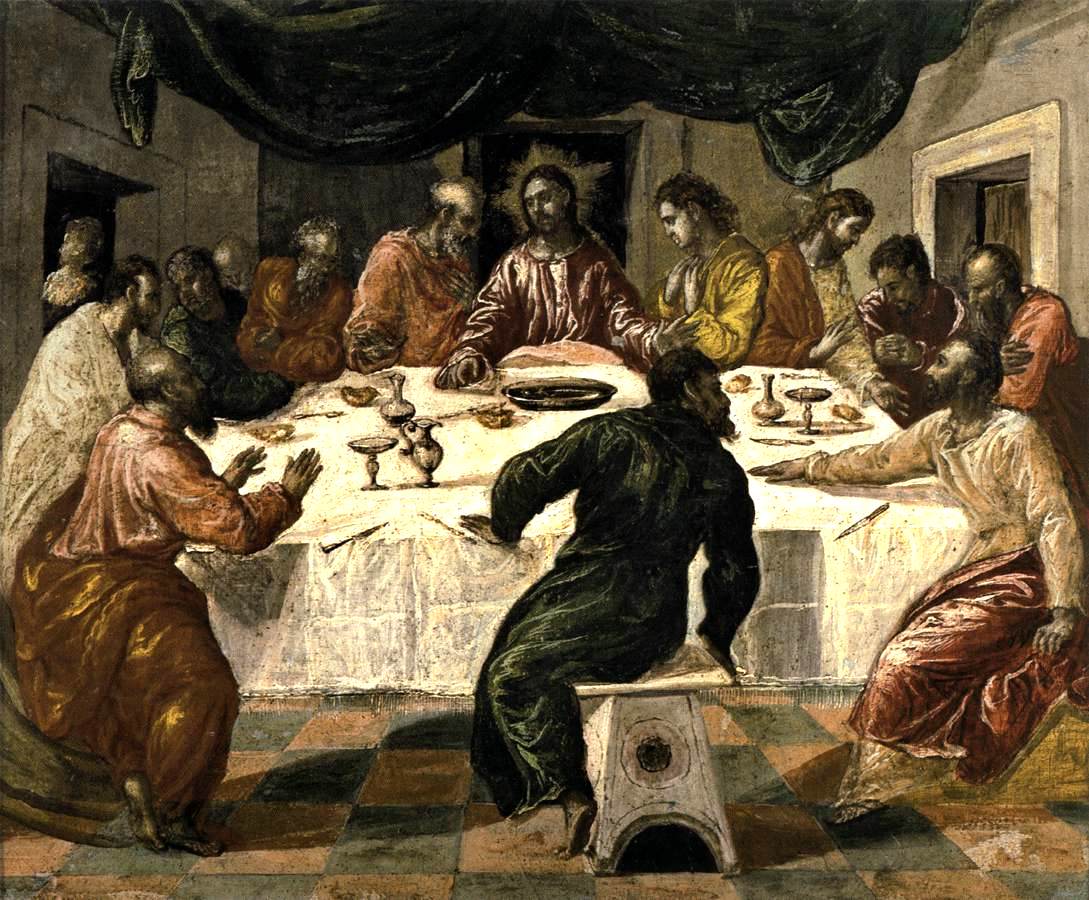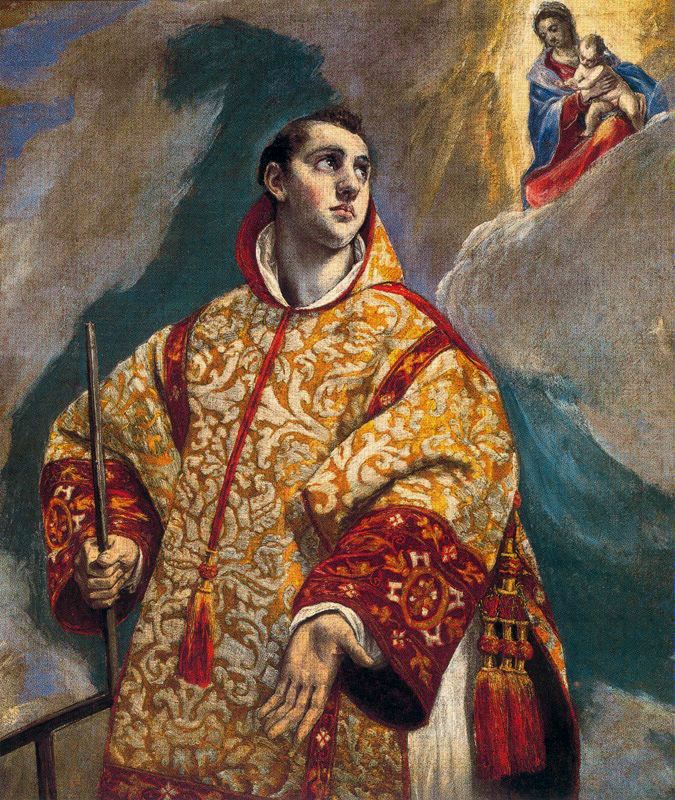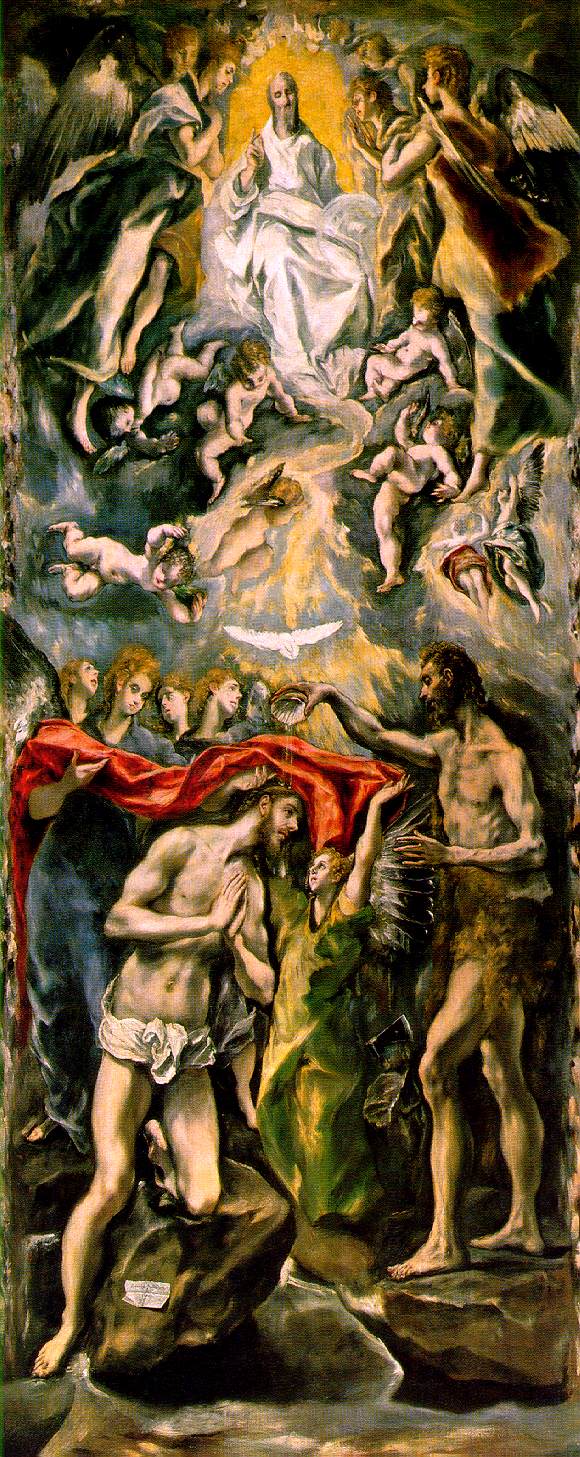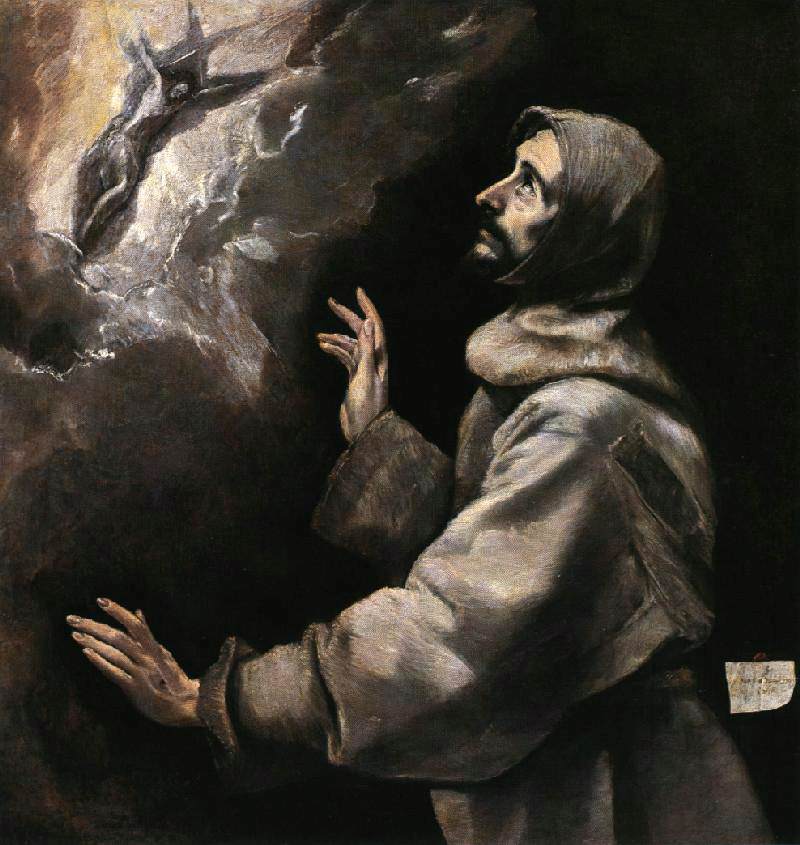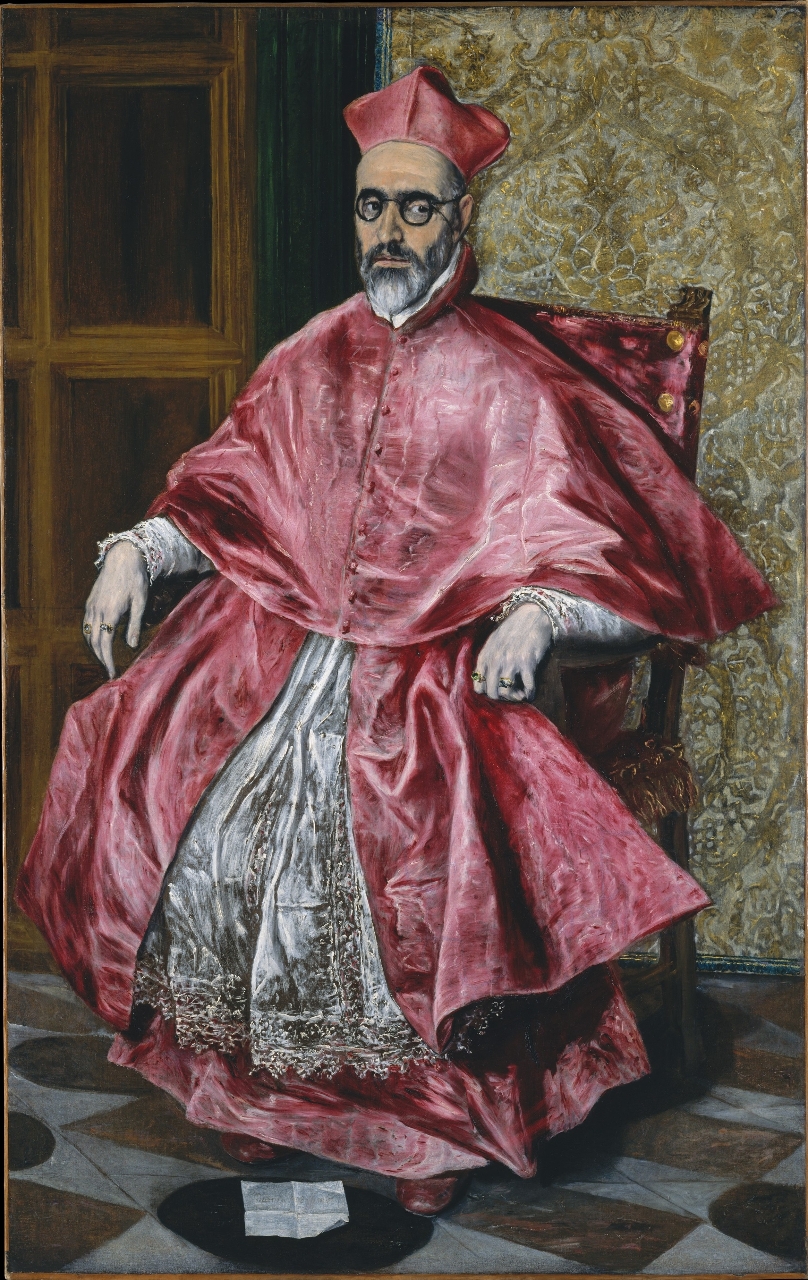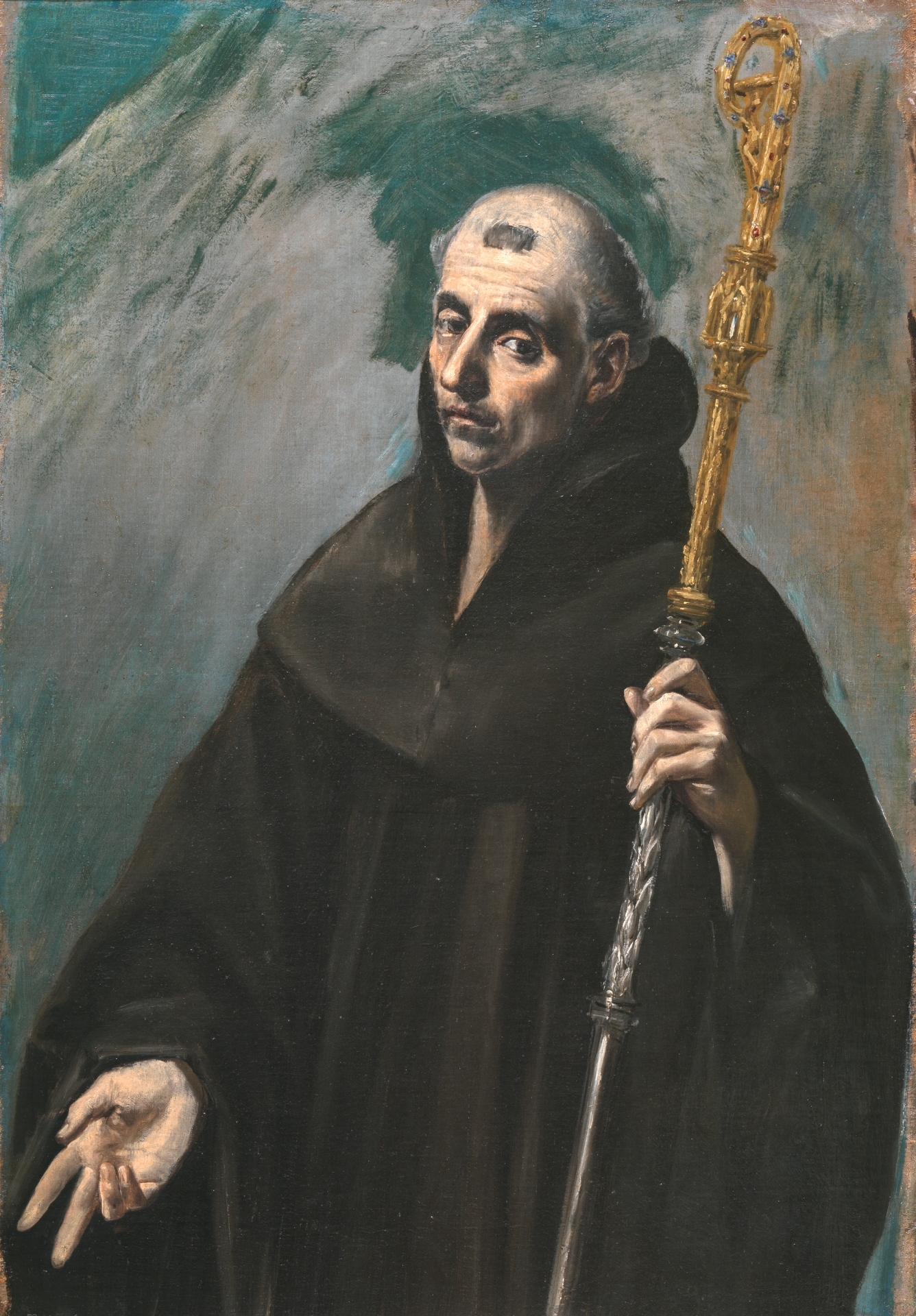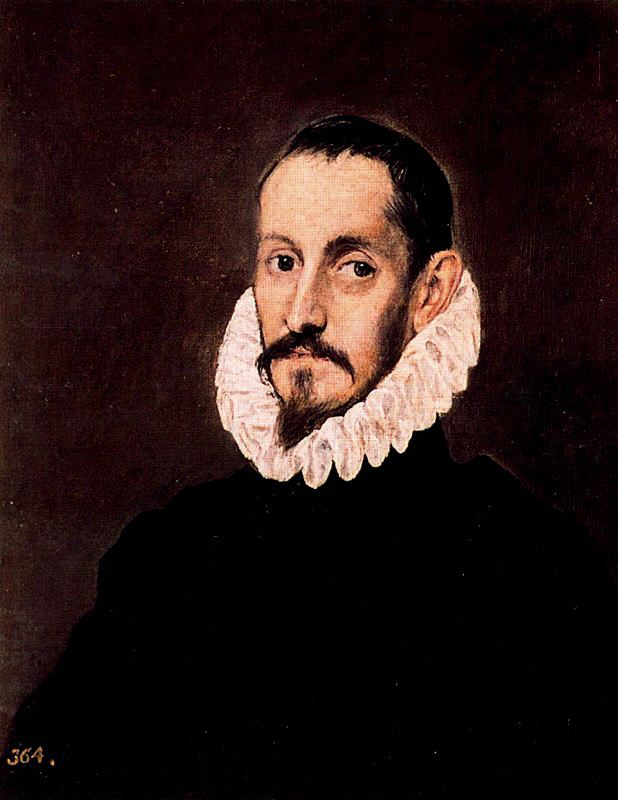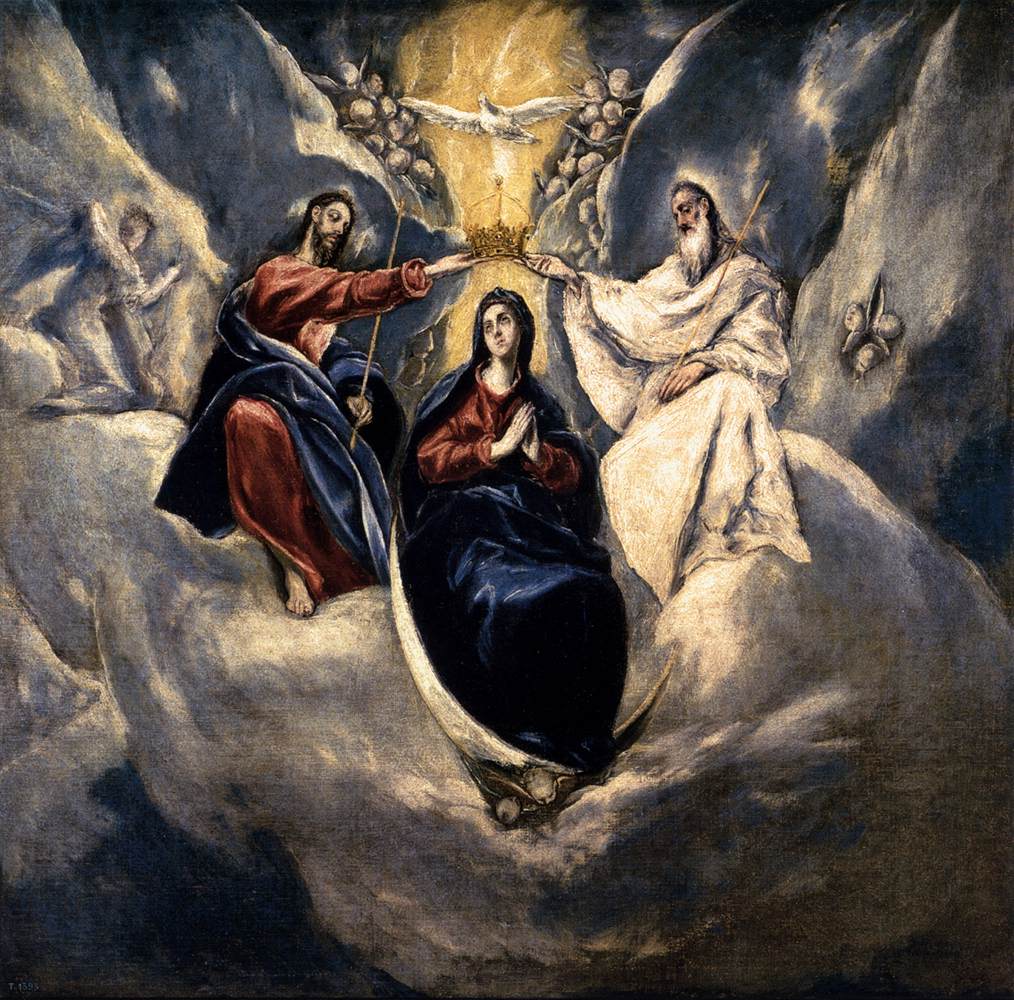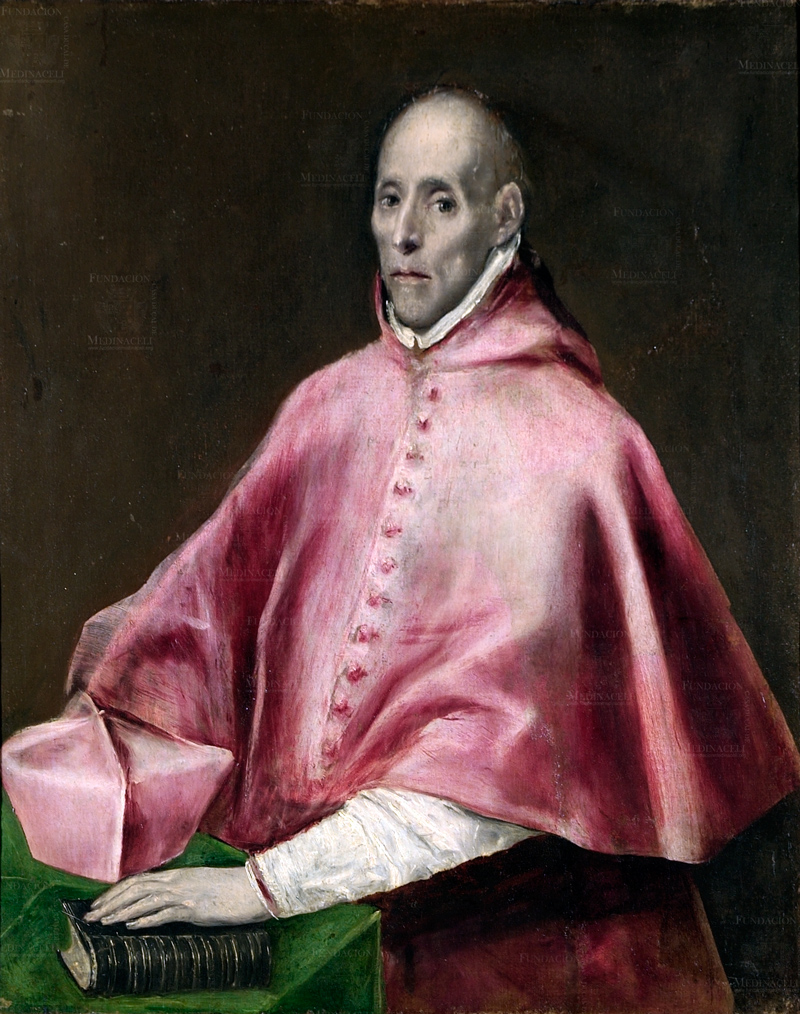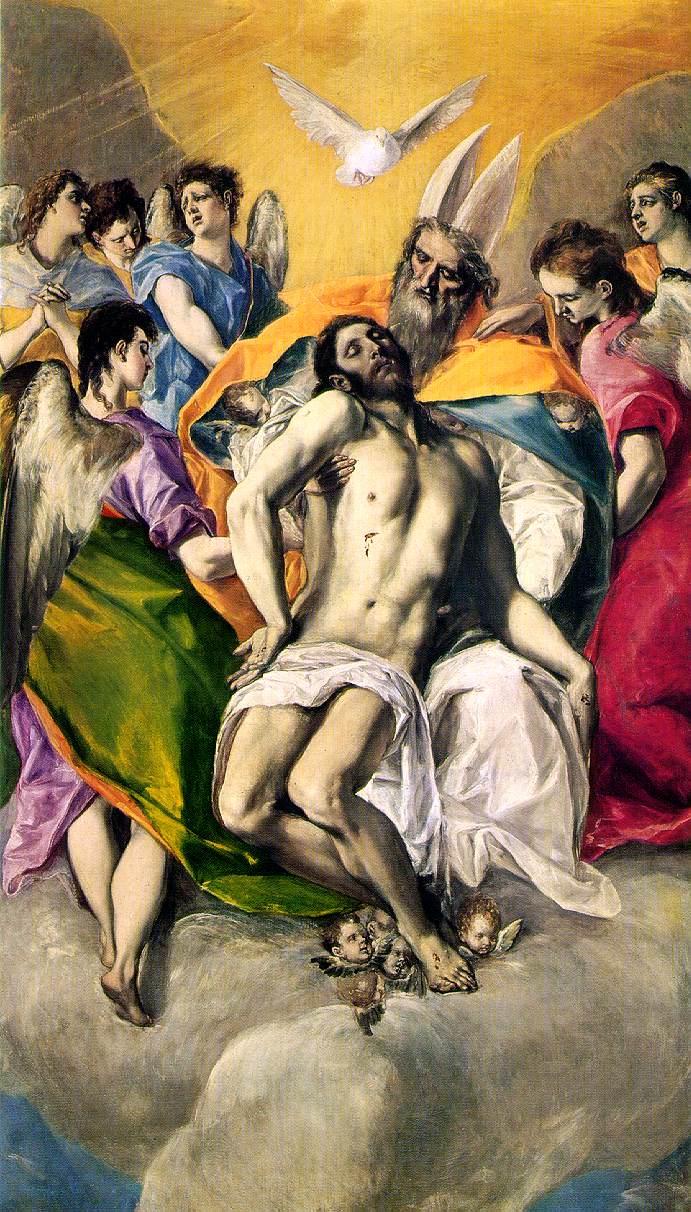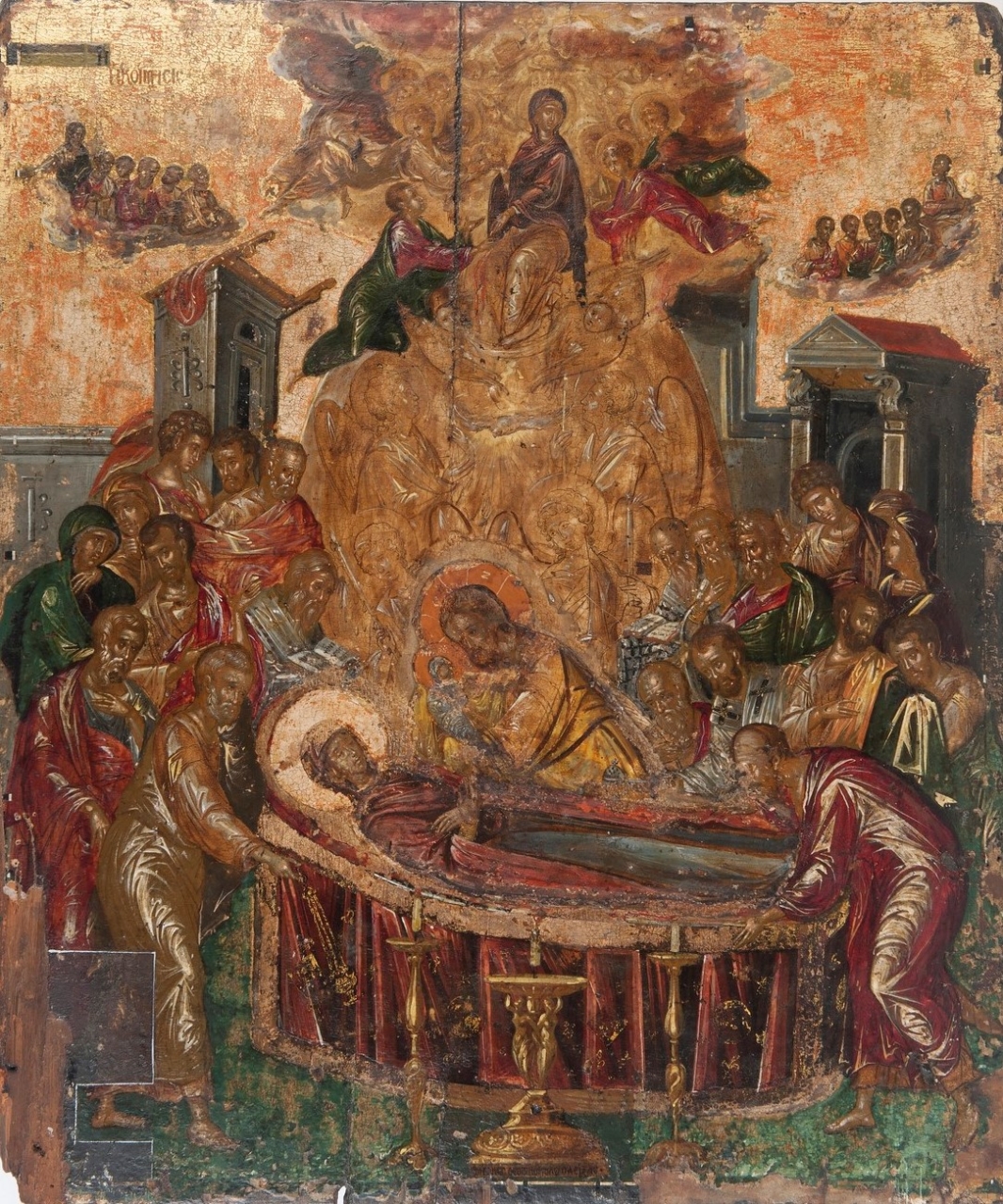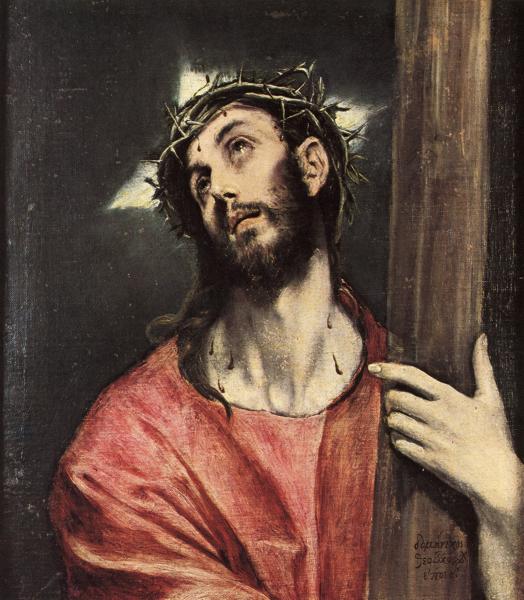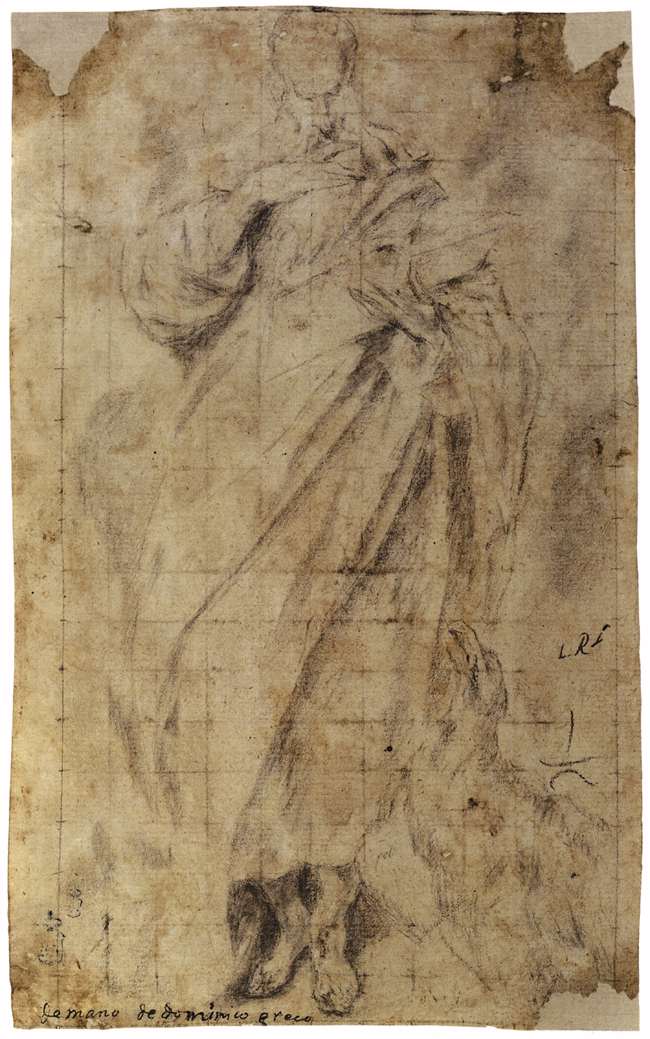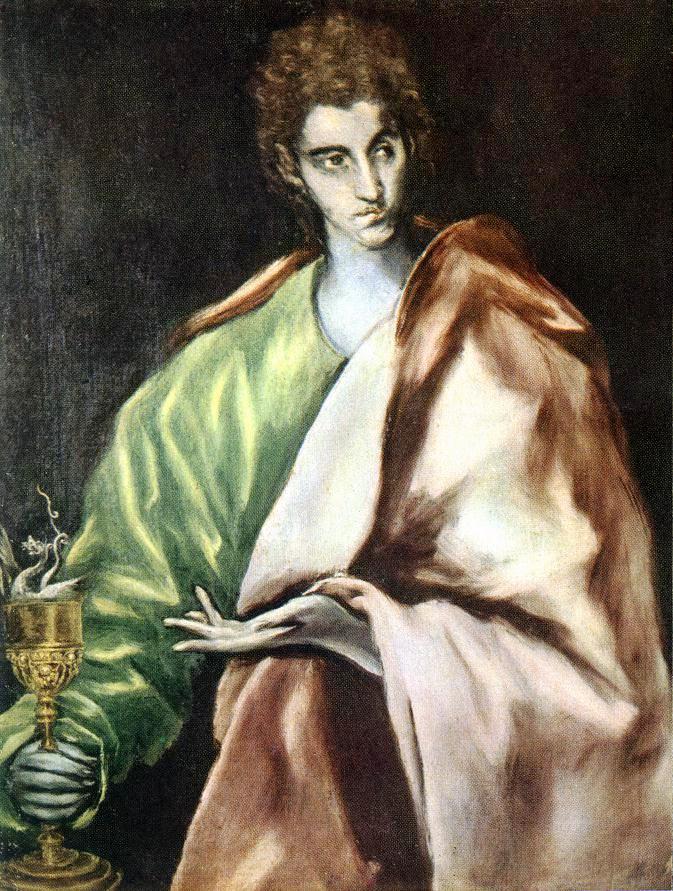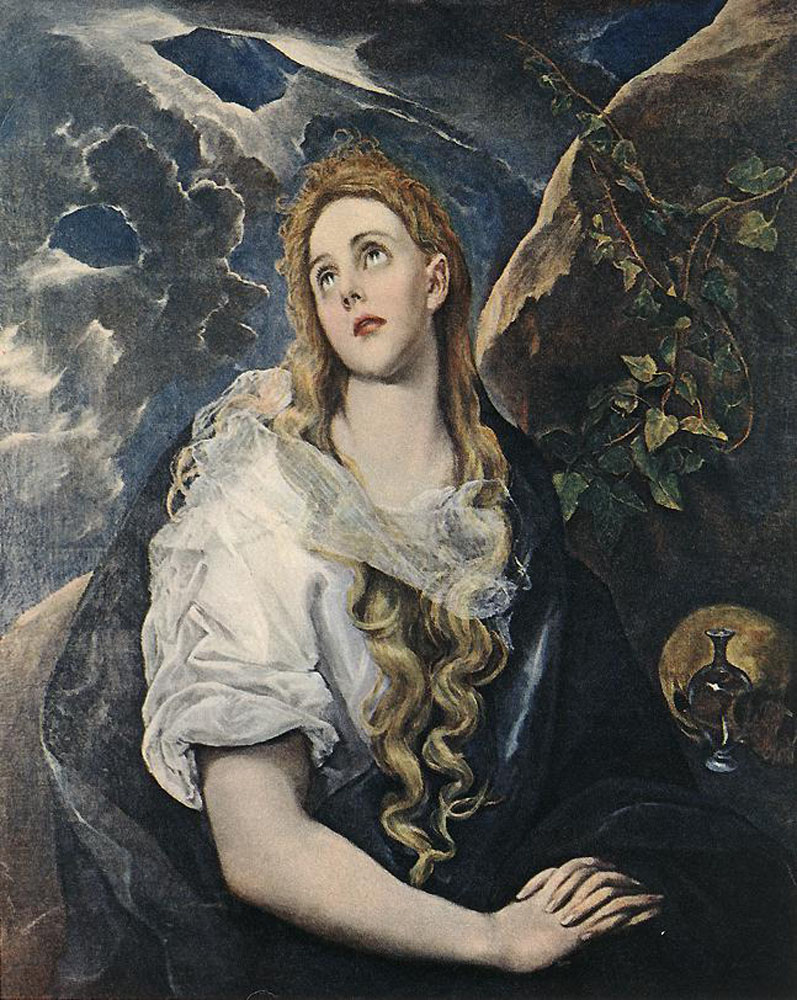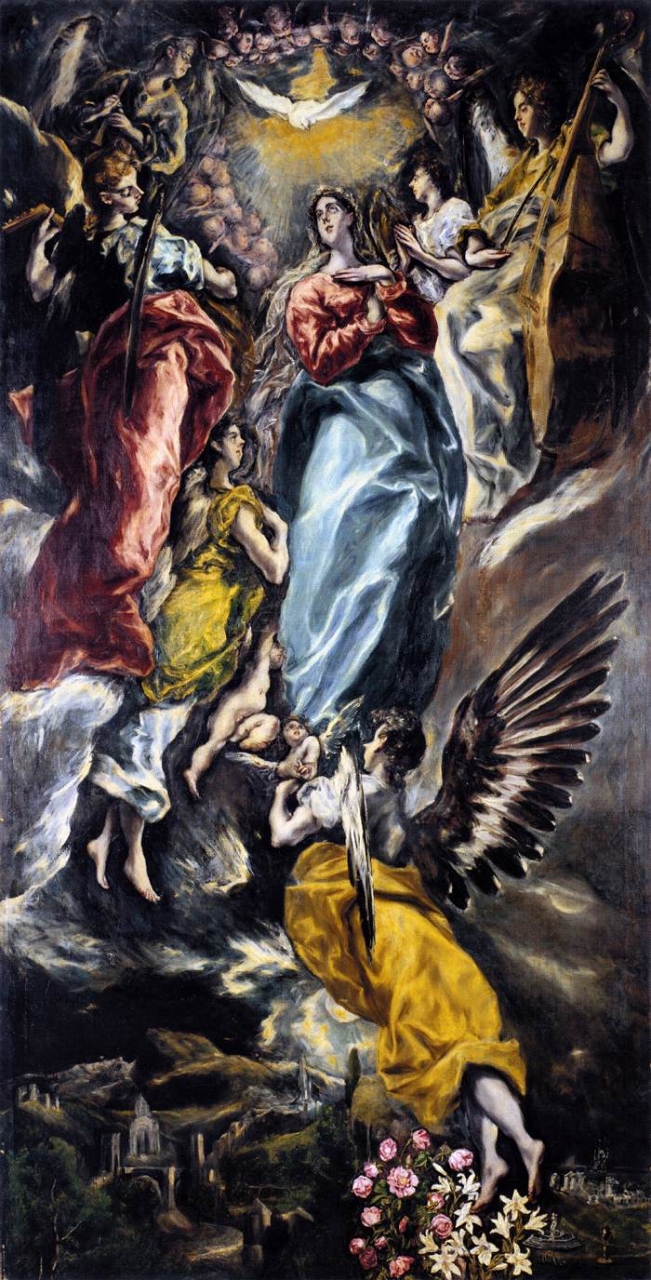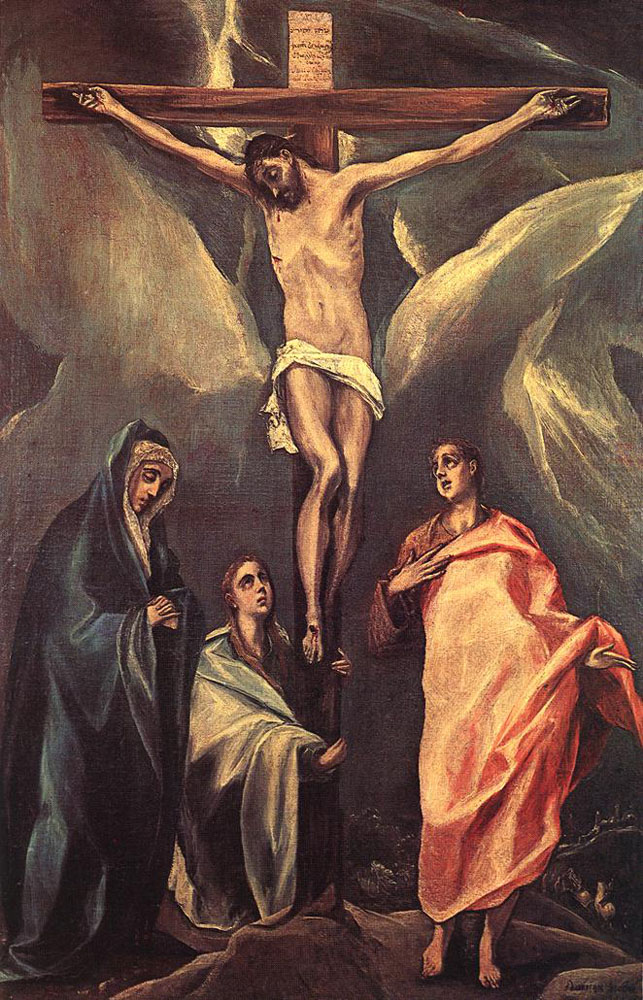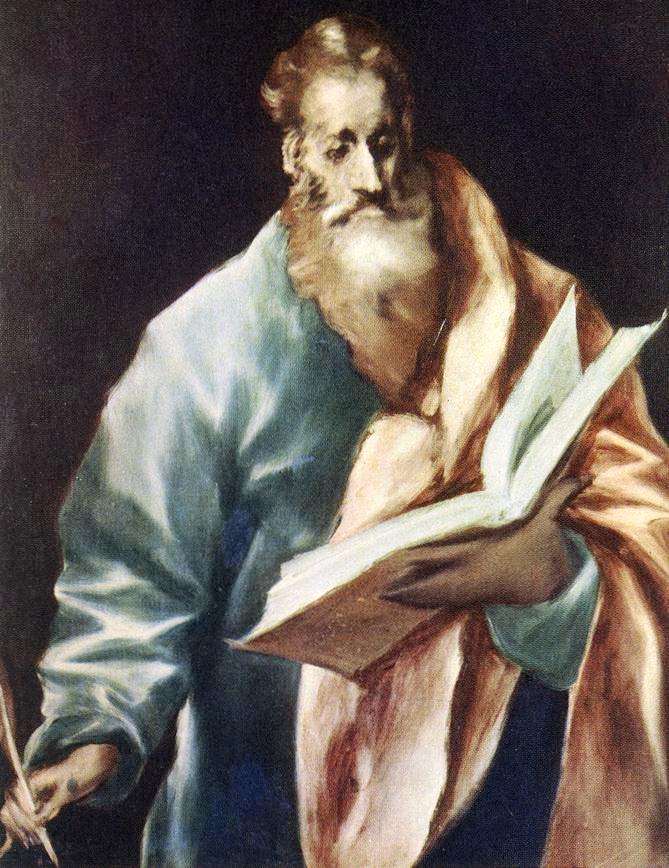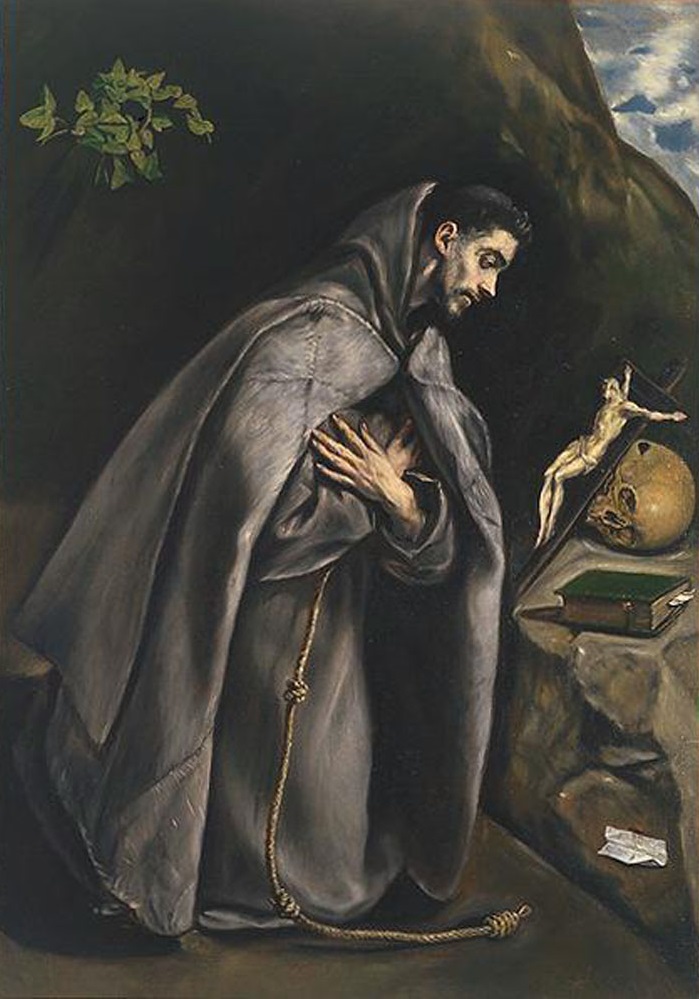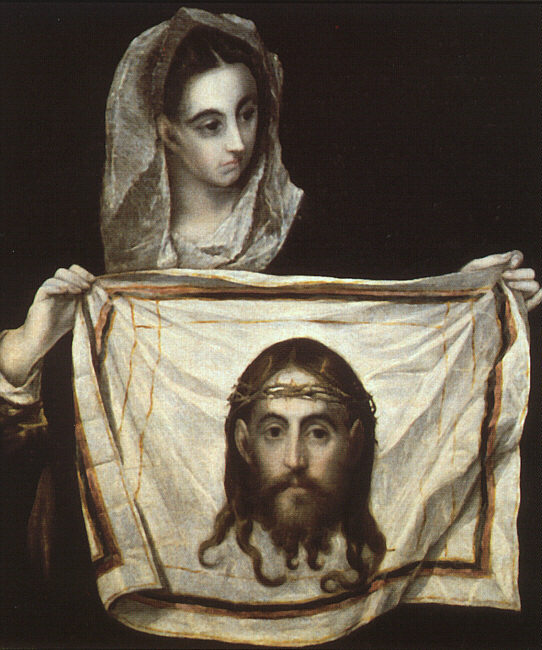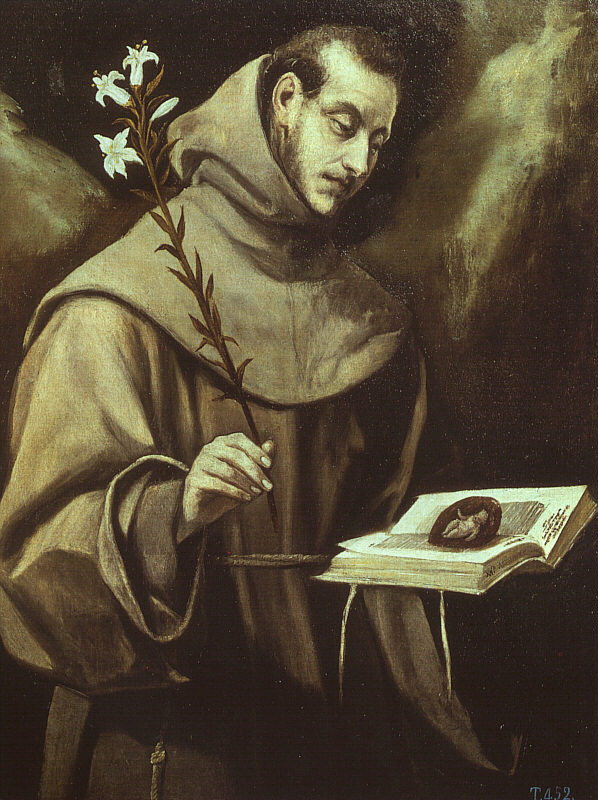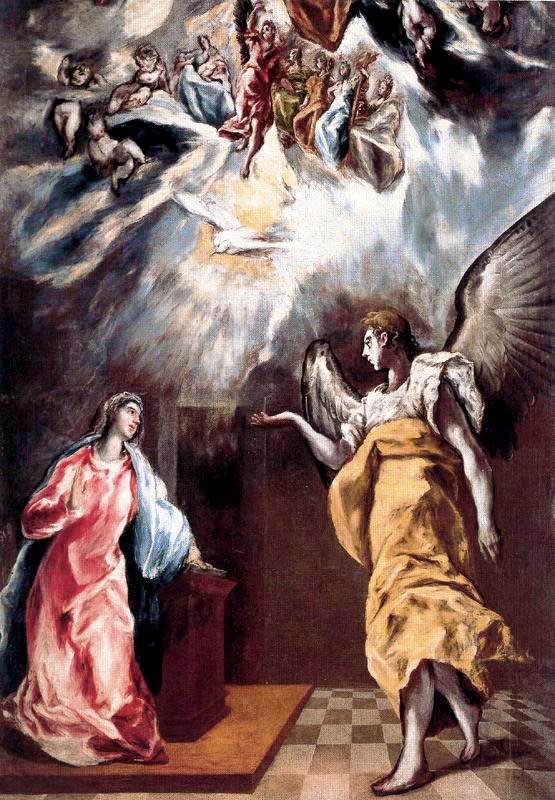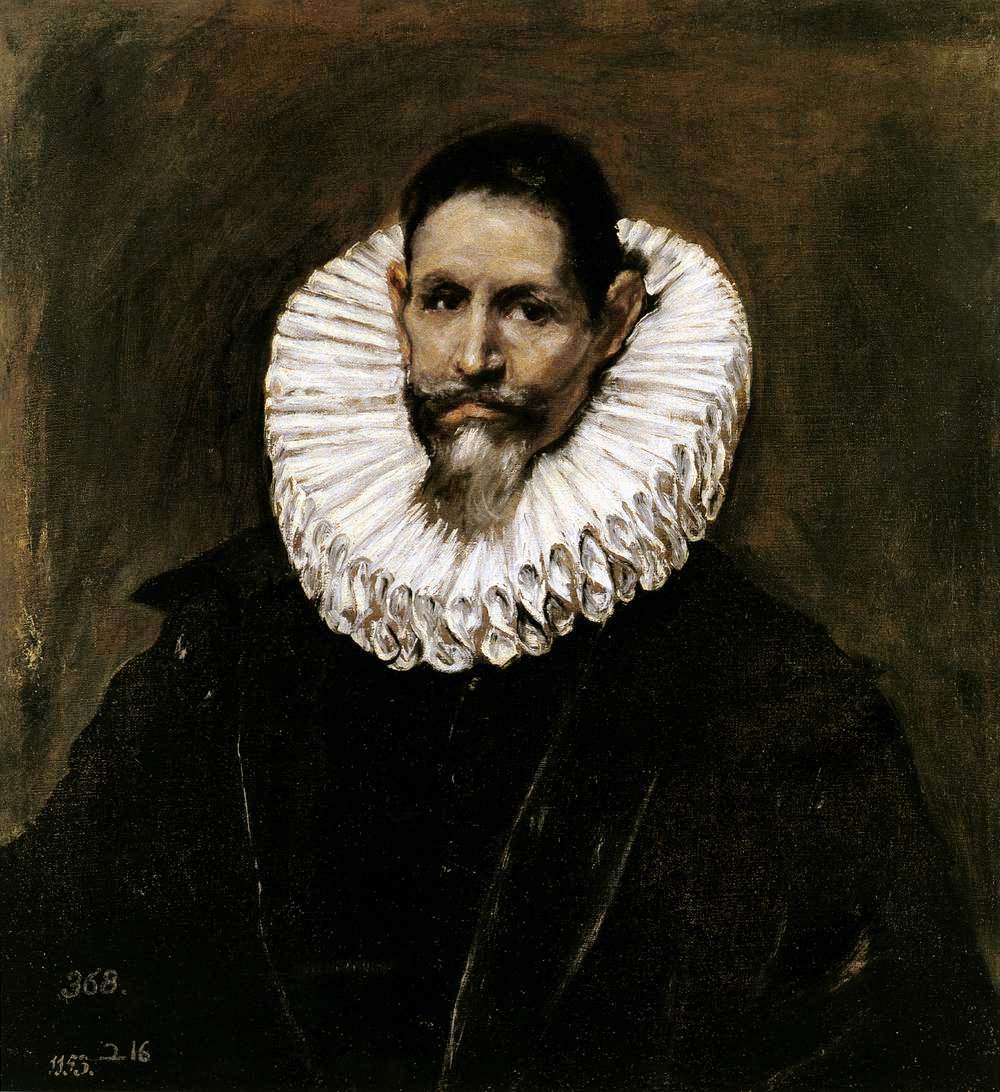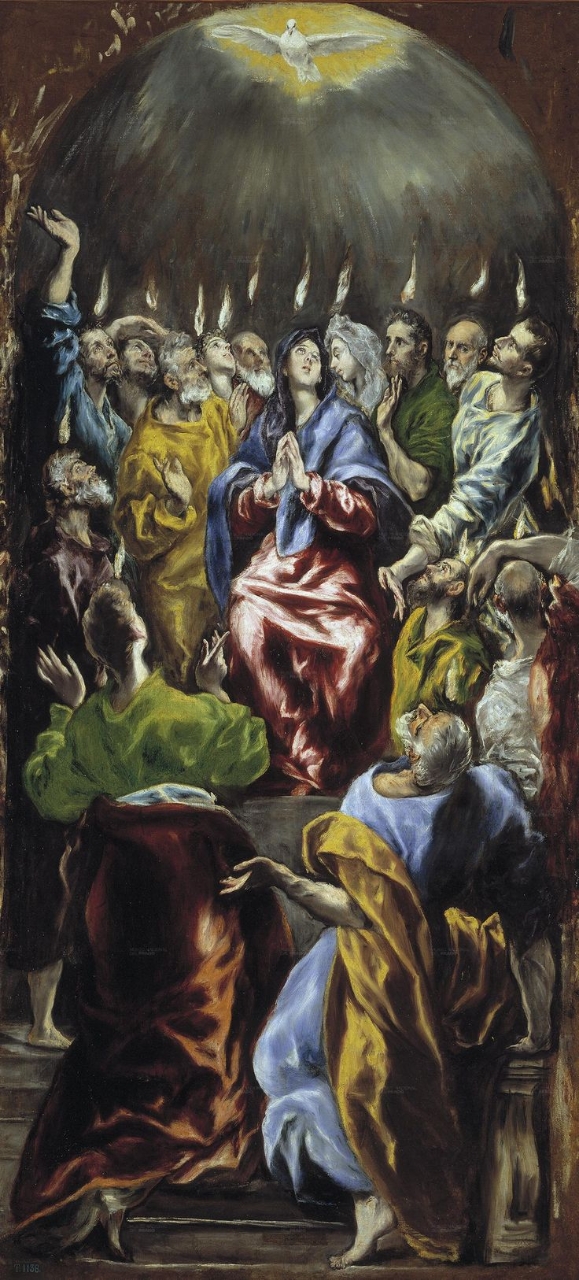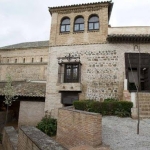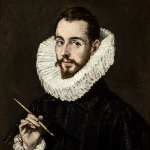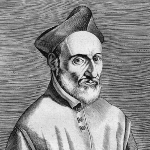-
Opening of the Fifth Seal
(also known as The Vision of Saint John)
-
Portrait of a Cardinal
(Probably Don Fernando Niño de Guevara)
-
An Allegory with a Boy Lighting a Candle in the Company of an Ape and a Fool
((Fábula))
-
St. John the Evangelist and St. Francis
-
Christ driving the traders from the temple
-
Christ as Saviour
-
St. Joseph and the Christ Child
-
St. Jerome Penitent
-
Holy Family
-
The Repentant Peter
-
St. Idelfonso
-
St. Sebastian
-
Holy Family with St. Anne
-
St. Luke painting the Virgin
-
St. Bartholomew
-
St. Dominic praying
-
Portrait of a doctor Rodrigo de la Fuente
-
The Visitation
-
The Adoration of the Name of Jesus
-
Annunciation
-
Apostle St. Philip
-
The Burial of the Count of Orgaz
-
St. John the Evangelist
-
St. Paul and St. Peter
-
St. Martin and the Beggar
-
Portrait of Giulio Clovio
-
Christ on a Cross
-
View of Toledo
-
Christ driving the traders from the temple
-
Apostle St. James the Less
-
St. Luke
-
Mount Sinai
-
Christ Healing the Blind
-
The Annunciation
-
Christ Healing the Blind
-
St. Francis receiving the stigmata
-
St. Francis Praying
-
Marriage at Cana
-
St Francis's vision of the flaming torch
-
The Knight with his hand on his breast
-
Apostle St. Peter
-
The Ecstasy of St. Francis of Assisi
-
St. Peter and St. Paul
-
Portrait of Alonso de Herrera
-
A boy blowing on an ember to light a candle
-
The Holy Family
-
Virgin Mary
-
St. Bernardino of Siena
-
Portrait of Andrea Palladio
-
Portrait of the Poet Alonso Ercilla y Zuniga
-
Christ in Agony on the Cross
-
St. Idelfonso
-
The Penitent Magdalene
-
Portrait of Pope Pius V
-
Portrait of a man
-
St. Jacobus
-
Portrait of a young man
-
Laocoon
-
Vincenzo Anastagi
-
Apostle St. Andrew
-
Madonna of Charity
-
Deposition in the tomb
-
Baptism of Christ
-
Study of a Man
-
Adoration of the Shepherds
-
St. Louis King of France with a Page
-
Portrait of Fray Hortensio Felix Paravicino
-
Martyrdom of St. Maurice and His Legions
-
Adoration of the Shepherds
-
An Elderly Gentleman
-
St. Francis and brother Leo meditating on death
-
The Holy Family with St. Anne and the Young St. John the Baptist
-
St. Jerome as Cardinal
-
A Prelate
-
The Entombment of Christ
-
Feast in the House of Simon
-
The Virgin of the Immaculate Conception
-
Apostle St. Thaddeus (Jude)
-
The Saviour of the World
-
Antonio de Covarrubias
-
Adoration of the Shepherds
-
Stigmatisation of St. Francis
-
The Agony in the Garden
-
Apostle St. Andrew
-
Baptism of Christ
-
St. Jerome
-
The Holy Trinity
-
Apostle St. Thomas
-
Portrait of a gentleman from Casa de Leiva
-
St. John the Baptist
-
Christ in the Olive Garden
-
Lady with a Flower in Her Hair
-
Assumption of the Virgin
-
Pietà (The Lamentation of Christ)
-
St. Sebastian
-
Portrait of Don Rodrigo Vasquez
-
Concert of Angels
-
View and plan of Toledo
-
Christ
-
Coronation of the Virgin
-
Apostle St. Paul
-
St. John the Baptist
-
Baptism of Christ
-
St. Andrew and St. Francis
-
Christ on the cross adored by two donors
-
Christ carrying the cross
-
The Virgin of the Immaculate Conception and St. John
-
Virgin Mary
-
St. John the Evangelist
-
Portrait of Diego de Covarrubias
-
The Marriage of the Virgin
-
Portrait of Juan Alfonso de Pimentel y Herrera
-
Resurrection
-
St. Peter
-
Portrait of a man
-
Apostle St. Simon
-
Saint James the Great
-
Allegory of Camaldolese Order
-
Pietà
-
The Nativity
-
St. James the Less
-
St. Peter in Penitence
-
The Agony in the Garden
-
Annunciation
-
Julian Romero de las Azanas and his patron St. Julian
-
The Resurrection
-
Penitent Magdalene
-
Coronation of the Virgin
-
St. Francis receiving the stigmata
-
The Disrobing of Christ
-
The Virgin and Child with St. Martina and St. Agnes
-
Female Portrait
-
Portrait of Dominican Friar
-
St. Sebastian
-
The Last Supper
-
Apparition of the Virgin to St. Lawrence
-
The Baptism
-
St. Francis receiving the stigmata
-
Saint Benedict
-
Portrait of a man
-
Coronation of the Virgin
-
Portrait of Cardinal Tavera
-
Ascension of Jesus
-
Dormition of the Virgin
-
Christ carrying the cross
-
Apostle St. John the Evangelist
-
St. Mary Magdalene
-
The Virgin of the Immaculate Conception
-
Christ on the cross with two Maries and St. John
-
Apostle St. Matthew
-
St. Francis Praying
-
St. Veronica with the Holy Shroud
-
St. Antony of Padua
-
Annunciation
-
Portrait of Jeronimo de Cevallos
-
Pentecost








